Canaux
108470 éléments (108470 non lus) dans 10 canaux
 Actualités
(48730 non lus)
Actualités
(48730 non lus)
 Hoax
(65 non lus)
Hoax
(65 non lus)
 Logiciels
(39066 non lus)
Logiciels
(39066 non lus)
 Sécurité
(1668 non lus)
Sécurité
(1668 non lus)
 Referencement
(18941 non lus)
Referencement
(18941 non lus)
éléments par Barclay Ballard
BetaNews.Com
-

Things to keep an eye on in the eCommerce space
Publié: novembre 23, 2016, 6:59am CET par Barclay Ballard
ECommerce has come a long way in recent years. We’ve all heard about how online shopping was responsible for the death of the high street, but eCommerce is now about much more than the likes of Amazon and eBay. As an industry, eCommerce is expected to be worth $6.7 trillion by 2020 and now encompasses relatively recent technological developments such as mobile payments and cryptocurrencies. The convenience offered by eCommerce is proving hugely popular with consumers and so it is not surprising that some of the tech industry’s biggest players are looking to dominate the market. However, eCommerce is becoming… [Continue Reading] -

What you need to know about mobile payments
Publié: novembre 22, 2016, 11:36am CET par Barclay Ballard
Mobile payments have actually been around for a few years now, but have only recently made the kind of impact that makes consumers and businesses take note. Unsurprisingly, mobile payments refer to financial transactions that are performed using a mobile device, most commonly a smartphone. As an alternative method of payment to debit cards or cash, mobile payments have gained in popularity all over the world, with businesses ranging from tech giants to independent startup all vying for market share in this fledgling industry. As with any other new technological phenomenon, mobile payments are sure to create as many disruptions… [Continue Reading] -

What you need to know about supply chain management
Publié: novembre 21, 2016, 10:40am CET par Barclay Ballard
Supply chain management (SCM) is a vitally important business feature for many industries, having an impact on every aspect of the supply chain, from supplier to customer. Every detail of this process must be managed carefully, as even the smallest mistake could lead to delays, customer frustration and lost revenue. What’s more, supply chain management does not only refer to the movement of physical products through the supply chain. Any data associated with these products, including invoices, schedules and delivery information, also needs to be managed appropriately to ensure that businesses have visibility and clarity across the length of the… [Continue Reading] -

What you need to know about enterprise mobility
Publié: novembre 15, 2016, 12:23am CET par Barclay Ballard
The importance of mobility in the workplace has grown significantly in recent years, driven by technological innovations like smartphones and web-based applications. The traditional office confines have been eroded and now customers, clients and employees demand the tools required to work whenever and wherever they need to. Businesses that are unwilling to embrace mobility, or do so ineffectively, risk being overtaken by a competitor that is able to provide the flexibility required by the modern world of work. There are legitimate concerns when it comes to business mobility, but fortunately there are also a number of solutions that allow organizations… [Continue Reading] -

What you need to know about business broadband
Publié: novembre 14, 2016, 10:23pm CET par Barclay Ballard
Businesses are often told that the only way to succeed is by embracing the newest, most innovative technologies. The Internet of things, wearables, 3D printing, augmented reality, the list of disruptive technologies that will make or break your organization is never-ending. However, it is often the less glamorous, but more fundamental technology, that actually determines everyday success. Business broadband, although hardly cutting-edge, is vital in the "always-on", connected world that we live in. No matter what industry you work in, broadband Internet connectivity is likely to underpin many of your daily tasks. Whether you need to stream video files, access… [Continue Reading] -

What you need to know about human capital management
Publié: novembre 10, 2016, 8:04pm CET par Barclay Ballard
Employees are often a company’s largest expense, but they can also be their most important asset. After all, without talented and dedicated staff at every level of the business, organizations will fall behind in terms of productivity, leadership and creativity. Although human resources has traditionally been tasked with handling all matters people-related, as this facet of business management has become increasingly complex and dynamic it has largely gone by another name. Human capital management (HCM) is often broken down into three categories (workforce acquisition, workforce management and workforce optimisation) and incorporates a vast array of business processes, ranging from the… [Continue Reading] -

What you need to know about enterprise connectivity
Publié: novembre 9, 2016, 7:31pm CET par Barclay Ballard, Ian Barker
Connectivity is vital for all businesses. Whether you need to communicate with customers, clients or employees, or simply rely on it to deliver your service, the importance of connectivity cannot be overstated. What’s more, this importance is clearly growing. In the always-on, cloud-based, mobile-first digital world that we inhabit, enterprise connectivity is not merely desirable -- it is expected at all times. Connectivity, of course, means different things to different businesses and the level of connectivity that you are able to provide is likely to depend on a number of factors. Do you have the technology required, including the hardware… [Continue Reading] -

What you need to know about enterprise collaboration
Publié: novembre 7, 2016, 2:48pm CET par Barclay Ballard, Ian Barker
Enterprise collaboration, sometimes abbreviated to EC or ECS for enterprise collaboration systems, is becoming an increasingly vital tool for many businesses. Essentially, it comprises various forms of hardware and software used to enable the seamless and efficient sharing of information and resources within a particular company. Enterprise collaboration systems can simply be relatively common communication tools such as email and instant messaging. Increasingly though businesses are turning to more bespoke solutions that combine these functions with project management and document management software. It is also worth noting that enterprise collaboration can prove beneficial for teams based in the same office,… [Continue Reading] -

What you need to know about social relationship management
Publié: novembre 4, 2016, 2:38pm CET par Barclay Ballard
The importance of social media to businesses has long been recognized. According to a recent survey, time spent on social platforms represents 28 percent of all online activity, so if it’s important to customers, it naturally becomes important for companies too. While some firms are content to carry out intermittent checks on Facebook and Twitter, many businesses are now demanding more nuanced ways of monitoring social media content. Social relationship management, or SRM, is a software solution that promises to strategically analyze social network interactions to give your business a competitive edge. With organizations from a broad spectrum of industries… [Continue Reading] -

What you need to know about unified communications
Publié: novembre 3, 2016, 2:34pm CET par Barclay Ballard
Unified communications (UC) refers to a technology whereby a number of different communication media or platforms are connected and accessed as if they were a single entity. In practical terms, this enables businesses to employ a less fragmented approach to communication, allowing them to access and manage their internal and outward comms more easily. The breadth of applications covered by unified communications is relatively wide and growing to accommodate new methods of interaction. UC may incorporate email, instant messaging, smartphones, landlines, fax and social media outlets. Unified communications tools are also capable of handling both audio and video content, which… [Continue Reading] -

What you need to know about smart cities
Publié: novembre 2, 2016, 9:29pm CET par Barclay Ballard
Imagine living somewhere where traffic jams were a thing of the past, where ambulance crews started on-route to an emergency before anyone had dialed 911 and where critical infrastructure operated at maximum efficiency. This utopian city may not currently be possible, but the Internet of things could change that in the not too distant future. By connecting various aspects of the urban landscape to the Internet, local administrators will gain access to countless extra data sets that could help them provide better services for their citizens. These smart cities not only promise to improve the lives of their inhabitants, but… [Continue Reading] -

What you need to know about automation
Publié: novembre 2, 2016, 2:27pm CET par Barclay Ballard
When businesses think of automation, they probably conjure up images of simplicity, efficiency, lower costs and increased productivity. Of course, this is something of an oversimplification and there are certainly challenges to adopting workplace automation. However, it is not hard to see why more and more industries are automating their business processes. Whether it’s via robots or software, automation can eliminate the repetitive, manual tasks that, while essential, are a huge drain on employee time. Automation lets members of staff direct their energies into more productive areas, such as coming up with innovative new ideas. Before embracing automation, however, organizations… [Continue Reading] -

What you need to know about data centers
Publié: novembre 1, 2016, 5:42pm CET par Barclay Ballard
Data centers, in the sense of a centralized space where business information is stored, have always been important, but as we move towards an increasingly digital economy, and indeed, way of life, they have taken on even greater significance. The importance of data centers to our everyday actions can be glimpsed simply by taking a look at the amount of energy that they consume. According to the National Resource Defense Council, the Internet, which relies on data center infrastructure for its utility, represents 1.1 to 1.5 percent of all global electricity use -- with the associated annual greenhouse gas emissions… [Continue Reading] -

What you need to know about infrastructure as a service
Publié: octobre 28, 2016, 7:05pm CEST par Barclay Ballard
Like other cloud computing packages, infrastructure as a service (IaaS) delivers virtualized computing resources over a network connection, most commonly the Internet. Infrastructure as a service is an example of the wide range of cloud services now being used by businesses. IaaS packages will vary from organization to organization, but typically involve hardware, storage, servers, as well as system maintenance and security features. The breadth of services offered by cloud providers often makes IaaS an attractive proposition for businesses that do not have the resources to effectively purchase and maintain their own hardware. Of course, as with other cloud services, IaaS… [Continue Reading] -

What you need to know about OpenStack
Publié: octobre 26, 2016, 6:38pm CEST par Barclay Ballard
Despite being launched more than five years ago and being supported by high-profile businesses of the likes of IBM, Intel, Yahoo, CERN, Disney, and hundreds of others, OpenStack is not particularly well known in business circles. This is largely because OpenStack is a cloud operating system that works behind the scenes delivering the infrastructure that organizations need to work effectively. Speed and simplicity are its two main attributes, and since launching the OpenStack project has created thousands of jobs and benefitted countless organizations. With cloud computing continuing to grow in popularity all over the world, it’s vitally important that businesses… [Continue Reading] -

What you need to know about Internet of things
Publié: octobre 25, 2016, 8:29pm CEST par Barclay Ballard
The Internet of things is predicted to revolutionize the way in which we live our lives, with many industry experts tipping it to have the biggest technological impact since cloud computing. The reason behind such a bold claim is that IoT devices have the potential to be more pervasive than any other form of technology. By embedding Internet connectivity into everyday objects we can open every facet of our lives to technological innovation. In truth, it is impossible to say with certainty what the future impacts of this will be, and there are just as many Internet of things doomsayers… [Continue Reading] -

What you need to know about BYOD
Publié: octobre 25, 2016, 5:04pm CEST par Barclay Ballard
With the rise of smartphone technology, BYOD -- or bring your own device -- certainly cannot be ignored by businesses. Whether they endorse the policy of using personal devices for workplace tasks or not, employees will use the best tools, or those they are most familiar with, to complete tasks, which frequently means using their own smartphone. Of course, this extends far beyond simply taking work calls. Smartphones in the workplace are now being used to access corporate applications and perhaps more importantly, the data that they contain. Disregarding the mobility benefits of BYOD, this raises a number of security risks… [Continue Reading] -

What you need to know about hybrid cloud
Publié: octobre 24, 2016, 6:44pm CEST par Barclay Ballard, Ian Barker
In terms of industry buzz and discussion, it is unlikely you’ll find a technological concept that’s more popular at the moment than cloud computing. Since it burst on to the scene a few years ago, cloud computing has proven its utility within a huge range of business and consumer markets. With the flexibility, productivity and cost advantages being delivered by the cloud, it can truly claim to have had a profound impact on the way that we live our lives. However, although "cloud computing" is often spoken about in relatively generalized terminology, it is far from a homogeneous resource. Public,… [Continue Reading] -

What you need to know about big data
Publié: octobre 24, 2016, 5:47pm CEST par Barclay Ballard
Big data is another technology buzzword that can sometimes be difficult to pin down. Data, of course, has been around for a long time, long before computers invaded our homes, offices and pockets, so what exactly differentiates ordinary data from big data? Broadly speaking, big data refers to datasets that can no longer be processed through traditional methods of analysis. This means that setting a minimum boundary for what constitutes big data is extremely difficult, as this value would likely change with each technological development. What is clear, however, is that big data is growing rapidly. The rise of digital… [Continue Reading] -

What you need to know about software as a service
Publié: octobre 21, 2016, 8:08pm CEST par Barclay Ballard
Software-as-a-service (SaaS) is a new distribution model that is rapidly gaining popularity with businesses all over the world. A branch of cloud computing, SaaS lets businesses and consumers lease a particular piece of software from a third-party supplier, who delivers it over a network connection -- most commonly the Internet. As with other examples of cloud computing, this provides a number of benefits in terms of flexibility, scalability and affordability, which is why it is hardly surprising that many businesses have been willing to embrace SaaS. In fact, global SaaS revenues are expected to grow 21 percent year over year… [Continue Reading] -

What you need to know about virtualization
Publié: octobre 21, 2016, 2:41pm CEST par Barclay Ballard
The first question that businesses are likely to ask when considering virtualization is: what exactly is it? In IT terms, hardware virtualization refers to the act of using virtual, rather than physical computer resources. Practically speaking, this means that there is an abstraction layer between the physical hardware and the IT resources that the business consumes. For example, virtualization software will enable a single, physical machine to deliver multiple workloads simultaneously, with each workload only accessing the specific physical resources that are allocated to it. In its most simple form, virtualization may refer to the partition of a hard drive,… [Continue Reading] -

What you need to know about CRM
Publié: octobre 19, 2016, 8:47pm CEST par Barclay Ballard, Ian Barker
For the vast majority of organizations, customers should be the number one priority. Without their support, revenue streams dry up and businesses quickly fail. For small businesses that have a face-to-face relationship with their clients keeping them happy is straightforward, but in larger organizations ensuring that the relationship between business and customer is as positive as it can be is not always easy. Imagine being in charge of a global, multi-national company with thousands of customers in disparate locations. Each of these customers has their own specific needs and businesses can’t afford to treat them all as a single homogeneous… [Continue Reading] -

What you need to know about fintech
Publié: octobre 14, 2016, 8:45pm CEST par Barclay Ballard
Fintech is certainly mentioned a lot in business circles, but without a clear understanding of what the term actually means it risks becoming just another technology buzzword. Not only that, when you consider that investment in fintech had grown from $4.05 billion in 2013 to $12.2 billion by the start of 2015, it’s clearly something that is worth having an understanding of. As a portmanteau of financial technology, it is hardly surprising that fintech refers to any kind of technology that relates to the financial sector. More specifically, however, the term has gained much greater traction in recent times due… [Continue Reading] -

What you need to know about martech
Publié: octobre 14, 2016, 6:28pm CEST par Barclay Ballard, Ian Barker
We’ve already covered fintech, and now it’s time to have a look at another technology portmanteau: martech. Short for marketing technology, it refers to innovative new approaches to campaigns and other marketing tactics, driven by software and hardware developments. It is an area that is experiencing rapid growth, with worldwide martech spending expected to reach $32 billion by 2018, up from $22.6 billion in 2015. Because many of the tools behind the growth of martech are relatively new, such as customer relationship management software and big data analytics, they are generating both opportunities and challenges for many marketers. The test facing businesses… [Continue Reading] -

What you need to know about Docker
Publié: octobre 11, 2016, 8:17pm CEST par Barclay Ballard, Ian Barker
Considering it only came into existence in 2013, Docker has experienced a monumental rise in both the consumer and business markets. From such humble beginnings, (the earliest version of the technology was developed by founder Solomon Hykes in his mother’s basement), Docker has managed to secure a number of high-profile partners and in 2015 received a valuation in excess of $1 billion. But what exactly is Docker? According to the company itself, "Docker allows you to package an application with all of its dependencies into a standardized unit for software development". The way in which Docker does this is through… [Continue Reading] -

What you need to know about biometric security
Publié: février 15, 2016, 9:10pm CET par Barclay Ballard

Generally speaking, biometrics refers to the measure or statistical analysis of a person’s physical or biological characteristics. However, increasingly the term is being defined more narrowly, at least in a business context, to refer to biometric security.
Although passwords can be guessed and network vulnerabilities exploited, overcoming biometric security protocols is significantly more challenging. For example, how would a cybercriminal go about duplicating a fingerprint or an iris scan? As a result, the unique aspects that make up our physical features are increasingly being utilized for authentication methods by businesses all over the world.
Common Implementations
The fact that biometric technology is increasingly finding its way into the business environment should perhaps come as little surprise given recent developments in the consumer space. The use of biometrics within smartphones, for example, will certainly help encourage mainstream acceptance of the technology.
New models of Apple's iPhone as well as an increasing number of Android handsets now include fingerprint scanning technology. Dan Bachenheimer, director at Accenture Public Safety, believes that developments such as these will help to drive biometric adoption.
"With advances in biometric technologies and improvements in IT infrastructure, there is a growing acceptance of biometric recognition technologies in our daily lives, and this acceptance will grow further with time", Bachenheimer explained. "Today, the use of biometric technology on smartphones and other consumer devices has bolstered public acceptance and familiarity with the technology far more than any previous industry deployments combined".
In fact, Juniper Research recently estimated that 770 million biometric authentication applications will be downloaded each year by 2019, representing a significant increase from the six million downloaded in 2015. Some businesses are already embracing biometric security and we’ve listed the common implementations below:
1. Fingerprint scanning. Fingerprint scanners are already being implemented by businesses to improve authentication and security. In order to work, the scanner must have a pre-scanned image of the authorized fingerprint, so that it can carry out a comparison.
In order to allay privacy concerns, however, fingerprint scanners do not store actual fingerprint images. Instead unique characteristics of the fingerprint are analyzed and stored as an encrypted mathematical representation.
Similar technology is also being trialled by Barclays bank in the form of a finger-vein ID reader. This takes an infra-red scan of the customer’s unique vein pattern in order to verify their identity. Eventually, this could see authentication methods like PIN codes and passwords abandoned. The system has already been trialled in Poland and there’s no need to worry about any grisly criminal activity as the scanner only works with a live finger.
2. Iris scanning. As an alternative to fingerprint recognition, iris scanning is also being employed by businesses to deliver a faster, more secure form of authentication.
Although banking trials have been implemented, the technology is also being utilized by the United Nations’ refugee program. Iris scanning is used in ATMs, banks and airports across the Middle East, so the technology is helping the UN to process refugees more efficiently and crack down on aid money fraud.
Aside from security, biometrics are being used to create other business advantages. Some organizations have begun using the technology to prevent time loss, for example, making it more difficult for employees to fake being at work.
Employees sometimes ask colleagues to sign them in and out of work fraudulently, which can add up to significant losses for their employers. This has led some companies to use biometrics to verify employee presence. The use of a fingerprint scanner, for example, can give businesses a more accurate representation of attendance.
Although using biometrics in this way can give businesses more control, they should be wary against creating an atmosphere of mistrust. If organizations do go down this route, they should be upfront about their reasoning or employees could feel as though they are under constant surveillance.
The Changing Nature of Security
One of the other reasons that biometrics have seen greater uptake is because of changing attitudes towards security. People expect to be able to access highly important information and services securely wherever they are. Having all your company data stored on an internal server that is locked away in a maximum security vault may be difficult to infiltrate, but it is also practically useless.
And yet at the same time, high-profile security breaches will simply not be tolerated by investors, partners or customers. And so we come back to the same old balancing act between utility and security. For businesses, biometrics could provide a valuable tool to help them manage this challenge
However as with any new technology, organizations should carefully consider whether biometric security is right for them. For example, the technology does have some disadvantages in its current state.
Firstly, there is the question of accuracy. Studies indicate that the majority of fingerprint scanner have an error rate of around one to three percent. Even for more accurate devices, cultural inertia could see the technology considered less trustworthy than more traditional security methods.
What’s more, some biometric identifies can change slightly over time, meaning that the technology will have to be reconfigured. These may not be major issues, but considering that biometric technology will require time and financial investment, it is easy to see why businesses may not be ready to get onboard.
Trust issues are also likely to abound as well. Whereas employees are unconcerned about handing over a password to their employer, giving them more personal information such as their fingerprint raises more fears. Even though the technology does not store actual fingerprint images, worries surrounding identity theft and privacy are likely to remain for the foreseeable future.
That being said, there are many advantages to biometric technology, particularly in the field of business security. Although criminals can lie about who they are, or steal an identification pass, mimicking a unique fingerprint or iris pattern is, at the moment at least, much more difficult. As long as that remains the case, businesses hoping to safeguard their sensitive data will look at biometrics as a viable option.
Published under license from ITProPortal.com, a Net Communities Ltd Publication. All rights reserved.
Photo Credit: Johan Swanepoel/Shutterstock
-

What you need to know about mobile device management
Publié: janvier 27, 2016, 8:43pm CET par Barclay Ballard

The way in which we work has changed significantly in recent times. It was not that long ago that your standard office job meant being tethered to your desk from nine to five, glued to your PC screen. The rise of smartphones and web apps, however, have disrupted these traditional ways of working, granting employees more freedom than ever before. But this new mobile workforce also poses challenges for the modern business, particularly regarding security.
Of course, organizations cannot afford to restrict workplace mobility, as this would see them overtaken by a more flexible and innovative competitor. Therefore, businesses are tasked with enabling mobility without introducing vulnerabilities into the workplace -- which is where mobile device management comes in.
What Exactly Is Mobile Device Management?
Mobile device management, or MDM, is a suite of tools that give businesses visibility and control over the mobile devices using its network, applications and data. Remote working, whilst giving staff and companies a number of productivity benefits, also makes it much harder for businesses to manage their IT resources.
As a result, many businesses have installed MDM software on corporate mobile devices so that they can wrest some control back, without hindering mobility.
Some common features included within mobile device management software include:
- Scanning external applications for malware and other possible security flaws.
- Creating a record of which devices have accessed data and applications, and at which times, creating a clear record of accountability.
- Preventing sensitive information from being transferred out of the company.
- Creating different levels of authorization, so that only the relevant individuals can access particular applications and datasets.
- A single unified dashboard via which IT leaders can issue updates and monitor usage across all the company’s devices.
- Remote wiping, which is likely to prove extremely useful should a mobile device be stolen or lost.
- The implementation of other security management features, including password protection, inactivity logout, data encryption and jailbreak detection.
- Real-time status updates and alert notifications should a mobile device compromise business applications or data.
- The ability to track mobile call, texts and data usage, so employees can be informed of when they are reaching their monthly allowance.
Why Is It Suddenly so Important?
As was touched upon above, mobile device management has become much more important because we are living in a more mobile world. According to a recent report by IDC, mobile workers will represent nearly three-quarters of the US workforce by 2020, driven by the affordability of smartphones and tablets.
"Mobility has become synonymous with productivity both inside and outside the workplace, and the mass adoption of mobile technology in the United States has cultivated an environment where workers expect to leverage mobile technology at work", explained Bryan Bassett, research analyst, Mobile Enterprise Device Solutions at IDC. "This expectation will be supplemented by new solutions specifically intended to manage the challenges associated with the growing needs of the mobile workforce".
As well as the increased availability of mobile technology, businesses have had to adapt to changes in workplace culture. Whereas employees were once keen to keep their work and home lives completely separate, there is a now a movement towards using consumer devices in the workplace.
Being able to use their own smartphone or tablet lets employees use technology that they are familiar with and can save IT departments from purchasing new hardware, but it also introduces challenges.
The rise of "bring your own device", or BYOD, has meant the further erosion of control for IT teams. How can businesses be expected to manage and secure their workplace data and applications when they do not own the devices that they are stored on and accessed from? Mobile device management has, therefore, been vital for businesses that want to embrace both smartphone technology and BYOD policies.
Of course, it is not only smartphone growth that has placed added importance on MDM software. Cloud computing has also played a key role in the rise of remote working. The cloud has meant that important business resources can now be accessed from anywhere in the world providing that employees have an Internet connection and their login credentials.
This means that sensitive information could be at risk when accessed via insecure networks. Employees, customers and clients now expect to be able to access workplace resources remotely, whether it’s checking emails or accessing critical apps. Increasingly, mobile device management is facilitating this remote access.
Choosing the Right MDM Tools
It is important for businesses to realize that not all MDM tools are identical. Some software will come with certain features, while omitting others, so IT leaders need to carefully assess the suitability of an MDM offering before committing.
For example, some MDM tools will offer a self-enrollment portal, some will automatically quarantine devices that do not comply with company policy and many will behave differently when threats to the business are discovered.
It is also vital to remember that MDM software cannot overcome the limitations of the mobile devices it is being installed upon. Although mobile device management may enforce password protection, for example, the strength of this security will also depend on the mobile device and its operating system.
The list of businesses offering mobile device management ranges from high-profile technology firms to smaller, more bespoke companies. Microsoft, Dell and BlackBerry all offer their own suites of MDM tools, whilst other popular mobile device management offerings include MobileIron and AirWatch. Organizations should also note that many MDM tools are offered either as on-premise or cloud-based solutions.
MDM: Securing the Future
Considering the current trend towards embracing workplace mobility, it seems likely that mobile device management will grow in popularity for the foreseeable future. The emergence of wearable technologies and the Internet of Things means that the number of devices tasked with storing, transferring and securing business data is only going to increase.
In a world where mobility is so often aligned with productivity, businesses cannot afford to place draconian restrictions on their employees or partners, which is why mobile device management is such a vital security measure for many organizations.
Published under license from ITProPortal.com, a Net Communities Ltd Publication. All rights reserved.
Photo Credit: Digital Storm/Shutterstock
-

AMD unveils ARM-based Opteron A1100 processor lineup
Publié: janvier 15, 2016, 9:33am CET par Barclay Ballard

It appears that AMD is looking to expand into other areas of the processor chip market, after announcing its first ARM-based processor for enterprise customers.
Named Opteron A1100, the processor is based on the reduced instruction set computing (RISC) CPU design strategy that dominates the mobile market due to its reduced power consumption.
Although AMD traditionally uses the x86 instruction set architecture (ISA) for its processors, this has often meant competing against Intel for market share in the mobile, desktop and data centre environments. However, developments in ARM technology have seen RISC processors enter the server market, which may have influenced AMD to give the technology a try.
"The ecosystem for ARM in the data centre is approaching an inflection point, and the addition of AMD’s high-performance processor is another strong step forward for customers looking for a data centre-class ARM solution", explained Scott Aylor, corporate vice president and general manager, Enterprise Solutions, AMD. "Customers now have access to 64-bit ARM processors from the only silicon provider that also has decades of experience delivering professional enterprise and embedded products".
The AMD Opteron A1100 incorporates up to eight 64-bit ARM Cortex-A57 processors and its CPU cores have up to 4MB of shared Level 2 and 8MB of shared Level 3 cache, which is pretty typical of an ARM entry-level enterprise chip. The processor supports dual-channel 64-bit DDR3/DDR4 ECC memory at speeds up to 1866 MHz and 8-lanes of PCI-Express Gen 3 connectivity.
AMD’s entry into this market has been spoken about for some time now, with Opteron A1100 previously announced under the codename "Seattle". In fact, the chip has been in development for so long that its Cortex-A57 processor has been superseded by the Cortex-A72. Still, AMD is committed to its new product, announcing that it will support the Opteron A1100 series for a decade.
Initially there will be three different Opteron A1100 series models available, the flagship A1170, the A1150, which has a lower CPU speed, and the A1120, which has half of its CPU cores disabled. Pricing has yet to be officially confirmed but reports indicate that the A1170 will come in at a round the $150 mark.
Published under license from ITProPortal.com, a Net Communities Ltd Publication. All rights reserved.
Photo Credit: Novelo/Shutterstock
-

Microsoft Intune update will improve Windows 10 support
Publié: janvier 8, 2016, 7:06pm CET par Barclay Ballard
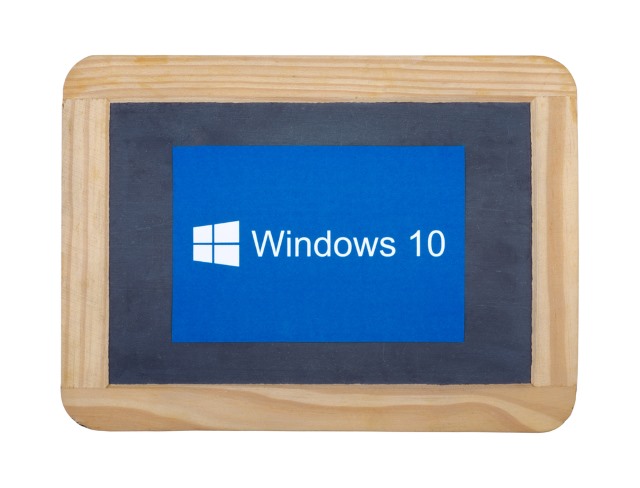
Microsoft will release a service update to its Intune management software within the next week, introducing a number of new features and enhancements.
A large part of the update will be dedicated to Windows 10 support, ensuring that Intune is optimized for a number of features native to Microsoft’s new operating system.
Businesses will now be able to set an additional rule within the Compliance Policy, requiring all Windows 10 devices to pass the Health Attestation Service before they are granted access to corporate data. IT teams will also be able to view any data collected by Windows 10 health attestation whenever necessary.
Windows 10 devices will also now support Microsoft Passport for Work, allowing administrators to configure the signing-in and authentication process.
Businesses worried about the security of corporate data on Windows 10 devices are also likely to be reassured by the update. Now organizations will be able to perform a full remote wipe of all Windows 10 desktop devices that are enrolled in Intune.
The Intune update also offers new features for businesses working across Android and iOS platforms. Intune now integrates with Apple Volume Purchase Program (VPP) for Business and there are also new smart lock settings for all devices using Android Lollipop and above.
The service update is a mixture of important security upgrades, particularly for Windows 10 users, and utility benefits, such as being able to access more information from the Intune platform itself. As with any new operating system, it is up to Microsoft to convince users that Windows 10 is a more reliable offering than its predecessors and improving Intune support will certainly help its cause.
Published under license from ITProPortal.com, a Net Communities Ltd Publication. All rights reserved.
Photo credit: tanuha2001 / Shutterstock
-

Microsoft and Rambus team up for quantum computing research
Publié: janvier 8, 2016, 2:00pm CET par Barclay Ballard

Researchers at Microsoft are partnering with Rambus in order to evaluate the future memory requirements of quantum computing.
The two technology firms will share their resources and expertise in order to determine the types of computer architecture that will provide the biggest improvement to memory capabilities and overall system performance. Gary Bronner, vice president of Rambus Labs said that existing architectures are struggling to meet the increasing demands of real-time data consumption.
"[This] is driving the need to explore new high-performance, energy-efficient computer systems", he said. "By working with Microsoft on this project, we can leverage our vast expertise in memory systems to identify new architectural models".
Microsoft is keen to explore both theoretical and experimental approaches to creating quantum computers, as well as any associated hardware and software. However it remains unlikely that consumers will be able to get their hands on a quantum computer anytime soon.
Quantum computers uses quantum particles, usually electrons, to process huge numbers of calculations simultaneously as the result of a physical phenomenon known as quantum superposition. This means that you can achieve far greater computational power than with digital computers. However, creating a working quantum computer has proven a challenge for scientists.
Google is working in partnership with NASA and D-Wave to create its own quantum computer, so it is not surprising that Microsoft is also entering this space. The company that is able to create the first commercially available quantum computer could potentially dominate the computing market, particularly within certain industries, due to the speed and performance benefits offered by the technology.
Published under license from ITProPortal.com, a Net Communities Ltd Publication. All rights reserved.
Photo Credit: EDHAR/Shutterstock
-

Intel's RealSense camera used in first 'intelligent consumer drone'
Publié: janvier 7, 2016, 2:22pm CET par Barclay Ballard
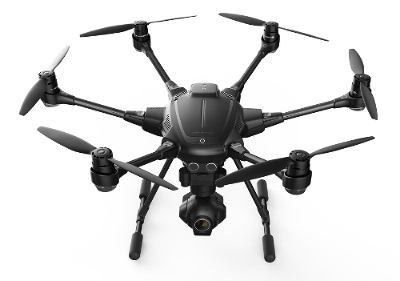
Intel CEO Brian Krzanich has revealed his company’s entry into the burgeoning drone market during a keynote speech at the Consumer Electronics Show in Las Vegas.
Yuneec's Typhoon H drone utilizes Intel’s RealSense camera and infrared lasers to instinctively avoid collisions, making it the world’s first "intelligent consumer drone" according to Krzanich.
The Telegraph reports that during the address the drone demonstrated its evasive abilities by following a cyclist on stage whilst dodging fake trees as they fell. Krzanich also revealed that the device would cost less than $2,000 (£1,300) and be available in the first half of 2016.
Following the smart drone reveal, Intel unveiled a number of its other plans for the year ahead, with wearable technology clearly a key focus for the company. Intel will work with Oakley on smart eyewear dubbed Radar Pace to provide athletes with real-time coaching based on their performance. A partnership with New Balance will also see the two organizations develop footwear that comes with customizable 3D-printed soles.
Intel even showcased something for armchair sports fans with Curie, a low-power computer that will provide more detailed statistics and further replay options during sports broadcasts. As part of the proposal, Intel also confirmed deals with ESPN and Red Bull Media House.
Intel has traditionally been thought of as a semi-conductor manufacturer, but its announcements at CES 2016 clearly indicate that it has set its sights on emerging, innovative consumer technologies.
"There is a rapidly growing role for technology that is at once transformative, unprecedented and accessible", Krzanich explained. "With people choosing experiences over products more than ever before, Intel technology is a catalyst to making amazing new experiences possible, and ultimately improving the world in which we live".
Published under license from ITProPortal.com, a Net Communities Ltd Publication. All rights reserved.
-

Xiaomi's new ultrabook goes up against Apple's MacBook Air
Publié: janvier 6, 2016, 8:13pm CET par Barclay Ballard
 Xiaomi is entering the laptop market with a device that looks to carry on the company tradition of delivering high specs at low cost.
Xiaomi is entering the laptop market with a device that looks to carry on the company tradition of delivering high specs at low cost.The model has not yet been named, but is available for pre-order via Chinese retailer Banggood for £490.50.
The laptop boasts some impressive hardware for its price, including an Intel Core i7 CPU and 8GB of RAM. It also comes with two USB ports, a HDMI port and all the usual additions, such as a front-facing camera and headphone port.
The laptop also looks the part, already drawing comparisons with the MacBook Air. The Xiaomi device boasts a 15.6-inch screen with 1080p resolution and sports an aluminium finish that certainly bears more than passing resemblance to Apple’s own aesthetic.
The Ultrabook does run Linux, however, which could prove off-putting for some consumers that are more familiar with Windows or OS X. It appears that the decision to opt for the open-source operating system has helped Xiaomi reduce the cost of its offering.
Xiaomi has become a major player in the smartphone space, with its budget handsets proving particularly popular in its native China. However, the company has never been afraid to branch out into other areas, so it is hardly surprising that it has decided to enter the laptop market.
Aside from its smartphones, Xiaomi also manufactures water purifiers, scales and fitness trackers. The Chinese firm has grown rapidly in recent years, but now faces intense competition from rival brand Huawei and US firms such as Apple.
Published under license from ITProPortal.com, a Net Communities Ltd Publication. All rights reserved.
-

What you need to know about VPNs
Publié: décembre 21, 2015, 7:58pm CET par Barclay Ballard

A virtual private network (VPN) brings additional security to anyone using a public network, such as the Internet. Using a variety of security methods, such as encryption, the VPN is able to safeguard any data transmitted across the network, which may be at risk if it simply used the underlying public network infrastructure.
VPNs are often employed when it would not be practical to use a physical private network, usually due to financial reasons. As businesses embrace mobile working and face increasing pressure to protect sensitive information, many are employing virtual private networks to improve their network security.
Remote Access or Site-to-Site
There are two main types of VPNs currently being used by organizations: remote access and site-to-site.
A remote access VPN uses the underlying public network to give users access to an organization’s private network. In practice this would likely involve the user being greeted by a VPN gateway on their mobile or desktop device, which would then authenticate his or her identity.
If validated successfully, the user then gains access to resources stored on the virtual network, which could include business applications and documents. Ultimately, this should enable employees to access their work network, including any local intranets, wherever they are.
Site-to-site VPNs may use some of the same software and equipment as a remote access VPN, but is usually employed for a slightly different purpose. Site-to-site virtual private networks generally connect entire networks based in one location to another network located somewhere else.
This can prove extremely useful for businesses with multiple branches based in disparate locations, or organizations that wish to share resources securely with a partner or client business. Companies that employ a site-to-site VPN can benefit from enhanced collaboration without worrying about the security of their data.
VPN Benefits
- Security -- The main reason why businesses choose to adopt virtual private networks. Having encrypted data, particularly if it is of a sensitive nature, is vitally important. Data breaches not only lead to compensation and regulatory fines, but can leave lasting reputational damage.
- Mobility -- VPNs give businesses the security to share their resources with employees and partners that are not based in the office at all times. This can provide a huge boost to productivity by ensuring that staff are not tethered to traditional office working times and locations. Organizations have also begun using VPNs to outsource their work, enabling them to lower internal staff costs.
- Cost -- Virtual private networks can prove much more affordable than a physical private network. Rather than having to lease long distance network connections to achieve a secure transfer of data, businesses use the existing public network to facilitate their VPN.
VPN Disadvantages
Although VPNs are used by many businesses and individuals, there are some potential drawbacks that you should be aware of.
- Complexity -- Virtual private networks can be complicated to set up and configure. Businesses must ensure that the team in charge of setting up the VPN has a detailed knowledge of network security issues in order to ensure that the protection from the public network is suitably robust.
- Control -- The performance of a VPN hosted over the Internet is not entirely under the control of the business. They will need to rely on their Internet service provider in order to meet the agreed standards of performance.
Things to Look For in an Effective VPN
If businesses are looking to set up an effective virtual private network, there are a few aspects that they should keep in mind at all times. Firstly, businesses will need to decide which security protocol to go with. SSL/TLS, IPSec, PPTP, and L2TP are some of the most common VPN protocols, with SSL and IPSec proving most popular with corporate users.
Although the protocol will not affect the end-user in any way, it will affect how secure your VPN is. Certain protocols are more complex to set-up, while others are straightforward, but not all VPNs provide data integrity. It is up to IT leaders to determine which security protocol is best suited for their organization.
Scalability is another major factor to consider when setting up your VPN. Businesses need to factor in any potential growth that may occur in the foreseeable future. Their virtual private network should be able to handle not only the current levels of traffic, but any increases that may occur do to larger employee numbers or busy periods. Organizations will not want to replace their VPN technology altogether, so need to factor in scalability from the start.
Reliability is also vital, particularly across multiple devices. Mobile working is increasingly important in the workplace, so employees should receive a consistent experience from the VPN whether accessing it via a desktop PC, smartphone or tablet. It is also important to note that employees will soon grow frustrated, and therefore unproductive, if the virtual private network is slow, difficult to connect to, or unreliable.
If businesses decide to go with an external VPN service provider, it is important to consider where their servers are located. A third party vendor will be subject to their own national data governance laws, which may impact on the data that you send back and forth across the network. Although unlikely to be a major concern, businesses should consider where their VPN supplier is based before choosing a service.
To VPN or Not to VPN?
Virtual private networks do not offer failsafe security, but in the light of recent high-profile breaches, many businesses will feel that any additional step that can be taken to secure their data is likely to be worthwhile. Although VPN configuration is not always easy, if it does help to prevent future data loss it will surely prove a valuable investment.
Published under license from ITProPortal.com, a Net Communities Ltd Publication. All rights reserved.
Photo Credit: dizain/Shutterstock
-

Box and Salesforce team up to improve cloud collaboration, productivity
Publié: décembre 17, 2015, 10:16am CET par Barclay Ballard

Salesforce and Box have announced a partnership that aims to enable closer business collaboration and greater productivity.
The two companies have announced Salesforce Files Connect for Box to help businesses access files securely and Box SDK for Salesforce to assist the software development cycle.
Aaron Levie, co-founder and CEO of Box, hopes that the two solutions will offer businesses a range of benefits.
"Solutions from Box and Salesforce are helping enterprises move to the cloud, scale their business, and deepen their relationships with customers, partners and developers", he said. "We’re incredibly excited to expand into the next phase of innovation with Salesforce and deliver new tools that allow joint customers to leverage the content they work with on a regular basis in Box, directly from Salesforce".
Salesforce Files Connect for Box enables Box users to search for and access files across any device without leaving the Salesforce platform. This allows the security and access permissions of the original file to be maintained, enabling business collaboration to take place without being hampered by security concerns.
Box SDK for Salesforce, on the other hand, is a developer toolkit that allows software engineers to easily embed Box content management functionality. This could be used to access Box content for specialized industries, such as healthcare, using a custom app.
While Box SDK for Salesforce is currently available free-of-charge on Github, Salesforce Files Connect for Box is not generally available until summer 2016. It is currently being trialled with select customers and pricing is yet to be announced.
Published under license from ITProPortal.com, a Net Communities Ltd Publication. All rights reserved.
Image Credit: Lightspring / Shutterstock
-

Docker: The business benefits
Publié: décembre 10, 2015, 8:46pm CET par Barclay Ballard

Considering it only came into existence in 2013, Docker has experienced a monumental rise in both the consumer and business markets. From such humble beginnings, (the earliest version of the technology was developed by founder Solomon Hykes in his mother’s basement), Docker has managed to secure a number of high-profile partners and earlier this year received a valuation in excess of $1 billion. But what exactly is Docker?
According to the company itself, "Docker allows you to package an application with all of its dependencies into a standardized unit for software development". The way in which Docker does this is through a software feature known as a container. These containers encompass everything that a piece of software needs to operate, including code, system tools, system libraries, runtime -- essentially anything that can be run on a server. In this respect, the way in which Docker enables infrastructure virtualization is nothing new, but in other ways it is really shaking up the virtual machine market.
Although Docker containers are similar to virtual machines in terms of resource isolation and allocation, they take a different approach to software architecture. Whereas virtual machines rely on a guest operating system to run their applications, even small differences between environments can result in a lot of unwanted complexity and headaches for IT managers. Docker containers, on the other hand, share their operating system (in this case the Linux kernel) so they run as isolated processes regardless of the host operating system.
As Docker proudly admits, this means that its containers can "run on any computer, on any infrastructure and in any cloud". The portability, flexibility and simplicity that this enables, is a key reason why Docker has been able to generate such strong momentum.
Understanding the Business Benefits
For software development firms, there are many benefits of using Docker. Firstly, the flexibility offered by Docker containers means that engineers can focus on delivering a product to their customers. Rather than spending time on compatibility issues and different programming languages, they can instead focus on innovative new features, improving the user interface and correcting coding flaws.
Software companies can also rest easy that their application will deliver a consistent performance regardless of the infrastructure being used by the host device. Normally, developers would have to manage several different dependencies and configurations for each environment, but with Docker that’s no longer necessary.
As a result, Docker has enabled businesses to ship software at a much faster rate than was previously possible. Docker containers can also be scaled up or down, depending on demand in just seconds, meaning that resources are used more efficiently. When it comes to serving updates and patches, Docker containers also offer ease-of-use.
Problem containers can be isolated and engineers can roll back to the relevant stage in the software development cycle, make the required changes and push the upgraded container back into action. The isolation provided by each container means that making these changes causes far less disruption to other software compared to other development approaches.
This has enabled a faster and more dynamic approach to software creation -- in fact, recent research suggests that Docker accelerates application delivery by as much as 600 percent.
For businesses that use a lot of software packages, Docker also has its advantages. As well the portability that containers provide, companies will discover that they no longer need a separate virtual machine for each application that they’re using. This can greatly reduce the amount of processing power required, giving businesses the freedom to embrace more applications or simply streamline their operations.
The Bigger Picture
Docker is not only important for businesses in terms of the advantages it can offer. Because it is an open source project, it feeds into the spirit of collaboration and connectivity that more and more organizations are getting on board with.
For Docker, and many other open source technologies, this means that the community is just as important as the software itself. By creating a common framework for developers and system administrators to work from, Docker has enabled the distribution and sharing of content. The Docker Hub lets software engineers distribute and manage images and get others to test their applications seamlessly.
It’s also not just individual developers that are part of the Docker ecosystem either. Partnerships are in place with some of the world’s largest technology companies, including the likes of Amazon and Microsoft. Similarly, Google has released its own Docker container management and orchestration tool called Kubernetes, while Rackspace CEO John Engates admits that, although his company were initially skeptical of Docker, they are now fully on-board.
"Docker is the next generation of virtualization and we’re proud to be on the cutting edge of one of the major transformations in IT", he said. "Our hope is that the Docker open source project will be a key component of a planet scale cloud".
Having highlighted the many benefits of the Docker open source project, it is important for businesses to realise that it might not be suitable for every situation. Some applications may have too many complexities to fit neatly in a container and issues can also arise regarding replication, scheduling and install services.
The simplicity that is one of Docker’s main selling points is also one of its weaknesses. Legacy software, in particular, can prove problematic, so it’s unlikely that Docker will kill off virtual machines completely. Many businesses are continuing to use VMs for certain apps, while embracing Docker for others.
What the future holds for Docker in the business environment is difficult to say, particularly as it is still a relatively young project. The fact that other companies, such as Canonical and Joyent, are now offering rival container services is a good sign for the technology, as greater competition will likely result in better services for all concerned.
In the meantime, businesses from a broad range of industries could stand to benefit from the unique approach to software development and management offered by Docker.
Published under license from ITProPortal.com, a Net Communities Ltd Publication. All rights reserved.
-

Most mobile apps have encryption flaws
Publié: décembre 8, 2015, 3:41pm CET par Barclay Ballard

Encryption is not all it’s cracked up to be according to a recent security report, with coding flaws introducing a number of vulnerabilities into smartphones and their software.
Seven in eight Android apps and 80 percent of all iOS apps have encryption flaws, claims Veracode’s State of Software Security report.
The researchers at Veracode found that four particular encryption errors were recurring in a large number of iOS and Android apps. These included insufficient entropy to secure data, failure to validate certificates, the use of weak cryptographic algorithms and storing information as plain text. Most disappointing of all, however, is the fact that these flaws are relatively straightforward to fix, suggesting that developers need to place greater emphasis on security.
While many startups and smaller businesses may not feel as though they have the time and resources to dedicate to security, the reputational damage of a data breach can be so devastating that it often proves a worthwhile investment. As companies develop and transition to more agile development methods, it is also hoped that security will become more ingrained in the software engineering process.
The State of Software Security report also highlighted a number of vulnerabilities in web-based applications. Three coding languages, in particular, were singled out as being the most susceptible to insecurities: PHP, ColdFusion and Classic ASP. SQL injection vulnerabilities were found to affect 64 percent of Classic ASP apps, 62 percent of ColdFusion apps and 56 percent of PHP software. On the other hand, Java and .NET were seen to be the most reliable web development languages.
The report highlighted that the best way of preventing coding errors from causing security flaws is to invest in more training and online learning. This will not only lead to less scripting errors, but also help developers, and the company as a whole, take security more seriously.
Published under license from ITProPortal.com, a Net Communities Ltd Publication. All rights reserved.
Photo credit: faithie / Shutterstock
-

Microsoft introduces Office 365 E5 subscription
Publié: décembre 4, 2015, 6:56pm CET par Barclay Ballard
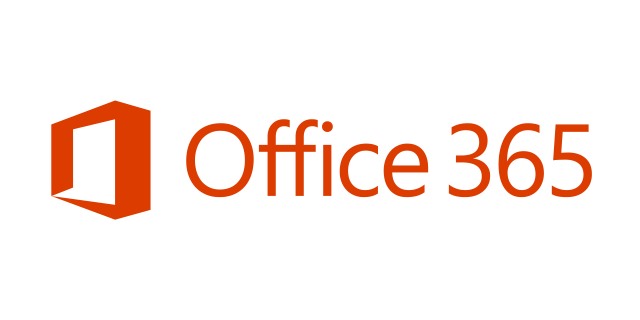
Microsoft has launched a new premium Office 365 package for its enterprise customers, accompanied by a significant price increase.
Office 365 Enterprise E5 replaces Enterprise E4, which will be dropped by June 2016, and will cost $35 per user per month, compared to $22 per user per month for its predecessor.
Although the new Office 365 package does contain a number of new features, response to the price hike has been mixed, particularly as Enterprise E4 was not received particularly well by customers. Microsoft will be hoping that additions like Skype for Business integration, Advanced Threat Protection and Power BI Pro will be enough to entice enterprise firms to pay the higher price tag.
Criticism has centered on the optional PSTN calling plan, which businesses can subscribe to if they are using cloud-based PBX systems. Enterprises must pay an additional $24 per month for unlimited domestic and international calls, which is a significantly higher price than that charged to ordinary consumers. The business premium may be used to cover the extra centralized control required by enterprise firms, but many have still claimed that the cost is not good value for money.
However, Kirk Koenigsbauer, corporate vice-president for Microsoft Office, believes that the innovations introduced to Enterprise E5, in partnership with telcos and other collaborators, will prove worthwhile additions.
"As we release these new capabilities in Office 365, partners will play an integral role in extending the value of our new services", he said. "At the forefront are our global systems integrator partners, who have the highest level of experience in delivering communications solutions end-to-end".
For businesses that are currently using Office 365 Enterprise E4, they will have to decide whether the new cost is worthwhile or whether they would be better suited dropping down to the less expensive Enterprise E3 package.
Published under license from ITProPortal.com, a Net Communities Ltd Publication. All rights reserved.
-

Microsoft's enterprise security software now offers PUA protection
Publié: décembre 1, 2015, 9:52pm CET par Barclay Ballard
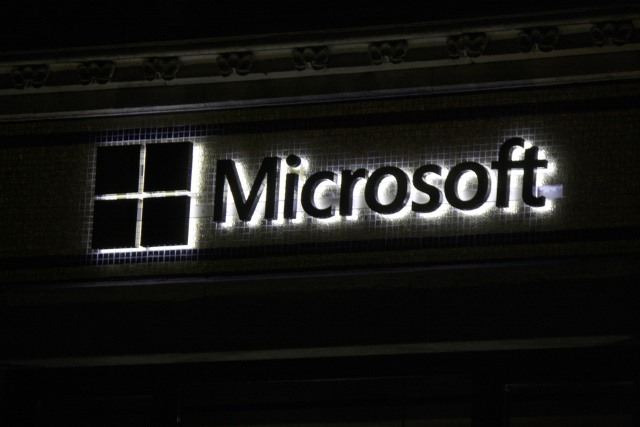
Microsoft has started to offer potentially unwanted application (PUA) protection in its anti-malware products for enterprise firms.
The news means that businesses will finally have an easy way of removing adware, browser hijackers and any other piece of software that deploys programs without the user’s knowledge or consent.
The PUA protection is now available as part of Microsoft’s System Centre Endpoint Protection (SCEP) and Forefront Endpoint Protection (FEP) and can be easily activated by system administrators. By opting in for protection, PUA software will be blocked at both download and installation time.
In a blog post, Microsoft’s Malware Protection Centre team said that PUAs can range from annoying to seriously damaging.
"These applications can increase the risk of your network being infected with malware, cause malware infections to be harder to identify among the noise, and can waste helpdesk, IT, and user time cleaning up the applications", the team explained. "Since the stakes are higher in an enterprise environment, the potential disaster that PUA brings can be a cause of concern. Hence, it is important to deliver trusted protection in this field".
Before implementing PUA protection, companies should first create a clear corporate policy that outlines what qualifies as a PUA and also inform employees about the changes, in the event that commonly-used applications become blocked. The PUA protection can also be implemented in stages to identify if any software is likely to be wrongfully identified as a PUA.
While enterprise customers are sure to welcome the development, Microsoft’s consumer market will surely bemoan the fact that a similar service is not provided for home users. Many individuals have expressed their disappointment at the vast amounts of "bloatware" that comes pre-installed on devices, many of which are difficult to remove.
Published under license from ITProPortal.com, a Net Communities Ltd Publication. All rights reserved.
Photo credit: 360b / Shutterstock.com
-

Europe should set up its own cybersecurity agency
Publié: novembre 23, 2015, 7:23pm CET par Barclay Ballard

Europe is being urged to set up its own international cybersecurity agency to tackle the growing threat posed by cyberattacks. Jose Luiz Gilperez, security chief at Telefonica, said that cyberthreats have developed in recent years to pose just as significant a danger as physical threats.
Of particular concern is a fundamental change in the types of individuals perpetrating cyberattacks. While the stereotypical image of the lone hacker may have held true in the past, cyberattacks are now being carried out by hacking collectives, gangs of organized criminals or even national governments. Gilperez stressed that in order to counter this new threat, cybersecurity must become "a matter of business, and a matter of states".
For example, there have been claims that China has instigated attacks against US organizations, although the Beijing government has strenuously denied these reports. As well as being implicated in a data breach occurring at the US Office of Personnel Management, China was also blamed for launching its so-called "Great Cannon" cyberattack at software repository site GitHub.
Gilperez believes that the unpredictable nature of cyberattack means Europe must start taking them more seriously. He cites the US, where $14 billion is spent on cyber defenses, as an example that Europe needs to follow.
However, shoring up the continent’s cyber defenses may be easier said than done, as it is unlikely that there are enough personnel in traditional defense roles with the skills required to thwart cyberattackers. Gilperez suggests that partnering with the private sector could be a way for national governments to source the digital talent needed.
High-profile security breaches demonstrate that the threat posed by cyberattacks is already severe, but it is only likely to get worse. With the number of connected devices expected to grow rapidly as a result of the Internet of Things, the importance of robust security protocols will also increase.
Published under license from ITProPortal.com, a Net Communities Ltd Publication. All rights reserved.
Image Credit: Manczurov / Shutterstock
-

Docker adds new security features
Publié: novembre 17, 2015, 8:41pm CET par Barclay Ballard

Docker has unveiled some additional security features during the keynote speech of its DockerCon Europe conference.
The open source program will boast improved container safety without compromising developer workflows.
Docker will now conduct regular scans of its 90 official repositories in order to eliminate any coding flaws and implement some extra security tools. Users will be able to add hardware signing using a Yubico key and namespace support, meaning that Docker containers will not require root access. Both security additions are already available via the company’s experimental feature platform.
As software containers grow in popularity, Docker’s root access requirement threatens the integrity of apps developed using the platform. However, the new security protocols mean that root access is no longer necessary as developers can sign their containers digitally providing they have a YubiKey 4.
TechCrunch reports that Docker CTO Solomon Hykes used his keynote speech to emphasize how important security is to his organization and why businesses must "think about security from the beginning". For Docker, however, it is also important that security does not hinder developers during the software engineering process, particularly with the fast pace of modern development.
"It has been our goal from the beginning to develop a framework that secures Dockerized distributed applications throughout the entire application lifecycle", Hykes explained. "We’ve enabled developers and IT ops to benefit from a more secure environment, without having to learn a new set of commands or to be trained on a deep set of security principles. Docker security works as part of an integrated component without any disruption to developer productivity while providing IT with the appropriate level of security controls".
In order for the community to be fully aware of any security issues, Docker will also publish any vulnerabilities found within its official repositories.
Published under license from ITProPortal.com, a Net Communities Ltd Publication. All rights reserved.
Image Credit: Manczurov / Shutterstock
-

Apple will create 1,000 new jobs in Ireland
Publié: novembre 12, 2015, 3:44pm CET par Barclay Ballard
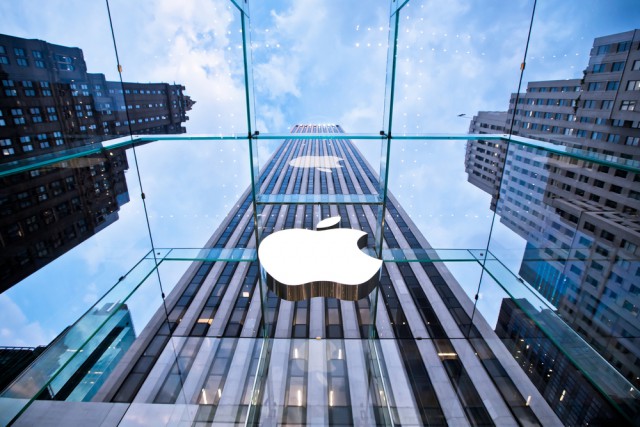
Apple is set to announce the expansion of its Irish subsidiary, creating up to 1,000 new jobs in the area. Company CEO Tim Cook reveal the plans to staff at the firm’s Hollyhill facility in Cork.
The expansion had been expected, with more that €120 million (£8.5 million) invested in the Cork plant since 2012 and it seems that Apple’s enthusiasm for the country has not been dented by recent controversies surrounding the amount of tax it pays.
In the five years leading up to 2014, Apple paid tax of just 2.5 percent on its profits, far less than Ireland’s 12.5 percent rate, with many accusing the country of going easy on the technology giant in exchange for new jobs.
Ireland’s head of government Enda Kenny believes that the developments in Cork will provide a huge boost for the local area.
"Apple’s plans for new facilities at their Cork campus that can house a further 1,000 jobs is a very welcome boost of confidence in Cork and the south west region", he said. "It is also a welcome sign of broadening regional recovery. These new jobs come on top of 1,000 additional jobs already created at Apple in the past 12 months, which brought the workforce in Ireland to over 5,000 in 2015".
The Cork plant already employs in excess of 5,000 members of staff, focusing on both manufacture and sales support, making Apple one of the biggest employers in the south of the country. It is believed that the expansion will focus on extending the plant into an area of land currently used as a traveler halting site.
In addition, Apple is set to open a new data center in Galway, at a cost of €850 million (£600 million), which will create further job opportunities for IT professionals.
Published under license from ITProPortal.com, a Net Communities Ltd Publication. All rights reserved.
Photo Credit: Shutterstock/Andrey Bayda
-

Vulnerability in Baidu's Android SDK exposes 100 million Android devices
Publié: novembre 4, 2015, 6:51pm CET par Barclay Ballard

Security researchers from Trend Micro have discovered that a software development kit used by thousands of applications is leaving Android users at risk.
The Moplus SDK was created by Chinese firm Baidu and is susceptible to backdoor functionalities. It is believed that approximately 100 million Android devices users are affected.
"This SDK has backdoor routines such as pushing phishing pages, inserting arbitrary contacts, sending fake SMS, uploading local files to remote servers, and installing any applications to the Android devices without user’s authorization", the Trend Micro researchers explain. "The only requirement is for the device to be connected to the Internet first before any of these routines execute. Our findings also revealed that a malware is already leveraging Moplus SDK in the wild".
The Moplus vulnerability is particularly severe because attackers simply have to scan mobile network IP addresses for any that contain the opened Moplus HTTP server ports. Attackers can then acquire sensitive information simply by sending requests to this server. If devices have been rooted, unwanted applications can even be installed. Trend Micro has already found that a type of malware known as Wormhole has been installed using this method.
Both Baidu and Google have now been informed of the security issue and the former has responded by removing, or making inactive, any lines of malicious code. The remaining dead code will also be removed by the next update purely for the sake of clarity.
Although the swift action taken by Baidu is to be welcomed, it remains to be seen how many third-party developers using Moplus will upgrade their applications built with the SDK. Only around 4,000 of the 14,000 affected apps were developed by Baidu, so there is a significant chance that much of the infected software will remain available.
Published under license from ITProPortal.com, a Net Communities Ltd Publication. All rights reserved.
Photo credit: Olivier Le Moal / Shutterstock
-

EE will test 1 Gbps cellular network ahead of 5G rollout
Publié: novembre 4, 2015, 4:31pm CET par Barclay Ballard

EE is planning to perform 1Gbps speed tests next year as the mobile network provider gets preparation underway for 5G connectivity.
Although the high speed network will initially only be available for certain business sectors, it will eventually be opened up to the public. The NHS, building sites and the police force are expected to be early beneficiaries of EE’s technical developments in 2016.
Police in Staffordshire are hoping to become the UK’s "most technological advanced police service" by embracing 4G public Wi-Fi, EE’s Connect IoT platform, connected vehicles and 4G streaming cameras. It is estimated that by possessing faster, more reliable mobile connectivity, officers could save approximately 250,000 hours of front line staff time per year.
Similarly, the introduction of more advanced mobile technology could also provide significant benefits for NHS patients, enabling better communication with members of staff. Estimates suggest it could cut unnecessary GP and hospital appointments by as much as 65 percent.
EE, like many of its rivals, understands the importance of continuing to develop the UK’s telecommunications infrastructure. Not only do faster mobile networks provide individual benefits for users, they also help UK businesses to compete on the world stage.
Ninety-three percent of the country currently has access to 4G connectivity, but developments are well underway to improve upon this. Regulatory challenges must first be overcome, however, before EE can formally test and launch its 5G networks.
In the meantime, the mobile network provider has plenty of other innovations to work on. Its Internet of Things Connect platform launched last month and is already being used by Royal Mail.
Published under license from ITProPortal.com, a Net Communities Ltd Publication. All rights reserved.
Photo Credit: Krivosheev Vitaly/Shutterstock
-

Apple might break its Q4 iPhone sales record
Publié: octobre 26, 2015, 12:55pm CET par Barclay Ballard
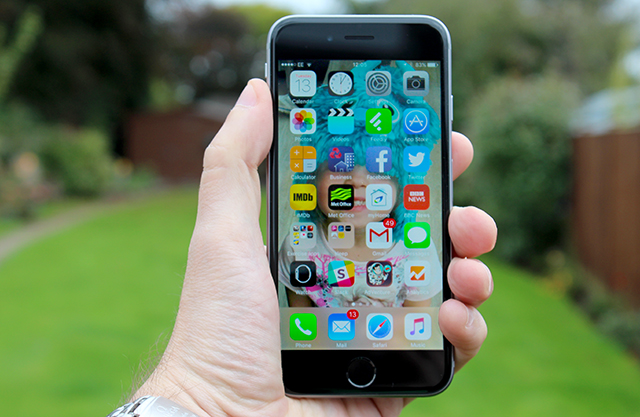
Apple may have broken its Q4 iPhone sales record, according to analyst estimates.
Forbes has aggregated all the predicted sales figures for the last quarter (Q4 FY2015) and found that the average estimate was 48.72 million, a 24 percent increase when compared to twelve months ago.
The most optimistic estimate came from Sherri Scribner of Deutsch Bank who predicts that Apple may have sold 51.1 million units. By comparison, the lowest estimate of 45 million was made by Sundeep Bajikar of Jefferies.
Apple’s release of both the iPhone 6s and iPhone 6s Plus are likely to have boosted the sales figures, with both models receiving praise despite only introducing a limited number of new features. Collectively the two handsets sold 13 million units in the first week of launch, an increase on the 10 million iPhone 6 and 6 Plus units sold in the same period last year.
This year’s figures will also be boosted by Apple’s progress in the Chinese market. Last year, the iPhone 6 did not launch immediately in China, but the release of the iPhone 6s occurred on the same day across the US, UK, China and a number of other markets.
Apple will release its official sales figures this week, at which point it will become clear which analyst prediction was the most accurate. In any case, it is unlikely that the Cupertino-based company will beat last year’s record iPhone sales figure of 74.5 million (for Q4 CY2014/Q1 FY2015).
Published under license from ITProPortal.com, a Net Communities Ltd Publication. All rights reserved.
Photo Credit: Wayne Williams
-

Walmart will open-source OneOps cloud platform
Publié: octobre 16, 2015, 9:01pm CEST par Barclay Ballard

Walmart is making its OneOps cloud platform open source in a bid to keep up with its main competitor Amazon. The US retailer has experienced financial disappointment in recent years as modern, predominantly digital, businesses eat away at its market share. Its chief financial officer Charles Holley recently warned that revenue is unlikely to grow until 2019.
Walmart clearly believes that it must modernize in order to stay afloat, hence the news that it will be releasing the source code for its OneOps cloud platform on GitHub before the end of the year. In doing so, the retailer is offering developers an alternative to Amazon Web Services (AWS) where they are not tied into long term contracts and compatible technologies.
Jeremy King, CTO of Walmart Global eCommerce and head of WalmartLabs believes that the open source approach will give developers and businesses more freedom.
"We’re enabling any organization to achieve the same cloud portability and developer benefits that Walmart has enjoyed", he said. "And by eliminating the barriers that cloud hosting providers have erected, OneOps will drive them to compete based on price, customer service and innovation. It’s a winning scenario for all dev-centric organizations".
King adds that as an open source platform, OneOps encapsulates one of the key tenets of cloud computing: flexibility. In addition, Walmart is keen to stress the other benefits of its cloud offering, including its portability, continuous lifecycle management, faster innovation and greater abstraction of cloud environments.
However, AWS is unlikely to be overly concerned by Walmart’s decision to release its cloud source code. As one of the market leaders, it supplies services to thousands of businesses and recently announced quarterly revenue figures in excess of $7 billion.
Published under license from ITProPortal.com, a Net Communities Ltd Publication. All rights reserved.
Photo Credit: rvlsoft/Shutterstock
-

Oracle plans to offer IT-staff-as-a-service
Publié: octobre 15, 2015, 4:17pm CEST par Barclay Ballard
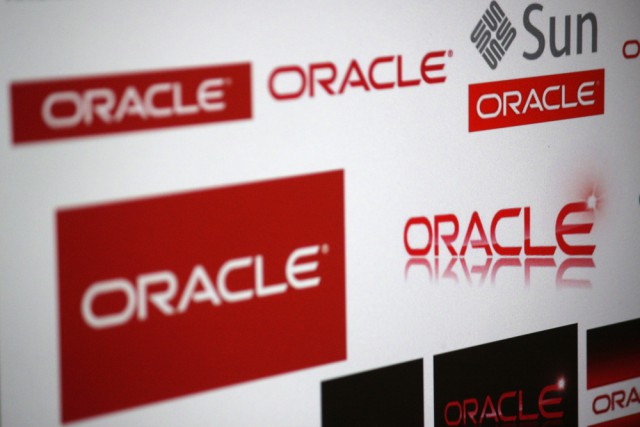
Oracle is set to offer its customers an entirely new service that lies somewhere between contracting IT staff and cloud computing, according to Business Insider.
Reports suggest that Oracle will allow customers to rent its IT staff alongside its cloud services -- essentially offering an entire IT department as a service.
Although a number of businesses already use Oracle’s cloud offerings, finding staff that is trained in the use of these applications can prove tricky. Of course, Oracle itself has such staff in place already and currently offers consulting services to help businesses use their products more effectively. Now it seems the company is taking this a step further and implementing a longer-term outsourcing service.
However, it remains to be seen when this so-called "service-as-a-service" will actually be launched, if indeed it proves to be genuine -- so far noting has been officially announced by Oracle. The upcoming Oracle OpenWorld event later this month could provide a perfect opportunity for the company to announce its plans, with five days of talks and discussion sessions scheduled.
If Oracle does launch an IT department outsourcing service, it will steal a march on its cloud rivals as none of its competitors are offering a comparable service. It could potentially convince businesses that cannot afford to employ additional staff on permanent contracts to choose Oracle software over the likes of Amazon Web Services.
Published under license from ITProPortal.com, a Net Communities Ltd Publication. All rights reserved.
Photo Credit: 360b/Shutterstock
-

Samsung takes the wraps off Z3, its second Tizen smartphone
Publié: octobre 15, 2015, 11:52am CEST par Barclay Ballard

Samsung has unveiled the second smartphone to use its own Tizen operating system, as the South Korean company attempts to chip away at Android’s market share.
The Samsung Z3 will be available from October 21 in India at a cost of approximately $130. Its predecessor, the Z1 (Samsung appears to have misplaced the Z2), only cost around $90, so it remains to be seen whether consumers will accept the price increase.
If customers do prove receptive to the new model they will receive a smartphone boasting a 5-inch 720p Super AMOLED screen, a quad-core 1.3 GHz processor, 1GB of RAM and 8GB of internal storage. The handset also comes with 3G connectivity, an 8-megapixel rear camera and a 5-megapixel front-facing lens.
JK Shin, CEO and head of IT and mobile business at Samsung, believes that the new release shows that the phone manufacturer is not ready to give up on Tizen just yet.
"As a pioneer of Tizen platform, we have continuously introduced Tizen-based mobile devices, including Samsung Z1 and Samsung Gear S2, in our commitment to develop the Tizen ecosystem", he said. "We developed the Samsung Z3 to provide the features that will help consumers capitalize on the growing Tizen ecosystem and make the most out of their personal mobile experience".
Although Samsung still has an impressive market share in the smartphone industry, its profit figures are hampered by the fact that many of its handsets use the Android operating system developed by Google. This also means that Samsung has less control over the software used on its devices. It is expected that the South Korean firm will release further Tizen-powered devices this year and look to encourage greater third-party support for the platform.
Aside from high-end television sets and the Gear 2 smartwatch, the Z1 smartphone is the only other device to run on Tizen, but Samsung is likely to be encouraged by impressive sales figures in India following its release back in January.
Published under license from ITProPortal.com, a Net Communities Ltd Publication. All rights reserved.
-

Line introduces Letter Sealing message encryption feature
Publié: octobre 14, 2015, 8:35pm CEST par Barclay Ballard

As the battle between privacy and security heats up, one instant messaging service has definitively announced which side of the divide it falls on.
Line, which is estimated to have more than 200 million monthly active users, has launched a new end-to-end encryption feature called "Letter Sealing" for use across both smartphone and desktop platforms.
Using a similar approach to security protocols implemented by the likes of WhatsApp and iMessage, Letter Sealing uses a private key stored on the user’s device to encrypt messages, making it impossible for the content to be disclosed to a server or third party. Both participants in a chat must have Letter Sealing activated for their correspondences to be protected, but users can easily turn the feature on by going to Settings in any version later than LINE 5.3.0.
Line has implemented a number of security features in the past, including Hidden Chat and Passcode Lock, and software engineer JI believes that the latest addition could provide a valuable service to users.
"Letter Sealing is functionally different from existing methods", he explains. "One key difference is that with Letter Sealing, encryption is performed by the sender instead of the server. This technically prevents any possibilities of messages being decrypted and re-encrypted, and also makes sure messages are never exposed in plain text on the server. Additionally, the message keys used to exchange messages are safely stored on the devices of the sender and recipient instead of the server. This eliminates the possibility of a third party, including the LINE servers, from removing the seal on messages".
While privacy advocates are sure to be pleased about Line’s new security protocol, some national governments have argued that encrypted messages could enable terrorists to communicate undetected. Both the FBI and UK Prime Minister David Cameron have argued that encryption poses a threat to national security, but others see their concerns as a smokescreen to impose restrictions on individual liberty.
Published under license from ITProPortal.com, a Net Communities Ltd Publication. All rights reserved.
-

Apple's no longer court monitored in ebook antitrust case
Publié: octobre 14, 2015, 12:37pm CEST par Barclay Ballard
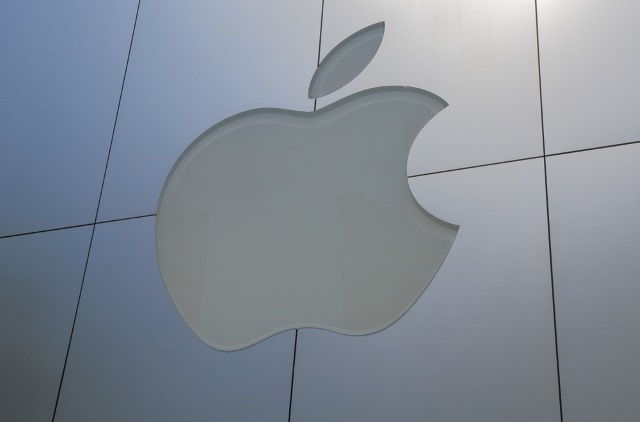
Apple’s e-book division will no longer be overseen by a court-appointed monitor after the US Justice Department ruled that the company had made improvements to its antitrust compliance program.
Despite the positive outcome for Apple, the Justice Department was critical of the company’s "challenging relationship" with the appointed monitor Michael Bromwich, claiming that the iPhone maker "never embraced a cooperative working relationship".
Apple claims that Bromwich disrupted working practices by requesting meetings with high-ranking individuals that were not related to the ebook business and submitted excessive bills. The technology giant also went to court several times in an attempt to remove Bromwich as monitor.
Back in 2013, Apple was found to be conspiring with five book publishers in an attempt to thwart the rise of competitors like Amazon. Penguin Group, Harper Collins, Simon and Schuster, Hachette Book Group and Macmillan were all found culpable of working with Apple to rise e-book prices and subsequently settled the allegations.
However, Apple disputes the court’s version of events, claiming that its actions actually encouraged competition. The company may yet appeal the decision of the US Supreme Court which states that it must pay a $450 million settlement claim.
Even with the legal wrangle continuing, Apple will be pleased that it is no longer being monitored as part of the antitrust litigation. The US Justice Department agreed with Mr Bromwich’s assessment that in spite of the lack of cooperation, Apple had implemented the required changes to its antitrust compliance program.
Published under license from ITProPortal.com, a Net Communities Ltd Publication. All rights reserved.
Photo credit: TK Kurikawa / Shutterstock
-

US tech giants and the (untaxed) billions in offshore accounts
Publié: octobre 8, 2015, 5:00pm CEST par Barclay Ballard

A recently released report by advocacy group Citizens for Tax Justice has revealed the staggering amount of money being held in offshore accounts by US technology firms.
Offshore Shell Games 2015 discloses that almost 72 percent of businesses listed on the Fortune 500 operated tax haven subsidiaries as of the end of last year.
Apple was the worst offender, holding $181.1 billion in offshore accounts, which means that the company would owe an additional $59.2 billion in US taxes if these profits were registered domestically. Instead, because Apple has structured its two Irish subsidiaries as tax residents of neither the US, nor Ireland, it is able to avoid paying tax to either government on the majority of its profits.
However, Apple is far from the only technology firm under the microscope. Microsoft revealed that it had five subsidiaries in tax havens last year, a 50 percent reduction on the 10 disclosed in 2007. Despite this, the amount of money the company held offshore actually increased by a factor of 14, with the firm paying a tax rate of just three percent to foreign governments on its profits.
Cisco, Google, Oracle and Hewlett-Packard are also mentioned in the report, alongside a number businesses outside the technology industry. In total, the use of tax havens by multinational companies enables them to avoid paying an estimated $90 billion in federal income tax. Researchers from Citizens for Tax Justice describe how just how easy it is to register an offshore tax haven subsidiary.
"There is no greater symbol of the excesses of the world of corporate tax havens than the Ugland house, a modest five-story office building in the Cayman Islands that serves as the registered address for 18,857 companies", the report reads. "Simply by registering subsidiaries in the Cayman Islands, US companies can use legal accounting gimmicks to make much of their US-earned profits appear to be earned in the Caymans and thus pay no taxes on those profits".
In order to prevent the abuse of offshore havens, the report advises ending the incentives of profit shifting, rejecting the creation of new legislative loopholes and increasing corporate transparency.
Published under license from ITProPortal.com, a Net Communities Ltd Publication. All rights reserved.
Photo credit: Jean Lee / Shutterstock
-

DDoS attacks increase in frequency, use less bandwidth
Publié: octobre 6, 2015, 8:33pm CEST par Barclay Ballard

The recently released mid-year report by Corero Network Security has identified some worrying trends in the cyberthreat landscape.
In particular, the research revealed that attackers are changing the way that they use DDoS attacks in an attempt to make them more effective.
According to the mid-year report, DDoS attacks are becoming shorter, but more frequent, with lower-bandwidth attempts (many were found to be less than 1Gbps) and those that have a reduced timespan being generally more difficult to detect. Ninety-five percent of all attacks tackled by Corero lasted 30 minutes or less, but the frequency increased from three attacks per day in the first quarter of 2015 to 4.5 attacks in Q2. The ease of purchasing and using DDoS tools is likely to be behind the growing numbers.
"Attackers are continuing to leverage DDoS attacks as part of their cyber threat arsenal to either disrupt business operations or access sensitive corporate information, and they’re doing it in increasingly creative ways that circumvent traditional security solutions or nullify the previous effectiveness of scrubbing centres", said Dave Larson, CTO and vice president of product at Corero Network Security.
Mr Larson added that in order to protect against disruption, businesses need to employ real-time visibility and mitigation of all DDoS attack traffic, no matter how minor the threat.
Internet service providers (ISPs) can also play a greater role in the defence against DDoS attacks. In fact, the report found that 75 percent of respondents would be willing to pay a premium for their ISP to take a more proactive approach to thwarting DDoS attempts. Rather than simply relying on firewalls and traditional solutions, network carriers could "surgically" remove the attack traffic before it became disruptive.
Corero’s 2015 Trends and Analysis Report also includes a number of additional insights regarding DDoS attacks, including further recommendations for how to prevent your businesses from being targeted in the future.
Published under license from ITProPortal.com, a Net Communities Ltd Publication. All rights reserved.
Photo credit: sibgat / Shutterstock
-

iPhone 6s not selling well in Japan
Publié: octobre 6, 2015, 5:57pm CEST par Barclay Ballard
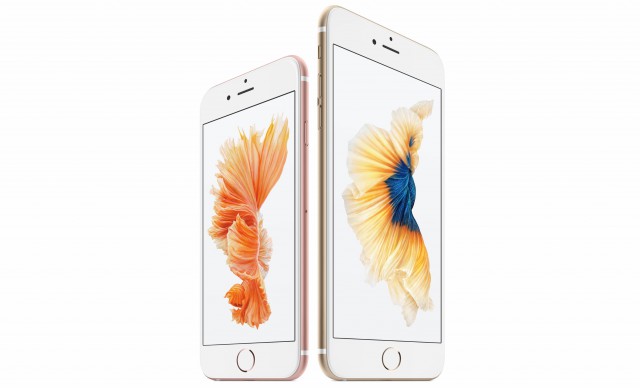
Recent sales figures are suggesting that the iPhone 6s launch is not the unqualified success that many thought it would be.
Although global sales of 13 million units across the first weekend of availability are likely to temper any disappointments at Apple HQ, it seems not every country was overly keen to get their hands on the new smartphone.
In Japan, where Apple has traditionally proved hugely popular, sales of the iPhone 6s and iPhone 6s Plus were down 10 to 15 percent when compared to the same period following the iPhone 6 and 6 Plus launch window. Although Apple will want to ensure that one of its iPhone strongholds does not become dominated by its competitors, there is perhaps an explanation for the downturn in sales.
According to Japanese network operator NTT DoCoMo, the number of people queuing outside stores before launch was significantly lower than seen previously. However, the operator had informed customers of the precise dates when it would be receiving additional stock, which could account for the lukewarm initial response.
Launched late last month, the iPhone 6s and 6s Plus offer a number of slight improvements when compared to the previous iteration of Apple’s flagship handset. The handsets’ A9 processor is 70 percent faster and 90 percent more powerful when it comes to graphical prowess compared to last year’s A8 and both devices also boast a number of camera improvements.
Sales of the iPhone 6s in Japan may well pick up in the weeks to come, or maybe consumers are content to wait until next year and the expected launch of the iPhone 7.
Published under license from ITProPortal.com, a Net Communities Ltd Publication. All rights reserved.
-

Shifu banking Trojan arrives in the UK
Publié: octobre 2, 2015, 3:08pm CEST par Barclay Ballard

IBM security researchers have identified a malicious banking Trojan "in the wild" in the UK.
The so-called "Shifu" malware strain had previously only been witnessed in the Japanese financial sector, but appears to now have international targets in its sights.
IBM Trusteer Limor Kessem explained that although the Shifu Trojan is a new form of crimeware, it uses the same tried and trusted methods that have previously been used in other forms of banking malware.
"Beyond dressing Shifu with select features from the more nefarious codes known to information security professionals, these developers are already working on internal changes to Shifu. These are designed to ensure the Trojan’s security evasion mechanisms continue to perform", she explained.
New versions of Shifu designed to target 18 UK-based financial institutions, for example, come with a modified injection process to avoid detection. The malware was first spotted in the UK on 22 September and attackers are expected to begin targeting the rest of Europe and the US imminently.
Explaining how the Shifu Trojan attacked its victims, Kessem added that individuals are led to infected websites containing the Angler exploit kit, often via spam email links. The Angler kit is popular amongst cyberattackers because of the variety of code vulnerabilities that it is able to exploit, including HTML, Java, Silverlight and more.
"Although Angler is used by many cybercriminals, they all rely on its ability to evade security mechanisms and its multistep attack technique," Kessem explained. "To keep automated security off its tracks, Angler attacks are based on a redirection scheme that begins with a clean page or advertising banner and eventually lands on an Angler-poisoned page. The victim’s endpoint is then scanned for the corresponding vulnerabilities, followed by exploitation and the eventual payload drop".
Published under license from ITProPortal.com, a Net Communities Ltd Publication. All rights reserved.
-

Don't like Skype? Here are 5 great alternatives
Publié: septembre 22, 2015, 3:42pm CEST par Barclay Ballard

Communication is absolutely vital to businesses and consumers, particularly in the always-on world that we inhabit. Increasingly, it is digital communication tools that enable us to stay connected and Skype is one of the most popular across the globe.
With an estimated 300 million users, Skype has enabled family members to remain in touch, long-distance relationships to endure and businesses to strengthen global ties, but it shouldn’t necessarily be the go-to video messaging app for you. There are a number of alternatives to Skype that offer great features in their own right and we’ve listed five of the best below.
Viber
Like Skype, Viber is free and offers a comprehensive range of features, leading many commentators to claim that it now the best video messaging service out there. It works across a range of operating systems including Android, iOS, Windows Phone, BlackBerry, Windows 10 and Mac and has video and audio calls available, as well as IM capabilities. It is slightly frustrating that the Viber app needs to be open in order to receive a call (so you may need to inform the recipient that you are going to call them via another messaging service), but that hasn’t stopped the service from gaining a significant fanbase.
WeChat
Hailing from China, WeChat is already hugely popular in its native country and is now poised to grow its userbase internationally. Aiming to combine text, Facebook, Twitter, Instagram and Skype into one app, WeChat is positioning itself as a one-stop shop for all your communication needs. Voice chat, video chat, group chat and emoticon sharing are all available alongside some more unique features. Shake, for example, lets users find others nearby to chat with and Drift Bottle allows you to "float" a message until someone finds it.
Google Hangouts
By combining Google Voice and Google Chat, Hangouts has serious potential to threaten Skype’s position as the dominant video messaging service. Businesses, in particular, may find the video conferencing options useful, with support for up to 10 individuals and the option of automatically switching to the person talking, whilst muting other participants. Hangouts hasn’t gained as much traction as Google would have liked, particularly amongst mobile devices, but the service still has a lot to offer.
ICQ
ICQ may be the elder statesman of the digital communication world -- it launched in 1996 -- but it’s not ready to be put out to pasture just yet. It comes with free instant messaging and one-click video calls, as well as the ability to share messages over supported social media accounts. Users are also given a unique identification number, which makes it a good choice if you do not want to share your real identity or email address with those you are chatting with. It doesn’t have the most aesthetically pleasing user interface, but it does have everything you need from a messaging service.
Firefox is useful for more than just browsing the web and with the right add-ons it can become a genuine Skype replacement. There are various VoIP add-ons that can be downloaded that enable you to call numbers embedded into webpages. You may find that several of these offer cheaper rates than Skype and the convenience of making calls without having to leave the website. The Firefox Hello feature also offers a simple way of making video calls without having to download additional software.
Published under license from ITProPortal.com, a Net Communities Ltd Publication. All rights reserved.
Photo Credit: Sam72/Shutterstock
-

VR headset sales will reach 30 million units by 2020
Publié: septembre 17, 2015, 8:49pm CEST par Barclay Ballard
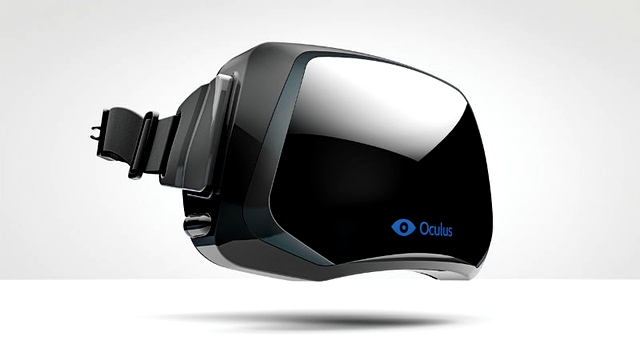
Although yet to achieve mainstream success, the virtual reality market is predicted to experience massive growth according to the latest research from Juniper.
In a whitepaper titled The Rise of Virtual Reality, it is claimed that approximately 30 million virtual reality headsets will have been sold by 2020 with sales topping $4 billion.
According to the study, the breakthrough year for VR is set to be 2016, with three million headsets expected to be sold. Although many of the initial sales are expected to be in the form of video game accessories, VR headsets do have the potential to expand into other industries.
Over the next year, a number of high profile technology firms are expected to launch their own VR headsets including the Facebook-owned Oculus, Sony and HTC. Although pricing and release dates are hard to come by, the hype surrounding these headsets is growing. Earlier this week, Sony revealed that its offering (previously known as Project Morpheus) would be rebranded as PlayStation VR.
In terms of a geographical split, the biggest market for virtual reality devices is expected to be North America, but Asian countries will not be far behind and should represent 10 million sales by 2020. China’s recent decision to lift the ban on video games is likely to drive VR success in the region.
As well as having the potential to revolutionize the entertainment industry, virtual reality headsets have possible applications in the industrial and healthcare markets. In order to achieve widespread use, however, a number of technical issues must first be overcome with some users complaining of nausea when using early test builds.
Published under license from ITProPortal.com, a Net Communities Ltd Publication. All rights reserved.
-

As drone-related incidents are on the rise, is more regulation needed?
Publié: septembre 10, 2015, 7:59am CEST par Barclay Ballard

Last week one of the biggest events in the tennis calendar was disrupted as a small drone crashed into the stands at the Louis Armstrong Stadium. The US Open clash between Flavia Pennetta and Monica Niculescu may have only experienced a brief hiatus and no spectators, thankfully, were hurt, but the incident was unfortunately not a one-off.
Just two days after the crash at the Grand Slam match, a drone also crash-landed at the University of Kentucky football stadium prior to the match against Louisiana-Lafayette and it’s not just sporting events that are falling foul of amateur aviation enthusiasts. Emergency services are also struggling, with drones posing a significant hazard to airborne firefighters and medical teams. According to the US Forest Service there have been more than 13 instances of drones interfering with attempts to extinguish wildfires since the start of 2015. Not only do they risk endangering individuals that may be caught up in the blaze, they also pose a serious threat to emergency services staff.
Increasingly, drones are proving more of a disruptive influence than a great technological enabler and part of the reason is that the legal system is responding much slower than the technology industry. Recent developments have made drones more easily available to members of the public and subsequently we are seeing an increasing number of vehicles in the hands of people who have little to no aviation experience. In the US alone, for example, drone sales are expected to total 700,000 this year, marking an increase of 270,000 when compared with 2014 and up 572,000 compared to the year previous.
Although the Federal Aviation Administration (FAA) has started a "Know Before You Fly" campaign aimed at raising awareness of safe drone use, it seems to be falling on deaf ears. Safety guidelines include that aircraft must fly below 400 feet, must remain clear of manned aircraft operations and should not fly near airports, people or stadiums, but reckless drone use continues to make the headlines.
There has been much legal wrangling over commercial drone use, causing delays to projects by Amazon and Google, but consumer drone use has received less stringent action. This is, partly, a reasonably stance to take as commercial drones are generally heavier and can reach faster speeds, making them significantly more dangerous than those in the hands of the public. But consumer drones can weigh nearly three kilograms and achieve speeds of 50mph, which is still large enough and fast enough to cause damage to people and other aircraft.
Following recent incidents, law enforcement is taking a dim view of any disruptions caused by drones. Daniel Verley, the owner of the drone that interrupted last week’s US Open tennis match, was arrested for reckless endangerment, reckless operation of a drone and operating a drone in a New York City public park outside of a prescribed area and is due in court at a later date.
Although no one has yet been seriously injured as a result of a consumer drone, the growing number of incidents is concerning. It’s important for regulators to not only pass legislation on drone use, but also raise the public’s awareness of their own responsibilities so that the teething problems surrounding this new technology do not lead to a serious accident.
Published under license from ITProPortal.com, a Net Communities Ltd Publication. All rights reserved.
Image Credit: boscorelli /Shutterstock
-

Baby monitors are not secure enough for the IoT era
Publié: septembre 4, 2015, 1:59pm CEST par Barclay Ballard

Many popular baby monitors with online access lack even the most basic security features, according to a report by IT security firm Rapid7.
Researchers revealed that it would extremely simple for hackers to use the devices as spy cameras or to launch attacks on other Internet-connected devices in the home.
According to Rapid7, the monitoring cameras have hidden, unchangeable passwords that can be used to gain access to the video stream and often these are published either in instruction manuals or online. Some of the devices also failed to implement adequate encryption, making them susceptible to hacking.
The revelations suggest that existing security protocols are ill-equipped to deal with the Internet of Things (IoT) and the expected surge in the numbers of devices that connect online.
"It is important to stress that most of the vulnerabilities and exposures discussed in this paper are trivial to exploit by a reasonably competent attacker, especially in the context of a focused campaign against company officers or other key business personnel", explains the Rapid7 report.
"If those key personnel are operating IoT devices on networks that are routinely exposed to business assets, a compromise on an otherwise relatively low-value target -- like the video baby monitors covered in this paper -- can quickly provide a path to compromise of the larger, nominally external, organizational network", adds Rapid7.
Researchers also stressed that purchasing more expensive IoT devices was not a way of ensuring greater security. In fact, higher priced models often come with a greater number of features that can make them more susceptible to hacking.
In total, Rapid7’s research investigated seven baby monitors manufactured by six different companies, finding severe security flaws in all of them.
Published under license from ITProPortal.com, a Net Communities Ltd Publication. All rights reserved.
Photo Credit: Piotr Adamowicz/Shutterstock
-

Amazon Prime customers can watch videos offline
Publié: septembre 4, 2015, 12:00am CEST par Barclay Ballard
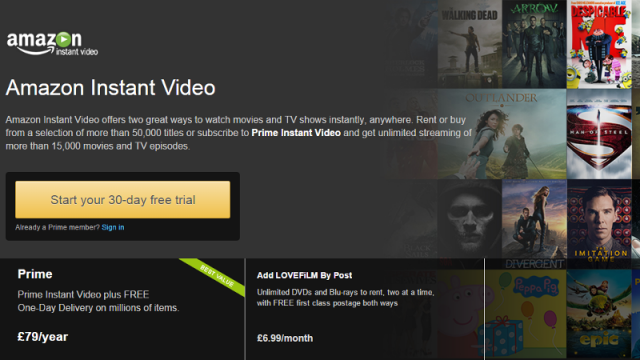
The battle for online streaming supremacy is heating up, after Amazon announced that Prime subscribers can now download videos for offline viewing.
The move stands in stark contrast to the position taken by rival content provider Netflix, which has consistently stated that offline content is not on its agenda.
Amazon Prime customers will now have access to the offline viewing feature across smartphones and tablets using both iOS and Google’s Android operating system. Amazon previously trialled downloadable content through its own Kindle Fire tablets, but is now extending the feature. Amazon Prime subscribers will also be pleased to note that the ability to watch content offline comes at no extra cost.
"There’s no doubt that the way people watch entertainment is changing -- anytime, anywhere viewing is important and we are excited to provide our Prime members with offline viewing capabilities on iOS and Android platforms starting today", explained Michael Paull, vice president of digital video at Amazon. "We are proud to be the first and only online subscription streaming service that enables offline viewing -- on vacation, in a car, at the beach, on a plane, wherever our Prime members want to watch they can, regardless of Internet connection".
Not all Prime content is available for download, however, with rights issues preventing access to Amazon’s full repertoire. Still, all of the firm’s Original Series works are available, such as Transparent and Bosch, as well as some high-profile third-party films and TV shows including The Imitation Game and Peppa Pig.
For anyone wishing to keep content to watch when offline, it’s simply a case of hitting the "Download" button in the film or TV show’s details page when using the Amazon Video app. However, it appears that anyone receiving Amazon Prime via another family member’s account will not receive the download feature and Android users will first have to download the app from Amazon’s own Appstore, as it is not available via Google Play.
Published under license from ITProPortal.com, a Net Communities Ltd Publication. All rights reserved.
-

Google will relegate mobile sites that serve large ads
Publié: septembre 3, 2015, 11:07am CEST par Barclay Ballard

Google has announced that it will downgrade websites that use interstitial advertisements in its mobile search results.
Although desktop searches will not be affected, Google’s new initiative is a response to claims that mobile users are often being subjected to an unsatisfying search experience.
Interstitial ads are those that cover the entire user interface and, despite the fact that they are often easily closed, Google has explained that sites that use them will now no longer be classified as mobile-friendly.
"Sometimes a user may tap on a search result on a mobile device and see an app install interstitial that hides a significant amount of content and prompts the user to install an app", explained Daniel Bathgate, software engineer at Google Search. "Our analysis shows that it is not a good search experience and can be frustrating for users because they are expecting to see the content of the web page".
Google first announced major changes to its mobile algorithm back in April, but has only now made its position on interstitial advertising clear. The policy will come into effect on November 1, but websites that use banner ads will not be adversely affected.
Often websites use interstitial ads across mobile sites in order to encourage users to download their mobile app. High-traffic sites like Etsy and Yelp both use this tactic and now risk finding themselves lower down Google’s search results unless they change their website design.
Google recommends that any website designers now use app install banners instead as these are less intrusive for the user. The search engine giant also offers an easy-to-use Mobile-Friendly Test where web developers can enter their URL to check if their site complies with the new regulations.
Published under license from ITProPortal.com, a Net Communities Ltd Publication. All rights reserved.
Photo Credit: Mr.Exen/Shutterstock
-

Why Hadoop is the obvious choice for managing Big Data
Publié: août 31, 2015, 9:54am CEST par Barclay Ballard

Big Data promises businesses a number of advantages, but in order to harness these effectively they must first choose the right software to engage with and analyze vast quantities of information.
For many organizations, including high profile firms like Facebook and Yahoo, Hadoop is the software of choice when it comes to managing Big Data. In fact, the global Hadoop market is reported to be growing at around 55 percent a year and is expected to be worth $20.9 billion by 2018.
Although Hadoop benefitted from being one of the early players on the Big Data scene -- it began life as a Yahoo side-project in 2005 -- its success isn’t simply a case of the early bird catching the worm. The company’s decision to embrace open-source technology was also beneficial, allowing it to integrate with a huge number of databases, algorithms and query languages. It also ensured that customers were not locked into a single vendor, meaning they were more comfortable adopting the software.
Of course, Hadoop’s success is also based on the many real-world benefits that it offers businesses. For example, Hadoop allows you to store files that are too large to be contained on a single node or server, enabling you to store a huge number of large files. Another of its features, MapReduce, enables data to be processed at greater speeds by using parallel processing -- problems that used to take days to overcome can now be solved in hours or minutes.
Considering that Hadoop has now been available for more than three years, the platform’s ability to adapt to new Big Data challenges is another reason for its success. Hadoop 2.0 was released in October 2013 and continuous updates since then have ensured that it remains as relevant as ever for tackling Big Data challenges.
Published under license from ITProPortal.com, a Net Communities Ltd Publication. All rights reserved.
-

Second Formula E championship starts in October, introduces new rules
Publié: août 27, 2015, 3:11pm CEST par Barclay Ballard

The Formula E championship is set to return in just under two months and will be accompanied by some new rules and updated cars. The new season begins in Beijing on 17 October and takes in nine other locations including Berlin, Paris and London.
Teams are now allowed to modify their cars, within limits, in order to gain an advantage. Last year, all the vehicles were identical but for the upcoming season, drivetrains and gears can be customized. All the cars will have the same battery power unit, however, something that Audi driver Lucas di Grassi believes will generate a close contest.
"The cars performance has been limited so all teams have the same power", he told the Express. "Although some cars have different gears and drivetrains I’m expecting the season to be very close".
The competition is hoping to raise awareness of green technology by demonstrating that environmentally friendly doesn’t necessarily mean slow races. The Formula E cars are capable of travelling from 0 to 60 in three seconds and have a top speed in excess of 140mph.
In fact, next season also promises to deliver some excitement from an unlikely source -- the safety car. Qualcomm’s BMW i8 safety car can travel at speeds of 160mph and uses an innovative wireless charging system to refill its batteries without a plug in less than an hour.
Last season’s competition came to a dramatic close on the streets of London when Nelson Piquet Jr. became the first ever Formula E champion in front of an enthusiastic crowd. The Brazilian driver will begin his title defense in Beijing, competing against a host of familiar names from Formula One including Jacques Villeneuve and Nick Heidfeld.
Published under license from ITProPortal.com, a Net Communities Ltd Publication. All rights reserved.
-

Summing up BYOD advantages, disadvantages and alternatives
Publié: août 24, 2015, 2:11pm CEST par Barclay Ballard

Bring your own device, or BYOD, is certainly something that businesses can no longer afford to ignore. By 2017, Gartner predicts that half of all employers will require staff to provide their own work devices.
But before organizations ultimately decide to embrace or reject BYOD, they must be aware of the advantages and disadvantages at the heart of this mobile dilemma.
The benefits of BYOD are well documented. By using their own devices, employees gain a greater sense of autonomy and responsibility, which in turn manifests itself as better staff morale. Bring your own device policies also give employees greater flexibility by enabling them to choose their own smartphone and mean they are likely to be contactable and productive even when away from the office. Already stretched IT budgets will also save themselves significant sums by not having to purchase smartphones for employees and avoiding maintenance costs.
However, BYOD also poses challenges, chiefly that it is difficult for businesses to retain control of their own data when they do not own the devices on which it is stored. Enforcing password security and robust firewall protection is also difficult when employees can purchase and manage their own devices. If a personal device is lost or stolen, the potentially sensitive business information stored within it is also at risk.
However, there are options available to IT leaders wishing to implement BYOD without compromising their company’s security. Firstly, there are BYOD variations that might be more suitable, including CYOD (choose your own device) and COPE (corporate owned, personally enabled).
Both of these options place restrictions on the devices that employees can use for work, giving the business greater control, but still allow staff a degree of mobility. Mobile device management (MDM) software is another possibility, as it enables firms to oversee the movement and storage of company data and software.
Overall, it’s up to each business to assess the risks and benefits of BYOD before deciding whether or not to implement it.
Published under license from ITProPortal.com, a Net Communities Ltd Publication. All rights reserved.
Image Credit: Syda Productions / Shutterstock
-

Vaio laptops return to US, but are consumers interested?
Publié: août 20, 2015, 11:03am CEST par Barclay Ballard

Vaio, the computer business formerly owned by Sony, is taking its first steps outside of its native Japan.
Sony sold the PC business back in February, and although it does retain a minority five percent stake, as a result of the declining laptop market, it opted to focus on smartphone sales.
However, Vaio continues to operate as an independent business, producing products that differ little from the laptops being sold prior to the split. Previously, these devices were only available in Japan, but now the new Vaio is set to launch its first product in the US.
US customers can register their interest in the Vaio Z Canvas 2-in-1 now, although it is not expected to be available for purchase until October. The device was launched in Japan earlier this year and comes with a 12.3-inch display and boasts a detachable keyboard and stylus, allowing it to double up as a tablet.
In an interview with the Wall Street Journal, Vaio chief executive Yoshimi Ota said that his company had plans for further releases in the States, including a "document-size laptop with cellular capability" and perhaps something more left-field.
"Whether it’s humanoid or dog-shaped, we plan to start making Vaio-branded robots in the near future", Mr Ota claimed.
Vaio has plans to target the Brazilian market next, and its US expansion is likely to benefit from customers already being aware of the brand name. However, industry analysts have doubted whether the company can succeed in the international laptop market. The business was sold by Sony due to it being unprofitable and it currently makes up less than one percent of the Japanese market.
Published under license from ITProPortal.com, a Net Communities Ltd Publication. All rights reserved.
-

Hackers make $100 million profit from stolen news releases
Publié: août 13, 2015, 4:43pm CEST par Barclay Ballard

Hackers, predominantly based in Ukraine and Russia, repeatedly infiltrated the networks of Business Wire, Marketwired and PR Newswire over a period of five years in order to gain profitable information.
Nine of the alleged hackers have now been indicted in the US, charged with stealing more than 100,000 news releases, making more than $30 million. In total, it is believed that 32 hackers have made in excess of $100 million via illegal trading of corporate information.
Federal prosecutors, in conjunction with regulators from the Securities and Exchange Commission have now announced a series of arrests and revealed the names of those being indicted. Vitaly Korchevsky, believed to have made $17 million through the scheme, was arrested on Tuesday alongside four other men.
By acquiring the news releases ahead of schedule, individuals were able to gain an advantage in the stock market. Illegal traders often issued hackers with a "shopping list" of companies that they wished to trade on and paid them either a one-off fee or a percentage of their profits.
The investigating authorities added that the traders were careful to conceal their actions, only trading on approximately 800 of the hundreds of thousands of press releases that they acquired. Overall, information pertaining to more than 30 companies, including the likes of Bank of America and Honeywell, was illegally traded.
However, many of the hackers spoke openly online about their actions using Internet chat rooms and the authorities have been investigating some of the individuals involved for years. In 2012, for example, they seized a laptop belonging to one of the hackers and found 200 non-public news releases from PR Newswire.
Law enforcement officials have already recovered tens of millions of dollars from the offenders’ bank accounts as well as seizing property acquired with the hacking proceeds. Matthew L. Schwartz, a lawyer at Boies, Schiller and Flexner that specialises in digital crime said that the case highlights the importance of online information.
"When we think of hackers who try to profit from their crimes, we usually think about people who steal bank account information or sell sensitive personally identifying information", he explained. "The reality, as exemplified by today’s charges, is that hackers can obtain access to all sorts of valuable information and can and will profit off of it in every way imaginable".
Published under license from ITProPortal.com, a Net Communities Ltd Publication. All rights reserved.
-

Facebook looks for ways to boost its ad revenue in India
Publié: août 13, 2015, 3:03pm CEST par Barclay Ballard
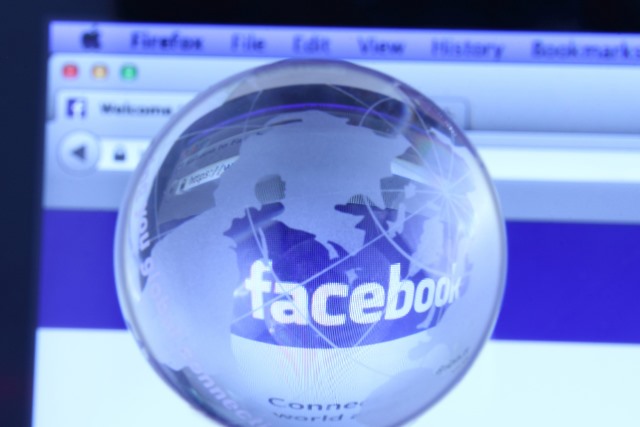
Facebook is attempting to boost its advertising revenue in India after struggling in the Asian country.
The social network is offering businesses free email support regarding marketing questions and advice on how to increase sales.
Facebook also began providing an advertising feature specific to India last year called "click to missed call". Users simply select the feature while browsing Facebook and they will automatically call the advertiser, but hang up immediately. This saves the user from having to pay for the call and then the advertiser calls back with a pre-recorded message. According to Venture Beat, Garnier Men, an Indian subsidiary of L’Oréal has experienced a huge sales uplift as a result of the feature.
Facebook’s marketing push in the country is the result of its revenue figures trailing behind other markets. The Mark Zuckerberg-owned company has 132 million users in India, second only to its 193 million US members, but earns just 15 cents per user compared to between $7 and $8 in its native country. Its competitors are also faring better in India, with Google estimated to have brought in $350 million per quarter in contrast to Facebook’s $15 million.
The problem is not limited to Facebook alone, however. Indian advertisers remain sceptical about social networks as a valid medium and are much more likely to use television to publicise their brand.
"We really need to help them see how Facebook pages and advertising will help grow their businesses", explained Andy Hwang, Facebook director of SMBs for the Asia Pacific region.
Success in India also has wider ramifications for Facebook. It is viewed as a testing ground for many other emerging markets with both Facebook Lite and the company’s Internet.org programme launching in the country recently. Gaining a stranglehold on the Indian market is also vitally important because of the difficulty of making inroads into the world’s most populous country, China.
Photo credit: dolphfyn / Shutterstock
Published under license from ITProPortal.com, a Net Communities Ltd Publication. All rights reserved.
-

New 'yolk and shell' battery technology could fully charge a smartphone in minutes
Publié: août 13, 2015, 9:30am CEST par Barclay Ballard

A new form of battery technology is being developed that could see smartphones charged in just a few minutes.
Researchers at the Massachusetts Institute of Technology (MIT), in partnership with China’s Tsinghua University, have designed a "yolk and shell" battery that overcomes existing design flaws.
The lithium-ion batteries currently used in smartphones and other consumer gadgets lose charge over time because they expand and contract during each charging cycle, placing strain on their charging capacity. However, by using a protective shell made up of nanoparticles, the anode inside can expand and contract without causing itself damage.
It has also enabled researchers to replace the graphite traditionally used for the anode with aluminium, which is both cheaper and more efficient. The Sydney Morning Herald reports that aluminium anodes can store more than five times as many ampere-hours-per gram than graphite, but because they expand and contract at a faster rate they are usually more unstable. The yolk and shell approach helps to alleviate this problem.
The design should prove inexpensive to manufacture and can be produced on a mass scale. It is already at the testing stage and MIT claims that it is "quite close to being ready" for use in smartphones and similar devices.
David Lou, associate professor of chemical and biomolecular engineering at Nanyang Technological University in Singapore, was not involved with the battery’s development but has high hopes for the technology. "These yolk-shell particles show very impressive performance in lab-scale testing," he said. "To me, the most attractive point of this work is that the process appears simple and scalable. Simple things make real impact in the battery field".
Published under license from ITProPortal.com, a Net Communities Ltd Publication. All rights reserved.
-

China moves to increase online censorship even further
Publié: août 6, 2015, 5:00pm CEST par Barclay Ballard

China’s online censorship program has taken a decidedly aggressive turn, following the announcement that police officers will now be stationed inside large Internet companies.
The country’s deputy minister of public security Chen Zhimin revealed the plans earlier this week and explained that "network security offices" would be set up inside digital firms "to find out about illegal Internet activity more quickly".
The decision to increase internal regulations is hardly surprising given that China is well known for its draconian online censorship program. It already employs the so-called Great Firewall of China to criminalize certain forms of online speech and activities and block access to a number of sites. Recently the Chinese government has also been accused of launching DDoS attacks at websites trying to circumvent its censorship program -- an approach dubbed the "Great Cannon".
Some of China’s larger online companies, the likes of web services company Baidu, already have to ensure that their content is free from pornographic and violent material as well as political content that criticizes the Chinese Communist Party (CCP).
The Financial Times reports that some users of Sina Weibo, a popular Chinese social network, and messaging app WeChat have had their accounts deleted for "rumor mongering" or have even been arrested for posting images relating to last year’s Occupy Hong Kong movement.
Currently, the Chinese government have not explained the logistics of having officials placed within online companies, but if the scheme is implemented it will give companies little opportunity to avoid enforcing government regulations. Zhang Baichuan, founder of network security company Youxia, believes that the goal is to "create an intimidating atmosphere inside the companies themselves".
China has been in hot water recently for its oppressive Internet controls. Last month, Human Rights Watch criticized its proposed cyber security law, which would limit online anonymity.
Published under license from ITProPortal.com, a Net Communities Ltd Publication. All rights reserved.
Photo credit: karen roach / Shutterstock
-

Apple Watch and Android compatibility: Should it happen?
Publié: juillet 27, 2015, 10:43am CEST par Barclay Ballard
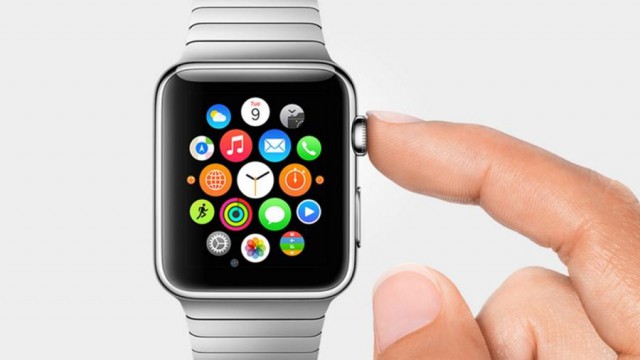
The Apple Watch has only been available a few months, but it has already captured a sizable portion of the wearable market. Selling 4.2 million units throughout the second quarter of 2015, it has stolen an early march on its rivals, particularly the many wearables that use Android Wear as their primary operating system.
The question remains, however: how much longer can Apple continue to dominate the market with its self-imposed restrictions? The Apple Watch is only compatible with the iPhone 5 and later models running at least iOS 8.2, cutting off a huge proportion of consumers who use Android handsets. If Apple wants its new smartwatch to have genuine mass appeal, it will struggle under these terms.
Apple will always be limited in some way by its walled-garden. Even with its hugely impressive sales figures, in terms of overall market share, Apple made up just 18.3 percent of smartphone sales in the first quarter of 2015, while Android dominated with 78 percent. Growing iPhone sales in China will help bridge the gap somewhat, but even then they face fierce competition from budget Android handsets.
From a technical standpoint, however, making the Apple Watch compatible with Android phones is a tall order. Both the Apple Watch and recent iOS releases have been developed concurrently with compatibility in mind. The Apple Watch could conceivably be modified to work with Android handsets, but the functionality would be severely reduced. Pebble smartwatches are able to work with both operating systems, but because they only integrate with apps rather than on a deeper level with the OS, the performance is limited.
Perhaps more likely than getting into bed with Android, future versions of the Apple Watch will be able to work without being paired with any phone at all. Manufacturers are already developing smartwatches with 4G connectivity, enabling them to possess more standalone features. If Apple harnesses this technology for its future wearables, it can target the Android market, without compromising on its own values.
Apple possesses a premium quality, even if this is sometimes held together by little more than impressive marketing. By opening up the Apple Watch to Android smartphones, Apple would no longer be in complete control of its own products’ functionality, being restricted by the capabilities of the smartphone that it is synced with. Recent history indicates that it would be extremely reticent to agree to this restriction, which suggests that Android Wear devices and the Apple Watch will continue to serve different audiences.
Ultimately, while this may be frustrating for a small number of consumers who would prefer to keep their Android smartphone, but pair it with the Apple Watch, keeping the two ecosystems separate offers its benefits too. It ensures that iOS and Android remain distinct, giving consumers a greater range of devices to choose from. The sheer number of Android smartwatches out there means that although you can’t use an 18-carat gold Apple Watch with your Samsung Galaxy S6, there are plenty of premium Android Wear devices out there to soften the blow.
Published under license from ITProPortal.com, a Net Communities Ltd Publication. All rights reserved.
-

Google Glass' future is in the enterprise
Publié: juillet 17, 2015, 10:46am CEST par Barclay Ballard

Rumors are growing that Google Glass is about to make a return. Back in January, the search giant announced that the commercially available Explorer Edition was being discontinued. Although the company would surely have liked more consumers to take the plunge, its £1,000 price tag deterred many. However, Google Glass has not been killed off but is merely lying dormant, with Google claiming that it has learnt much from its Explorer program, using it as a kind of "open-beta".
Sources now indicate that Google Glass Enterprise Edition will soon be launched, targeting the business environment. Although there has been no official word on the release, Google has confirmed that the next iteration of Glass is in development and targeting the enterprise landscape actually makes a lot of sense.
Firstly, one of the primary reasons that the Explorer Edition was not hugely successful is that there were not enough apps available for members of the public -- essentially, there wasn’t that much you could use it for. On the other hand, Google Glass has already proven useful in certain work environments. Healthcare professionals have used the device for hands-free recording of information and more immersive surgical training. Augmedix, a startup that uses Glass to automate the record keeping process in hospitals, demonstrates that the device can encourage innovation in the workplace.
Google itself recognized that its awkward looking eyewear may be a bit too "out there" for members of the public, when it launched the Glass for Work program last year, encouraging developers to create apps specifically for enterprise firms.
What’s more, many businesses have used Google Glass with positive results. Virgin Atlantic Airlines carried out a successful six week trial providing customer service to passengers at Heathrow Airport. The ability to record and instantly back-up footage in the cloud has also seen Google Glass gain fans in the security industry.
Enterprise firms have already benefitted hugely from using smartphones and tablets in the workplace, reaping the rewards of the increased mobility that they provide and wearables are likely to provide a similar boost. Recent studies have shown that employees that use wearable devices exhibit an additional 8.5 percent productivity and a 3.5 percent increase in job satisfaction.
Video is also a great way of improving both internal communications and external marketing and Glass provides a simple way of creating new footage. It can also be used to create seamless presentations with a number of apps available that allow you to control slides while speaking. As another Internet connected device, Google Glass provides an additional communication channel in the work environment, enabling increased collaboration. Conference calls, in particular, could become more similar to face-to-face meetings with some minor improvement to the Glass hardware.
Google Glass Enterprise Edition is also likely to benefit from the change in public opinion towards wearables. The number of wearable devices on the market has grown hugely since Google Glass was officially launched in 2013 and if the Apple Watch is successful then this trend is likely to continue. Although public opinion will surely differ on smart glasses and smartwatches, the growing number of connected devices creates a more receptive environment for the next version of Google Glass.
If the rumors are true and Google is about to release an Enterprise Edition of its Google Glass hardware, it would do well to market it more effectively. The original iteration was let down by a lack of purpose and this will need to be rectified if it is to succeed in the business environment, but all the ingredients are there for Google Glass to take the workplace by storm and secure a place in the lucrative enterprise market.
Published under license from ITProPortal.com, a Net Communities Ltd Publication. All rights reserved.
-

Hacking collectives target major firms for profit
Publié: juillet 10, 2015, 5:44pm CEST par Barclay Ballard

Security researchers at Symantec have discovered that a number of well-known hacking collectives are actually highly trained independent groups targeting large corporations for financial gain.
The likes of Apple, Facebook and Twitter have all faced cyberattacks in the past and it is now thought that this is only viable if the information that is acquired is then sold or traded through some "financial market".
Vikram Thakur, senior manager at Symantec, indicated that several of these groups are being tracked and their methods analyzed. FIN4 is one such group, which uses knowledge of the investment banking industry and social engineering to acquire email address and other personal information. Although FIN4 has less technical skill than some other hacking groups, it has still instigated breaches at a number of large corporations.
Symantec has identified another group, which it has dubbed Morpho and is believed to be responsible for several Silicon Valley breaches in 2013. Morpho frequently uses the "watering hole" technique, infecting websites which are likely to attract their target victim. The hacking collective has been known to target iPhone developers as well as the pharmaceutical and aviation industries. Symantec is aware of 49 organisations that have been breached by Morpho since 2012, with numbers rising each year.
Symantec explained that because the group use multiple proxies to disguise its location, it is difficult to apprehend any of its members. The use of encryption to hide where they’ve stored stolen information also makes the job of law enforcement more challenging.
"Based on the profile of the victims and the type of information targeted by the attackers, Symantec believes that Morpho is financially motivated, stealing information it can potentially profit from", the security researcher explained. "The group appears to be agnostic about the nationality of its targets, leading us to believe that Morpho is unaffiliated to any nation state".
According to Symantec, law enforcement in both the US and Europe have been informed of its research in the hope that it can help prevent future attacks.
Photo credit: Adchariyaphoto/Shutterstock
Published under license from ITProPortal.com, a Net Communities Ltd Publication. All rights reserved.
-

How Mozilla plans to attract new Firefox users
Publié: juillet 8, 2015, 6:48pm CEST par Barclay Ballard
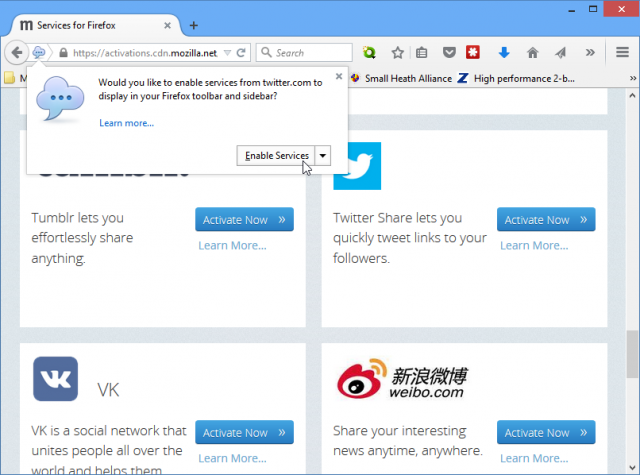
Firefox is set to introduce a host of new features in an attempt to win back users. The web browser, developed by Mozilla, has seen its usage share fall steadily since 2010 as other browsers, notable Google Chrome, have become more popular.
In an email to Firefox developers, the browser’s director of engineering Dave Camp outlined the Three Pillars of the new Firefox, features that he hopes will ensure that the next release is the best it can possibly be.
The first pillar is Uncompromised Quality and focusing on existing features. Any half-finished ideas need to be refined to perfection or removed -- a program that is being dubbed internally as "Great or Dead".
"Every feature in the browser should be polished, functional, and a joy to use", Mr Camp wrote. "Where we can’t get it to that state, we shouldn’t do it at all. In some cases that will mean spending time to make it great. In other cases that will mean removing code that we don’t see ourselves improving any time soon".
The second pillar, Best of the Web, focuses on add-ons, specifically improving security and performance and increasing the number of partnerships with third parties.
Uniquely Firefox is the third pillar and is less specific. Its main aim is to attract new users by focusing on distinguishing features like Private Browsing mode.
The other major change coming to Firefox is the decision to switch from its XUL and XBL languages currently used to create the user interface. Most of the web now uses HTML5, but it is not clear what route Firefox will go down once it decides to ditch its old browser languages.
It remains to be seen whether the proposed changes to will result in users and developers coming back to Firefox, but Mozilla will certainly be keen to prevent its userbase from getting any smaller.
Published under license from ITProPortal.com, a Net Communities Ltd Publication. All rights reserved.
-

How to find out who unfriended you on Facebook
Publié: juillet 7, 2015, 10:03am CEST par Barclay Ballard

Ever wanted to know when one of your Facebook friends deletes you? Well now there’s an app that’ll tell you that and more.
Unsurprisingly named "Who Deleted Me on Facebook", the app shows you which accounts have unfriended you, which have become deactivated and who is online.
Users simply sign in with their Facebook details and can then receive notifications when they’re deleted. The app can be downloaded on Android and iOS and is also available as a Chrome browser extension.
Who Deleted Me was previously available as a Facebook extension, but this was discontinued over claims that the social network limited what the software could do. It works by saving your friend’s list when you first log-in, and then regularly compares it against your current list, enabling you to see which accounts have deleted you. This means that it won’t be able to tell you anything about accounts that have unfriended you prior to you using the app.
The software is very similar to the Who Unfollowed Me app which enables you to track when Twitter users unfollow your account.
Published under license from ITProPortal.com, a Net Communities Ltd Publication. All rights reserved.
-

The world's smallest drone can be had for just $35
Publié: juillet 3, 2015, 12:35pm CEST par Barclay Ballard
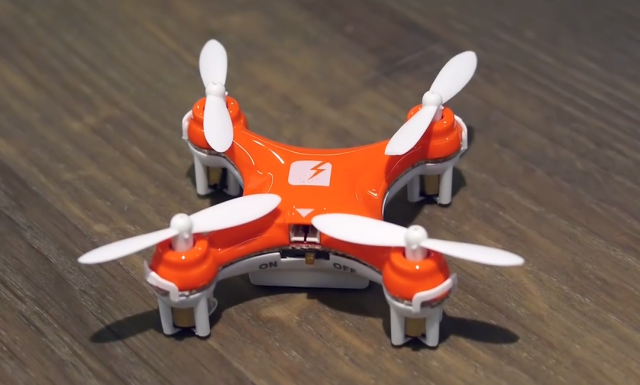
Drones are a much talked about technological development, but they have yet to really take off with members of the public.
There is a whole host of factors holding them back, regulations being chief among them, but it seems size certainly isn’t going to be an issue. Particularly when drones are being made that can easily fit into the palm of your hand.
The SKEYE Nano Drone claims to be the world’s smallest drone, measuring just 4 x 4 x 2.2 cm and weighing 11.9 grams. Despite its minuscule size, the device is still capable of precision airborne stunts due to its 6-axis flight control system and adjustable gyro sensitivity. It also comes with a 100mAh battery which takes 30 minutes to charge and offers approximately seven to eight minutes of uninterrupted flight time.
Due its small size, it’s not clear whether the SKEYE quadcopter would be subject to the same regulations as larger devices, particularly given that it’s hardly likely to cause much damage should it crash into anything.
The SKEYE Nano Drone is currently available from StackSocial for just $35 (£22.50) for a limited time only. Its usual price is $60 (£38.50). The popularity of drones is increasing all the time, something that has caused headaches for aviation officials, and being able to purchase portable models like the SKEYE Nano is only likely to continue this trend.
Published under license from ITProPortal.com, a Net Communities Ltd Publication. All rights reserved.
-

Battery drain on iOS 8.4? Blame Apple Music
Publié: juillet 2, 2015, 3:09pm CEST par Barclay Ballard

The latest update to Apple’s operating system may have only been available to the public for a couple of days, but complaints are already starting to emerge.
Reports are circulating that iOS 8.4 is a huge drain on the user’s battery life and apparently Apple Music is to blame.
Some users of iOS 8.4 have reported losing 60 percent of battery capacity in an hour, and many others have reported similar issues when compared to iOS 8.3. Although iOS updates have been known to cause battery problems in the past, the fact that the latest issue is being attributed to the release of Apple Music will come as a blow to the firm’s recently launched streaming service.
Apple Music Radio users in the UK also reported being unable to access featured stations, with an error message being displayed instead, informing listeners to "try again later". So far, Apple has not commented on the issue.
If you have already downloaded iOS 8.4, you may have to adjust your smartphone settings to prolong your battery life and it’s always a good idea to check if apps are running in the background. Regarding Apple Music, streaming services can be a huge battery drain whether you’re using Wi-Fi or mobile data, so you may want to download songs and listen to them locally if possible.
Although Apple Music does seem to be experiencing some teething problems, the service has experienced some high-profile endorsements from musicians over the last week. Radiohead frontman Thom Yorke, who had pulled material from rival platform Spotify, has decided to include his solo music on the service, while Taylor Swift has also made her tracks available after resolving a dispute over royalties.
Published under license from ITProPortal.com, a Net Communities Ltd Publication. All rights reserved.
Photo Credit: Kheng Guan Toh/Shutterstock
-

You'll be able to buy this jetpack for $150,000
Publié: juin 29, 2015, 8:58pm CEST par Barclay Ballard

The dreams of science fiction fans could be about to come true after the world’s first commercially available jetpack was unveiled.
The Martin Jetpack has been in development for 35 years and will be available next year for $150,000 (£95,000).
Although most fictional depictions of jetpacks use rockets to propel the wearer upwards, the Martin model uses two fans either side of the pilot in order to gain greater control. The fans are driven by a two-liter petrol engine and can carry up to 120kg of weight. Prospective buyers will be pleased to know that it also comes with a low-altitude parachute.
The latest version of the device was shown at last month’s Paris Air Show, where it achieved speeds of 74 kilometers per hour and was capable of flying constantly for 30 minutes. It is also claimed that pilots will be able to reach altitudes of 1,000 meters.
Although the Martin Jetpack appears to be a largely useless, but entertaining gadget, its manufacturers believe that it could prove helpful to emergency services teams.
"For example, in the fire services going around to look at the situational awareness of what’s going on, perhaps through water security or even search and rescue on beach patrol, something along those lines", explained Martin chief executive Peter Coker. "Naturally for the ambulance service getting to a point of importance of rescuing people in the shortest possible time. So there’s a lot of uses within that first responder environment".
The jetpack’s ability to take off and land in confined spaces is its main advantage over other forms of air travel and it will be made available to the emergency services from the second-half of 2016. Martin will then begin selling the product commercially from 2017.
Published under license from ITProPortal.com, a Net Communities Ltd Publication. All rights reserved.
-

Seagate, Western Digital to launch new high-capacity portable drives
Publié: juin 23, 2015, 8:57pm CEST par Barclay Ballard

Both Western Digital and Seagate are set to launch the latest entries in their portable hard drive ranges, bringing consumers more storage than ever before.
As more and more high resolution images and videos are being used by consumers, the demand for storage has grown rapidly in recent years.
As a result, Western Digital will launch the latest hard drive in its My Passport Ultra range, giving consumers USB 3.0 interface and 2TB of storage space. Seagate’s latest release in its Seven range will be developed in conjunction with its internal Samsung HDD department and offer 4TB of storage.
The focus of both companies on portability is likely to stem from the fact that more and more users are relying on their smartphones and tablets to consumer data. This demand for increased mobility has meant that hard drives must also be as compact as possible. Western Digital’s My Passport Ultra measures just 11 x 8.15 x 1.27 cm and weighs just 153 grams. Seagate’s Samsung hard drives will be similarly portable, fitting inside a 2.5-inch case.
"Previously only attainable in desktop or bulky multi-drive internal designs, we can now achieve a 4TB capacity in a compact drive thanks to the latest Samsung HDD technology", said Dave Klenske, director of product line management at Samsung HDD. "By going to a single drive solution, we can power the drive through just a USB connection while fitting it into a case that is only a 1/10 of an inch thicker than our 2TB drive. They are the perfect lightweight drives for notebook computer owners who need to access media collections too large to fit on traditional internal storage options".
It has not yet been confirmed when either of the ultra-portable offerings will be available commercially, but Western Digital’s 3TB drive is expected to launch in July, while the new Seagate devices are likely to launch later this month.
Published under license from ITProPortal.com, a Net Communities Ltd Publication. All rights reserved.
Image Credit: Be Good / Shutterstock
-

Windows Server 2003 still used on many servers, despite approaching end-of-support
Publié: juin 22, 2015, 9:06pm CEST par Barclay Ballard
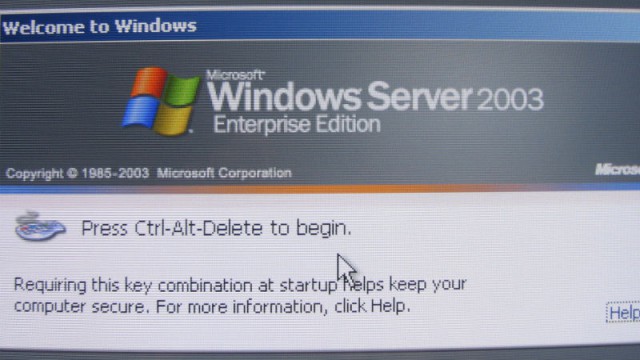
A large number of organizations are continuing to use Windows Server 2003, despite Microsoft announcing that support for the operating system will cease in less than a month.
According to a recent study by Softchoice, 21 percent of servers were still operating the OS in the first half of 2015, a fall of 11 percent compared with the same period twelve months ago.
Although the report is sure to be disappointing for Microsoft, it is unlikely to come as a huge surprise as the company has long been trying to move businesses away from legacy systems. David Brisbois, senior manager of assessment and technology at Softchoice, believes that companies’ reticence to change could ultimately prove costly.
"With less than a month to go until Windows [Microsoft] pulls support for Windows Server 2003, it’s surprising that there still isn’t a greater sense of urgency among organizations to modernize and upgrade their systems", he said. "Failing to upgrade in time will only add to costs, complicate the transition, and result in serious business risk after 14 July when Microsoft is no longer providing support or security updates".
In its analysis of almost 90,000 servers being used across 200 organizations, Softchoice found that just seven percent have completely migrated to newer operating systems. By continuing to use an OS that is not supported by its developer, businesses are subject to increased security risks and could be in breach of industry regulations leading to fines and other penalties.
Even if businesses are choosing to upgrade, they are, for the most part, switching to Windows Server 2008, rather than Microsoft’s most recent offering, Windows Server 2012. Just 12 percent of servers are currently running the newest OS, compared with 66 percent running Windows Server 2008.
Aside from convincing data centers to upgrade their operating system, Microsoft is also tasked with convincing consumers and businesses to upgrade to Windows 10 when it launches later this year.
Published under license from ITProPortal.com, a Net Communities Ltd Publication. All rights reserved.
-

Minds is a privacy-focused social network backed by Anonymous
Publié: juin 18, 2015, 5:30pm CEST par Barclay Ballard

The likes of Facebook and Twitter have a new competitor, in the shape of a social network committed to privacy and transparency.
Minds.com has received support from the well-known online activist group Anonymous and promises to remain free and open source.
The platform will work similarly to other social networks, with users able to share posts with their followers. They can also vote on updates and post comments, but crucially, Minds distinguishes itself from other social networks through its approach to user privacy.
"Your privacy is important to us, and it is Minds' policy to respect the privacy of our users regarding any information we may collect while operating our websites".
The site lists a number of fundamental principles that it promises to stand by, including never asking for personal information unless it is absolutely necessary, not storing this information and encrypting all communications.
Other social networks like Facebook have been accused of handing personal data over to government authorities, particularly in the wake of Edward Snowden’s NSA revelations. Research has shown that some members of the public no longer trust larger online companies with their personal information.
Minds will be hoping to capitalize on this feeling of distrust, but as the company will not harness user data to serve adverts, its revenue will have to come from other sources. Individuals can use Minds to launch social networks of their own and can pay monthly subscriptions to acquire more bandwidth and support.
Minds has been launched, albeit as an alpha release, online and via a mobile app. The platform is open source, so users are encouraged to help contribute to the site’s design and layout. Anonymous have already given its backing to the site, asking members to support open-source, encrypted networks in order to create a "top site of the people, by the people and for people".
Published under license from ITProPortal.com, a Net Communities Ltd Publication. All rights reserved.
-

The 10 best presents for Father's Day
Publié: juin 17, 2015, 6:13pm CEST par Barclay Ballard

Father’s Day is fast approaching and time is running out to secure the perfect gift. Luckily, there’s a whole host of potential presents for the tech-obsessed fathers out there, ranging from the practical to the practically useless.
So whether it’s a novelty gadget you’re after or something he’s likely to use every day, we’ve rounded up the best gift ideas for Father’s Day 2015.
Jawbone UP2 -- $99.99/£89.95
For more active dads, a fitness tracker is a great gift, letting him measure his progress and set achievable targets. The Jawbone UP series comes with a range of features, including calorie monitoring and sleep tracking, so there’s plenty to keep him entertained.
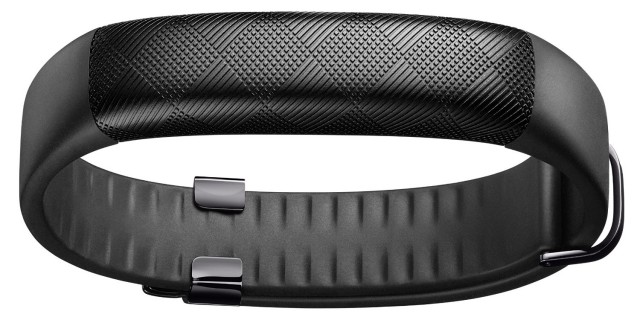
Although the UP3 is shipping soon, its predecessor the UP2 is still highly thought of and can be purchased for less than $100/£90 on Amazon.
Belkin WeMo Smart Lightbulb -- $20.99/£22.62
If your dad is the sort of guy that loves to have everything synced up to his smartphone, then these WeMo Smart lightbulbs could be the perfect gift.

By connecting to your home’s Wi-Fi network, they can be controlled remotely from anywhere and can be dimmed and brightened as and when necessary. As LED bulbs, they also make a great energy saving option.
Raspberry Pi 2 Model B -- $43.35/£28.99
The budget computer that has taken the world by storm may be three years old now, but with the latest model, the Raspberry Pi 2 (Model B), only available since February, now is a great time to make a purchase.

Whether he’s an expert coder or complete novice, the Raspberry Pi offers a wealth of possibilities and can be turned into a retro gaming console or smart home hub, amongst many other potential uses.
Apple Watch -- from $349/£299
If your dad is an iPhone user, then why not get him the latest gadget that everyone’s talking about -- the Apple Watch.

The device works as a fitness tracker, a mobile payment device, a remote for Apple TV and can be used to receive texts and phone calls, so there’s plenty of features to get to grips with. Plus, it comes in a huge variety of models, so there’s bound to be one that fits your dad’s tastes.
HipKey Proximity and Movement Alarm -- $$69.5/£49.99
We all get a bit forgetful in our old age, and if your dad is always misplacing his keys or anything else then the hipKey proximity and movement alarm might be just what the doctor ordered.

Simply attach a sensor to whatever it is that you’re always misplacing and your iPhone will emit an alarm when you are a certain distance away.
Braven BRV-1 Waterproof Speakers -- $135/£92.00
You might not be a fan of their music, but dads still enjoy blasting out a tune from time to time. Braven’s waterproof speakers are built for outdoor use, so if your father likes to spend his time gardening, fishing or surfing huge waves, then these speakers can withstand rainfall and splashing.
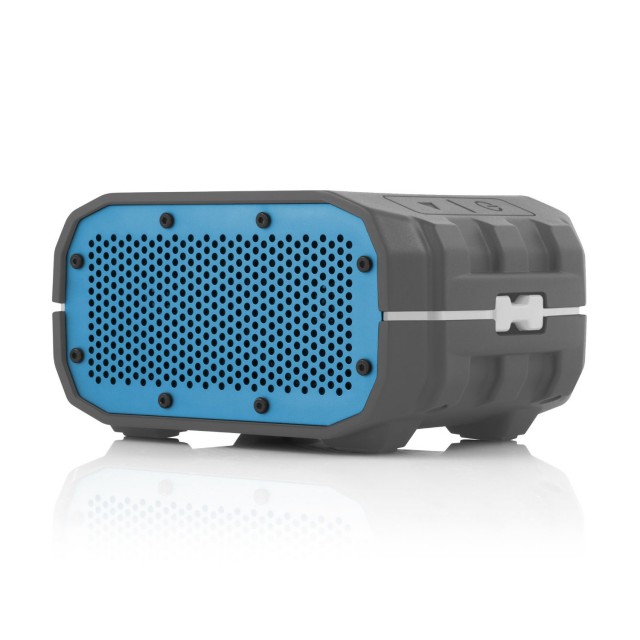
They’re also wireless, so are a great present for the coming summer months.
PowerUp 3.0 Smartphone Controlled Paper-Airplane -- $54.99/£39.99
If your dad is still a child at heart, then why not get him a futuristic take on a pastime well-known to every child: the paper airplane.

The PowerUp 3.0 can be attached to any ordinary piece of paper and lets you control it simply by tilting your smartphone or tablet. And yes, it is crash resistant -- a feature that is definitely required.
Luckies Smart Phone Projector 2.0 -- $26.99/£18.52
It may only be made of cardboard (except for the glass lens), but the Smartphone Projector 2.0 still makes a great gift for film-loving fathers by turning your smartphone display into a big-screen projector.

The device works with both iOS and Android handsets and is lightweight for easy portability.
Intex Pure Spa Hot Tub -- $329.99/£583.99
Everyone dreams of having a hot tub in their garden, but installing one can be extremely costly. Intex’s inflatable four-person hot tub is a little more cost effective, however, but still durable enough to be left outside for extended periods of time.

If you want to inject a bit of luxury into your dad’s life this Father’s Day, then the Pure Spa Hot Tub makes the ideal gift.
Kindle Voyage -- $199.99/£169.00
For the avid readers out there, the Kindle Voyage is a great offering in Amazon's well-known e-reader range.

It comes with an adaptive front light that automatically changes to provide the best light level and a redesigned look that sees it become the thinnest Kindle ever.
Published under license from ITProPortal.com, a Net Communities Ltd Publication. All rights reserved.
Photo Credit: manaemedia/Shutterstock
-

Tesla's affordable Model III to offer 250 mile range
Publié: juin 17, 2015, 3:50pm CEST par Barclay Ballard

Some more information has been revealed regarding Tesla’s latest automotive offering.
Elon Musk confirmed that the Tesla Model III will be able to cover at least 250 miles on a single charge, marking an improvement on the previously stated figure of 200 miles.
The compact sedan also fares well against the companies more expensive vehicles. The Model S can travel for 253 miles on a single charge, while the Roadster achieves 245 miles, but both cars will cost significantly more than the Model III, which will cost just $35,000 (£22,380) when it launches next year.
Currently, Tesla’s other models cost in excess of £50,000, but the company has been able to offer a lower priced car due to improvements in battery technology and improved charging infrastructure. In particular, Elon Musk has been keen to stress that charging stations are needed not only in residential areas, but also near places of work and popular travel destinations.
The lower price is expected to be a huge selling point for Tesla, particularly as price has long been the main barrier to mass adoption of electric vehicles. The Model III will also be cheaper than competitors like the Chevrolet Bolt, which has a price tag of $38,000.
Before the Model III goes on sale, Tesla will able to determine the chances of an electric vehicle achieving mainstream success with the launch of its Model X automobile. The Model X will begin shipping in three to four months’ time and provides buyers with 230 miles on a single charge and costs $80,000.
Providing environmentally friendly vehicles is a huge aim for a number of different companies, including long-established automobile firms like BMW, Mercedes Benz and Nissan. However, there is some disagreement over which technology will prove successful in the long term. While some businesses are focusing their efforts on hydrogen fuel cell technology, Elon Musk and his company believe that the process of extracting energy from hydrogen is overly expensive.
Published under license from ITProPortal.com, a Net Communities Ltd Publication. All rights reserved.
-

Amazon building huge solar farm to power Web Services
Publié: juin 12, 2015, 4:08pm CEST par Barclay Ballard

Amazon Web Services (AWS) is about to become a lot more environmentally friendly after announcing the construction of an 80 megawatt solar farm.
The green proposal will generate 170,000 megawatt hours (MWh) of solar power each year, the equivalent of approximately 15,000 US homes.
The solar farm, which will become the biggest in the state of Virginia, will primarily be used to power Amazon’s datacentres as part of the company’s commitment to use 100 percent renewable energy for its global AWS infrastructure. Currently, Amazon Web Services counts 25 percent of its energy use as renewable, with the aim of raising this figure to 40 percent by the end of 2016.
Vice president of infrastructure at AWS Jerry Hunter believes that the solar farm, due to open in October 2016, will also prove beneficial to the state of Virginia as a whole.
"We continue to make significant progress towards our long-term commitment to power the global AWS infrastructure with 100 percent renewable energy", he said. "Amazon Solar Farm US East -- the second PPA (Power Purchase Agreement) that will serve both existing and planned AWS datacenters in the central and eastern US -- has the added benefit of working to increase the availability of renewable energy in the Commonwealth of Virginia.”
The renewable project will be jointly developed with Community Energy, an energy company that has developed solar farms across the US. It is not clear how much Amazon will be contributing to the project, nor how much energy will be made available to other organizations in Virginia.
Amazon is hardly the first technology giant to implement a greener approach to datacentre management. Apple and Facebook both have environmentally friendly projects in place, while Google is rumored to be working on using tidal power to run its servers.
Published under license from ITProPortal.com, a Net Communities Ltd Publication. All rights reserved.
Image Credit: Vaclav Volrab/Shutterstock
-

Piracy is good for Netflix
Publié: juin 10, 2015, 8:59am CEST par Barclay Ballard

You might assume that Netflix, the world’s most popular video streaming service, would put out a fierce condemnation of online piracy, but CEO Reed Hastings is taking a much more accepting stance.
Speaking ahead of his company’s launch in Spain in October, Hastings indicated that piracy creates a market receptive to watching content online -- a necessity for his businesses to succeed.
"I think Spain will be one of our most successful countries. There is a high rate of Internet connectivity and a population that is accustomed to the use of electronic commerce and that has shown signs of being interested in our product. We are very optimistic", Hastings told El Mundo.
|Well, you can call [piracy] a problem, but the truth is that it has also created a public that is now used to viewing content on the Internet", added Hastings.
Copyright holders may well be aghast, but Hastings certainly has a point and his comments echo those of many others that stress that the key to fighting piracy is not to clamp down on file sharers and their affiliated sites, but to offer consumers a viable alternative. The Netflix CEO compared the online content market to that of drinking water -- just because people have access to tap water, doesn’t mean that bottled water is doomed to fail. Likewise, Hastings sees the potential for a successful business even in parts of the world where piracy is widespread.
In fact, studies of online piracy can prove hugely beneficial to legal services. Analyzing the reasons why individuals choose to download content illegally can help entertainment platforms offer a more appealing alternative and help move the discussion away from overly simplistic suggestions that piracy advocates simply don’t want to pay for anything.
Research from last year suggests that movie pirates in particular are more than happy to pay for content, actually spending more money on average to see films legally than those who do not consume pirated content. The reason being that movie pirates are simply bigger consumers of media than those that stick solely to legal methods.
Convenience is often a major factor behind the decision to pirate content, aside from cost, and this is where legal services have to improve their offering. Netflix recognizes this and has long been insisting that fighting piracy head-on is not an effective approach. "We offer a simpler and more immediate alternative to finding a torrent", Hastings explains.
Netflix has already experienced successful launches in countries like the Netherlands where illegally acquiring content was commonplace, suggesting that the service shouldn’t experience many issues when it comes to Spain, Italy or Portugal later this year.
Unchecked piracy has obviously caused significant damage to distributors, artists and studios in both the music and movie industries, but for too long the approach has been reactive. The decision to block The Pirate Bay, one of the web’s most notorious file sharing sites, has been largely ineffective, simply pushing users to the site’s many proxies.
Therefore, the words of Netflix CEO Reed Hastings are hugely refreshing. Piracy is not a victimless crime, but it is not the only reason for the problems plaguing the creative industries. The worlds of movies and music must both find a way of convincing users to choose legal methods instead of piracy if they are to be successful in the future.
Published under license from ITProPortal.com, a Net Communities Ltd Publication. All rights reserved.
Photo credit: Sukharevskyy Dmytro (nevodka) / Shutterstock
-

E-sports could become as popular as football
Publié: juin 8, 2015, 9:25pm CEST par Barclay Ballard

The number of people who watch e-sports is approximately the same as those who watch NHL hockey and its popularity is continuing to grow. The chief executive of gaming and entertainment firm Unikrn Rahul Sood believes that by 2017 it will be as popular as the NFL. Should the popular game, football, be worried about a virtual pretender to its crown?
Since the advent of online gaming and competitive multiplayer competition, e-sports have experienced rapid growth to the extent that major broadcasters are beginning to take note. E-sports are regularly streamed online via services like Twitch, but TV stations in the US, Norway and East Asia have also broadcast events live.
It wasn’t long ago that playing video games in your spare time, apart from mainstream titles like FIFA and Call of Duty, could be the subject of ridicule and playing video games competitively largely unheard of amongst the public. However, that perception is steadily changing. The highest earning e-sport competitors have made in excess of $1 million simply from playing games, while the US government now recognizes players as "professional athletes" in order to streamline the visa process and allow overseas gamers to compete in American tournaments.
However, financial rewards aren’t the only driving force behind the growth of e-sports, particularly when only the most successful can claim it as a full-time career.
Instead, the popularity of e-sports from a competitor’s viewpoint is more often than not fueled by a love of playing video games throughout childhood. The diverse range of video games available, catering to different age groups and played at various difficulty levels means that as a form of entertainment it is hugely accessible. Fighting games like Street Fighter, strategy titles such as StarCraft and sports games like FIFA all have e-sports scenes, giving competitions broad appeal.
Unlike the majority of traditional sports, e-sports also enable players to play against each other unburdened by spectators or even an opponent. Online gaming allows players to hone their skills in private, making it much easier to enter as a novice than physical sports and with more and more young people being exposed to gaming at a young age, mobile devices could fuel the next generation of competitive e-sport players.
Already the industry has come a long way in the past ten years or so, making celebrities out of its players and those associated with tournaments. John Bain, AKA TotalBiscuit, made a name for himself commentating on LAN tournaments and StarCraft events and now his YouTube channel has more than two million subscribers.
However, sports can only continue to exist with supporters, and this is where e-sports have made great strides. However, even with its recent popularity growth, some viewers are likely to struggle to understand the appeal of watching someone else play a video game.
Jimmy Shelton, of the Verge, explained that his love of e-sports stems from a love of watching a skilful individual -- much like in any other sport.
"I pride myself in my own video game skills -- my first-person shooter skills, specifically. I’m better than my friends and my co-workers", he explained. "Professional gamers are superhuman, just like LeBron James and Sidney Crosby are superhuman -- consistently capable of performing feats that seem impossible. There’s one main difference with e-sports, though: most viewers understand what’s happening in basketball and hockey. Even just visually, video games can be dauntingly complicated".
Although e-sports are now watched by thousands, it’s unlikely that it will ever surpass football’s popularity -- played by an estimated 250 million people and watched by somewhere between 3.3 and 3.5 billion fans.
If it is to continue its growth, however, it will have to continue to erode any remaining stigma associated with playing video games competitively. Ultimately, while many are being converted, e-sports still have a long way to go to convince people that it’s worthwhile watching other people playing video games.
Published under license from ITProPortal.com, a Net Communities Ltd Publication. All rights reserved.
Image Credit: Dikiiy / Shutterstock
-

PayPal angers consumers with telemarketing agreement
Publié: juin 6, 2015, 7:02am CEST par Barclay Ballard

Anyone who’s ever received an automated PPI spam phone call will know that receiving pre-recorded messages, often which have no relevance to you whatsoever, can be very annoying. In fact, unwanted telemarketing of any kind can be a real turn-off for consumers, which is why many people are disappointed by recent changes to PayPal’s terms of service.
The company website lists the new agreement clearly and suggests that customers could soon be receiving a lot more unsolicited calls and texts from not only PayPal, but its affiliated businesses too.
"You consent to receive autodialed or pre-recorded calls and text messages from PayPal at any telephone number that you have provided us or that we have otherwise obtained", the website explains. "[PayPal] may share your phone numbers with our Affiliates or with our service providers, such as billing or collections companies, who we have contracted with to assist us in pursuing our rights".
Major news outlets have been quick to pick up on the changes, focusing on the terms which suggest that the company can effectively pester its customers for any reason it likes. The agreement states that PayPal can contact individuals with information regarding their account, dispute resolution, debt collection, opinion polls or to share "offers and promotions".
The latter two reasons are certainly vague enough to give PayPal the option of contacting customers with what could be classified as "spam" messages and phone calls. Perhaps more worrying for existing customers is that they don’t have much of a choice. They can either accept the new terms, or if you choose to decline, you have 30 days in which to close down your account.
While the world’s media may be blowing the story somewhat out of proportion -- it remains to be seen exactly how PayPal will implement the changes -- customers are understandably concerned.
People’s personal data has become increasingly commoditized since the growth of the Internet and smartphones, with many companies trading this information for huge sums of money. Unfortunately, as is the case with the new PayPal agreement, customers have little say in what happens to their own data, particularly when the choice is: agree to our terms or get out.
Perhaps even more sickening to consumers is the fact that companies selling user information to "affiliate" companies, as PayPal has stated it will, are viewed as greedy, treating their customers as nothing more than cash cows. Does a company that posted revenue in excess of $2 billion in the first quarter of 2015 needs to use consumer data in this way? Or, perhaps more pertinently, is it wise to do so?
The reaction to the news has been overwhelmingly negative, but will customers put their money where their mouth is and leave the service?
Whether or not PayPal comes to regret its new terms ultimately depends on how the firm chooses to implement them. Spam customers with too much telemarketing and it’s likely they’ll switch allegiances to a rival service, particularly with the number of e-commerce options steadily rising. Apple Pay, Google Wallet and WePay are just some of the payment services out there waiting to de-throne PayPal and the company’s new service agreement may have just given them all the ammunition they need.
Published under license from ITProPortal.com, a Net Communities Ltd Publication. All rights reserved.
Photo Credit: ollyy/Shutterstock
-

Virginia opens up 70 miles of highway for testing self-driving cars
Publié: juin 5, 2015, 9:40am CEST par Barclay Ballard

The state of Virginia has announced that it is making 70 miles of highway available for the testing of self-driving vehicles.
The "Virginia Automated Corridors" will be located in the northern part of the state and will be managed by the Virginia Tech Transportation Institute (VTTI).
Before cars are allowed to use the highway, they will first have to complete a series of trials at the institute’s Smart Road in Montgomery County and the Virginia International Raceway in Halifax County to ensure the technology is not a danger to other road users.
Myra Blanco, director of the VTTI’s Center for Automated Vehicle Systems told the Richmond Times-Dispatch that the state’s decision will foster technological growth in the area.
"Other states are saying you need to prove that independently you can do all this testing. What we are trying to do is show them how to do the testing and how to facilitate the process as well", she said. "I think this is going to help us advance the technology and even more important, to attract companies and satellite offices in the Northern Virginia area to develop these new concepts".
Ms Blanco added that she expects automated cars to be on Virginia roads within 12 months, but explained that vehicles would still need to have a driver present, should any of the on-board systems fail.
So far, there are no confirmed manufacturers signed up to the initiative, but VTTI is likely to have no shortage of interested parties, with a number of firms developing self-driving vehicles. Google’s automated car has already racked up almost 2 million miles, while the likes of Elon Musk’s Tesla, BMW and Audi are all developing self-driving vehicles of their own.
In preparation for the arrival of automated vehicles, the Virginia Department of Transportation and Department of Motor Vehicles will be making sure highways are in the best condition to be recognized by the car’s sensors. The state is also adding smart features to sections of the highway to alert vehicles of oncoming traffic or emergency vehicles.
Published under license from ITProPortal.com, a Net Communities Ltd Publication. All rights reserved.
Photo Credit: RioPatuca/Shutterstock
-

The best 5 running apps
Publié: juin 4, 2015, 9:31am CEST par Barclay Ballard

While you certainly don’t need technology to get the blood pumping, there are a huge number of fitness apps out there that can help encourage and focus your exercise regime.
If you do need some help getting your running shoes on, then we’ve listed five of the best apps for motivation, technique and fitness monitoring currently available.
Runkeeper (Android, iOS)
Runkeeper is perfect for budding athletes who want a no-frills running app that provides all the essential information they need. Using your smartphone’s GPS to track your exercise, Runkeeper monitors your speed, distance run, exercise time, calories burnt and a number of other fitness metrics.
Users can also download popular running routes in the local area or upload ones of their own. They can also view their previous activity to check if their making progress and how often they’ve run. As a nice bonus, the app also enables runners to take and tag pictures and upload them to their route.
PUMATRAC (Android, iOS)
Runners who are looking for a more detailed analysis of their activity may want to try out PUMATRAC. The app includes the usual running metrics, but also analyses the weather and times of your run to see if this has an effect on your performance. PUMATRAC can also gather insights from your Spotify playlists to see if the music you listen to has an impact.
Social features are also a major part of PUMATRAC allowing users to interact with other runners and see where they stand on a virtual leaderboard. And, for those days when the weather outside is just too bad to face, the app includes a treadmill toggle, enabling users to track their indoor runs.
Run with Map My Run (Android, iOS)
Map My Fitness has been in the exercise business for nearly a decade now, so it knows what it’s doing when it comes to running apps. Run with Map My Run may not be the catchiest name, but don’t let that put you off.
The app measures your distance travelled, time taken and average speed and gives runners access to real-time measurements as well as completed totals. The paid version also comes with a few additional features such as voice coaching and locations sharing.
For those of you out there that use a smartwatch, Run with Map My Run also comes with Android Wear and Apple Watch support.
Zombies, Run! (Android, iOS)
Zombies, Run! takes a slightly more unusual approach to motivation, using the threat of being eaten alive by hordes of the undead to give you a little extra push.
The app essentially turns your workout into a game by adding a zombie apocalypse narrative to your run via headphone audio. Runners are given a number of missions that when completed grant them access to items that can be used to develop your base. The app is currently in its fourth season, with more than 200 missions currently available.
You can also share your progress online, with over one million other players of Zombies, Run!
UP by Jawbone (Android, iOS)
Jawbone may be best known for its wearable fitness trackers, but the California-based firm also makes an excellent running app for Android and iOS handsets. UP uses your smartphone’s built-in sensors to monitor important fitness metrics, but it also allows users to input nutritional information and details about their sleeping patterns manually.
The app also comes with its own intelligent fitness guide, called Smart Coach, which will give you advice on how to improve your workout and ultimately turn running data into valuable insights.
Published under license from ITProPortal.com, a Net Communities Ltd Publication. All rights reserved.
Photo Credits: ostill/Shutterstock
-

Earn money with these five apps
Publié: juin 3, 2015, 11:16am CEST par Barclay Ballard

We’ve all heard of apps costing you money -- anyone who’s played Candy Crush Saga is well aware that mobile software can be a major drain on the wallet -- but what about apps that can improve your financial situation?
Although the following apps are unlikely to make you millions, they can provide you with a bit of extra spending money each month, many of which require no more work than simply interacting with your phone.
TaskRabbit
The TaskRabbit concept isn’t particularly revolutionary -- getting paid in exchange for carrying out tasks -- but giving users a mobile platform to access jobs in the local area has certainly made the process a lot easier.
The app is currently available in a number of US cities, but only operates in London in the UK. In order to join the service as a "Tasker", you’ll need to be approved first but once that’s out of the way, you can start earning some pocket money by completing a number of jobs. If you fancy yourself as a handyman, dog walker, cleaner, or all-round helpful individual, then why not sign up and start earning?
Receipt Hog
Making money simply by taking photographs of receipts may sound too good to be true, but it is possible with Receipt Hog.
Receipt Hog users supply the company with valuable market research and are rewarded with coins, which can then be exchanged for real money. 1,000 coins in the app translates to $5, which can then be redeemed via PayPal or gift cards.
Long-time users of the app will also get the chance to earn money through other methods such as filling out consumer surveys.
Slidejoy
How many times do you swipe your phone’s lock screen each day? For most people, it’s too many times to remember, but every time you do, you could be earning money.
Slidejoy replaces your usual lock screen with a promoted news story or advert tailored to you. Users can decide to swipe left to see more information about the content, swipe up for an alternative lock screen or swipe right to get to your home screen.
The good thing is, whether you choose to engage or ignore the ad, you’ll still received the same amount of money, with pay-outs determined purely on the number of times you use your lock screen. Users can decide to receive their money via PayPal or choose to donate it to a number of charities supported by the app.
On average users can make between $5 and 15 each month, so it’s a great way to earn some cash in exchange for very little effort.
Viggle
Viggle doesn’t reward users with cash per se, but it does offer plenty of gifts and other rewards, simply for watching TV or listening to music. Whenever you’re watching a show or playing a track, simply activate the Viggle app and it will identify the content and reward you with points. TV shows earn one point for every minute you’re checked in, while songs also see your score increase.
Once you have enough points they can be redeemed for more audio and visual content or cashed in to buy electronics, trips away or gift cards. Since the app launched in 2011, Viggle has given away more than $22 million in rewards.
Inbox Dollars
As you can tell from this list, market research is a multi-million pound industry and you can help yourself to a slice of that particular pie with a number of apps.
One of the most popular is Inbox Dollars, which pays users to take surveys, play games and surf the Internet. Users are paid via cheque once they’ve earned $30, but you will receive $5 just for joining.
The app also offers discounts at a number of online retailers in the US, including Walmart and GAP.
Published under license from ITProPortal.com, a Net Communities Ltd Publication. All rights reserved.
Image Credit: nopporn / Shutterstock
-

The benefits of 3D printing in healthcare
Publié: mai 29, 2015, 5:13pm CEST par Barclay Ballard

It may not have made major headlines, but earlier this month a story broke that demonstrates how 3D printing is making a huge impact in the medical industry. A sea turtle that had been injured colliding with a motor boat had its beak replaced with a 3D printed prosthetic. Providing the part is not rejected, the turtle could even be allowed to return to the sea.
However, 3D printing has potential health benefits to humans too, many of which we are currently discovering. Earlier this month, for example, cosmetics firm L’Oreal announced a partnership with Organovo to 3D print human skin. Although the collaboration is for use in the beauty industry, the overlaps of biology and 3D printing could provide benefits for burns victims and those suffering from skin conditions.
Research is currently being conducted into the possibility of 3D printers being able to replicate the complex organs that sustain our bodies. Researchers at Princeton University have successfully printed a prototype outer ear from hydrogel, human cells and silver nanoparticles. Tailor made joints and bones can also be produced.
In fact, the ability to produce personalized medical solutions is one of the main advantages of 3D-printing. Unique parts are usually costly and time consuming to produce, but when printers are combined with the 3D imaging techniques already being used by the health industry, this becomes a more viable solution.
Considering the idea of 3D printing a human organ still sounds like it belongs to the world of science fiction, the technology is making great strides. In 2014, printed body parts made up sales in excess of $500 million.
However, there are still a number of hurdles to be overcome before we can consider 3D printers as means of full organ replacement. Currently, the most advanced research surrounding internal organs is only able to produce partial tissue samples suitable for testing, and Jennifer Lewis, a bioengineer at Harvard University, believes the industry may never provide a perfect solution to organ replacements.
"I would love for that to be true", she says. "But these are highly complicated architectures".
Despite the reservations, 3D printing is already providing significant benefits to the health industry. Earlier this year, a two-year-old girl born with a serious heart defect underwent a life-saving operation to patch a hole between her ventricles. The patch had to be constructed with the upmost precision, so doctors at St. Thomas Hospital, London turned to 3D printing to ensure the operation was a success.
3D printers are also being used to provide prosthetics at a much lower cost than previously possible. Prosthetics for certain parts of the body, such as the hands, are subject to so much wear and tear that the cost of producing them, sometimes as much as $10,000, can be prohibitive. Similarly, for young children who can outgrow their prosthetics in just a few months, traditional methods of producing replacement limbs are not practical. By contrast, 3D printers can be used to produce customizable prosthetic hands for a few hundred dollars, making them accessible to a much larger proportion of patients.
The technology can also be used in less obvious ways to aid the medical industry. Scientists have found that printing cells enables them to carry out tests in a more systematic environment, which allows for more effective testing of treatments. This approach has been trialled by students at Harvard University Medical School on tumor cells.
The most obvious potential for 3D printing may be in the manufacturing industry, but the technology has a variety of uses, some that we are yet to discover. Whether or not 3D printers are eventually able to produce fully functioning organs is impossible to say, but the healthcare industry is already benefitting immensely from this relatively new technology.
Published under license from ITProPortal.com, a Net Communities Ltd Publication. All rights reserved.
Photo Credit: belekekin/Shutterstock
-

How robots can adapt to damages
Publié: mai 29, 2015, 11:24am CEST par Barclay Ballard

Researchers from France and the US have developed a robot that can adapt to being damaged.
Scientists at the Pierre and Marie Curie University and the University of Wyoming have developed software that enables machines to recognize an injury and react to it in the best way possible in order to continue with the task at hand.
Previously, when robots became damaged they attempted to continue operating in exactly the same way as they did prior to the trauma. This often led to poor completion of the task or inflicting further damage.
The Intelligent Trial and Error algorithm simulates a number of "intuitions" before the robot begins its work, which tell it what behaviors to carry out and assigns each one a value. This algorithm enables the robot to find the right behavior to compensate for specific types of damage.
"Once damaged, the robot becomes like a scientist", explains Antoine Cully, a PHD student at Pierre and Marie Curie University. "It has prior expectations about different behaviors that might work, and begins testing them. However, these predictions come from the simulated, undamaged robot. It has to find out which of them work, not only in reality, but given the damage".
Although developing robots that can carry out the wide variety of behaviors exhibited by living things is difficult, the algorithm is inspired by the animal kingdom, specifically the ability for animals to move when injured.
Researchers have already witnessed positive results, whereby robots that have damaged their hind legs, quickly switch to using their front ones. Eventually, robotics may advance enough that robots will actually be able to repair themselves, meaning much less time and resources spent on maintenance.
In the meantime, it is hoped that the ability for robots to adapt to damage could prove useful for machines sent into hazardous rescue operations.
Published under license from ITProPortal.com, a Net Communities Ltd Publication. All rights reserved.
-

Satya Nadella is the most-influential tech leader
Publié: mai 28, 2015, 11:12am CEST par Barclay Ballard
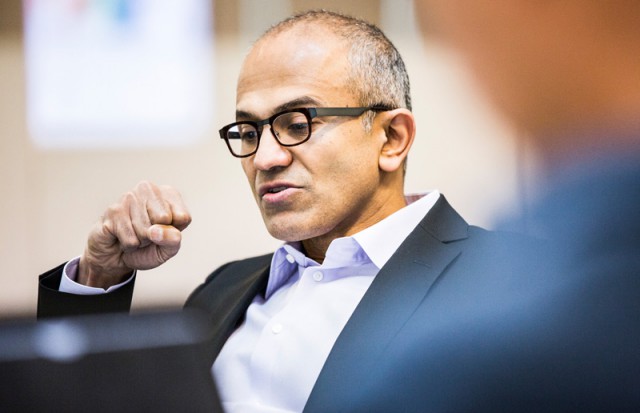
Microsoft CEO Satya Nadella has been revealed as the most influential technology leader by Juniper Research’s latest industry rankings.
The rankings are based on a number of factors, including vision, innovation and personal capital, and saw Nadella gain top spot as a result of the fundamental changes he is implementing at his company.
In particular, the move towards the "Windows-as-a-Service" model is seen as a significant departure from the company’s OS-focused approach.
Second place in the rankings is held by Jony Ive, Apple’s chief design officer, who is responsible for some of the company’s most iconic products such as the MacBook, iPod and iPad. As the lead designer for the recently released Apple Watch, Juniper Research argued that his work is likely to have a major impact on the smartwatch market going forward.
Perhaps less well-known amongst the general public, Razer co-founder and CEO Min-Liang Tan was named as the third most influential technology leader. His work as creative director has seen the gaming company embrace the fledgling virtual reality market.
Fourth place, meanwhile, goes to Travis Kelanick, co-founder of Uber, the app that has caused huge disruption to the taxi industry.
The list makes it clear that, in order to be viewed as influential, it is not enough to simply be at the head of one of the world’s largest firms. Instead, those featured have strived to make crucial changes at their respective companies and have generally influenced the industry on a wider scale.
The complete top ten list can be found below:
- Satya Nadella -- Microsoft CEO
- Jony Ive -- Apple SVP Design (now CDO)
- Min-Liang Tan -- Razer co-founder & CEO
- Travis Kalanick -- Uber CEO
- Reed Hastings -- Netflix co-founder & CEO
- Jack Ma -- Alibaba founder & chairman
- Paul Eremenko -- Google ATAP director
- Jeff Bezos -- Amazon founder & CEO
- Elon Musk -- Tesla chairman & CEO
- Lei Jun -- Xiaomi CEO
Published under license from ITProPortal.com, a Net Communities Ltd Publication. All rights reserved.
-

New vulnerability affects millions of routers -- update yours right away!
Publié: mai 21, 2015, 2:25pm CEST par Barclay Ballard
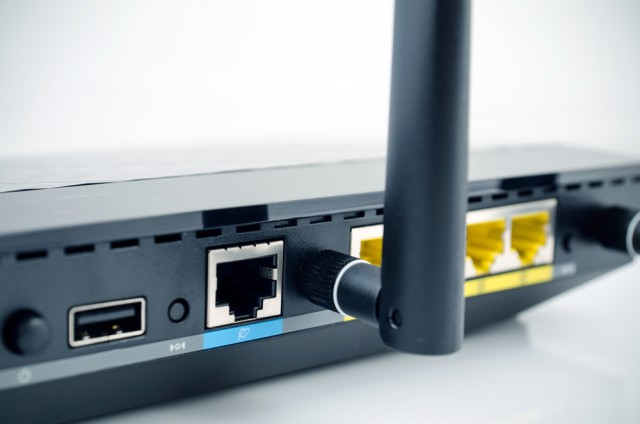
A vulnerability that leaves millions of routers and other Internet-connected devices open to remote hacking and similar cyberattacks has been discovered.
Stefan Viehbock of SEC Consult Vulnerability Lab explained in his blog that a piece of proprietary software developed in Taiwan, called NetUSB, is the root of the security flaw.
NetUSB provides network access between USB devices such as printers or external hard drives and Linux-based embedded systems like routers and other access points. However, Viehbock discovered during the authentication check which occurs before establishing a connection that a significant vulnerability is present.
"As part of the connection initiation, the client sends his computer name", he explains. "This is where it gets interesting: the client can specify the length of the computer name. By specifying a name longer than 64 characters, the stack buffer overflows when the computer name is received from the socket. All the server code runs in kernel mode, so this is a 'rare' remote kernel stack buffer overflow".
Stack buffer overflow flaws can cause programs to malfunction or crash, but can also be used to perform a deliberate cyberattack. It is possible to corrupt the stack by injecting malicious code into the program and gain control of the device remotely.
TP-Link, a manufacturer that uses the NetUSB software component, has already issued a security patch for 40 of its devices, but products being sold by other companies are also affected. Viehbock has released an advisory where he lists a number of vendors that could be at risk, including Netgear, TrendNet and Western Digital.
If your device has not had a patch issued for it, it may be possible to disable the NetUSB software using a web interface. In the meantime, KCodes, the developers behind NetUSB, have reportedly been unreceptive to the security concerns raised.
Published under license from ITProPortal.com, a Net Communities Ltd Publication. All rights reserved.
Image Credit: Piotr Adamowicz / Shutterstock
-

Tech giants asking Obama to support effective encryption, block backdoor requests
Publié: mai 20, 2015, 12:12pm CEST par Barclay Ballard

Several huge technology firms have come together to urge US President Barack Obama not to pass legislation demanding backdoor access to encrypted devices.
More than 140 companies and prominent figures in the tech industry, including the likes of Apple and Google, have sent an open letter to the White House proclaiming that "strong encryption is the cornerstone of the modern information economy’s security".
The letter is likely to be a response to calls from the FBI and Justice Department to include backdoors to allow them to access data on US citizens. Many have pointed out that including such a vulnerability leaves personal information subject to interception and surveillance, not just by the US government, but other parties as well.
The letter has also gained the support of three out of the five members of Obama’s review group set up in the wake of Edward Snowden’s NSA revelations. The letter stresses that the President should carry out the group’s recommendation to "fully support and not undermine efforts to create encryption standards".
One of the signatories from the presidential review group, Richard A. Clarke, who also worked as cyber-security adviser to President George W. Bush, noted that the government had failed in a previous attempt to pressure phone companies to include a backdoor for encrypted calls.
"If they couldn’t pull it off at the end of the Cold War, they sure as hell aren’t going to pull it off now", he told the Washington Post.
While public safety is a valid concern, security experts rightly point out that a backdoor enabling only the US government to access data is simply not possible. By deliberately introducing a vulnerability into devices and networks, President Obama would be introducing a security flaw that could be exploited by many others.
Published under license from ITProPortal.com, a Net Communities Ltd Publication. All rights reserved.
Image Credit: Maksim Kabakou / Shutterstock
-

Is someone stealing your Wi-Fi?
Publié: mai 19, 2015, 1:44pm CEST par Barclay Ballard

Wi-Fi access is growing all the time and that’s hardly surprising considering the amount of time we spend online and the need for employees to be increasingly mobile. The number of public hotspots are on the up, but that’s not the only way to get online.
Unauthorized access to your personal Wi-Fi can occur if the right precautions are not taken. One of the first things to do is to check the list of connected devices using your network. There are dedicated software packages that will help you do this, or alternatively, you can usually access your router’s settings by entering your IP address into your web browser search bar.
Once you’ve accessed your router’s settings, a list of connected devices should be readily available. Of course, in today’s digital world there are likely to be several devices using your home network including laptops, tablets, smartphones, video game consoles and many more. It’s also worth bearing in mind that devices with a static IP address will not appear in this list.
Of course, this isn’t a fool-proof way of seeing if anyone is using your Wi-Fi without permission. Aside from the use of static IP addresses, someone could change the name of their device to mimic one of yours. This could actually result in the genuine device being blocked from accessing the router as two devices with the same name cannot usually connect at the same time.
If you do notice a device that you don’t recognize or have suspicion of gaining unauthorized access, the first thing to do is to change your Wi-Fi password. As always the usual rules apply, so try to make the password one that is not easily guessed.
If you want a more robust means of checking your connection, there are a number of tools available that are free to download. Generally, these will display a list of devices currently online, but will have no way of knowing about previously connected devices -- a feature often included within the router interface.
However, software-based solutions do sometimes provide additional information that might help to identify a device, including its name, MAC address, and the manufacturer. The software may need you to configure your Wi-Fi settings slightly in order for it to work effectively, but once up and running it will enable you to check on your network whenever you need to.
Of course, most people won’t have cause to check their router, but there are some tell-tale signs that someone has been gaining unauthorized access. If your connection is a lot slower than it has been, it may be because extra devices are clogging up your bandwidth. As well as the issue this causes with Internet speeds, it may end up creating a significant financial burden if you do not have unlimited downloads. It also puts your devices at extra risk from viruses, as you do not know what websites are being accessed on your network without your permission.
Although in most instances, piggybacking on to someone else’s Wi-Fi network will be harmless, it is still illegal. In the UK, individuals have been charged with attempting to gain unauthorized online access, even when they have no malicious intent.
While you’re unlikely to be affected, it’s a good idea to check your Wi-Fi connection from time to time to make sure it is as secure as possible.
Published under license from ITProPortal.com, a Net Communities Ltd Publication. All rights reserved.
Photo Credit: Les Scholz/Shutterstock
-

How to turn iPad into a Mac or PC second screen
Publié: mai 19, 2015, 8:49am CEST par Barclay Ballard
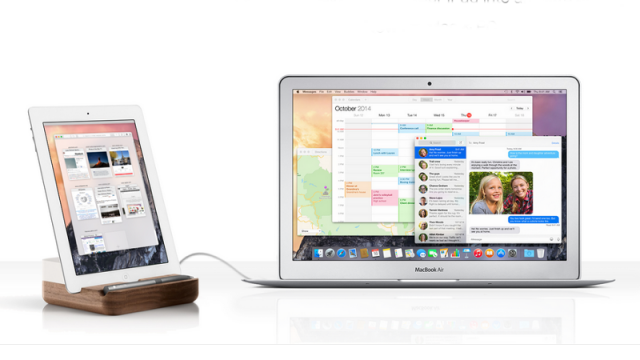
A newly released app enables iPad owners to use their tablet as a second monitor for their desktop PC.
Duet Display uses the iPad’s charging cord to connect to your PC and is now compatible with both Mac and Windows devices.
Rahul Dewan, the app’s designer, claims that Duet Display is not just a novelty, but can prove useful in a work environment.
"A second display can increase productivity up to 48 percent", he explained in an interview with Business Insider. "If you have an iPad, you already have that second screen. With Duet, you can finally use it. Otherwise, your $700 device is just sitting there".
While there are similar apps in existence, most of them use Wi-Fi to connect the second display, which can cause significant delay. By utilising a wired connection, Duet Display avoids this issue and still enables you to make use of all the touch-screen capabilities of your iPad.
Although Duet Display’s default setting uses the iPad’s full Retina resolution, this can be an issue for older PCs. As a result, the app also includes an energy saving function, allowing users to adjust the resolution and frame rate.
In order to set up your iPad as a second display, you simply have to download the app from the App Store and then download the respective software for your PC or Mac from the Duet Display website. Then a simple restart will see the app ready to go.
Duet Display costs $15.99 in US or £11.99 in the UK, but customers may feel like that is a relatively small price to pay compared with buying a second screen. The current version holds a 4-and-a-half stars approval rating, so iPad owners may want to give it a try themselves to see if that second screen really can boost their productivity.
Published under license from ITProPortal.com, a Net Communities Ltd Publication. All rights reserved.
-

How technology helps Nepal relief efforts
Publié: mai 14, 2015, 9:17pm CEST par Barclay Ballard

The earthquake that struck Nepal two weeks ago has claimed the lives of more than 8,000 people, while a second has caused the death toll to rise further still. Natural disasters such as these shine a light upon the fragility of human life when faced with powerful tectonic forces.
Despite advances in earthquake prediction, it is still nearly impossible to say exactly where and when an earthquake will strike. Experts have been predicting that a huge quake would hit Nepal eventually, but when it did there was still little that anyone could do.
This feeling of helplessness, however, cannot be continued into the relief effort and technology is helping to empower rescue teams and aid workers in new and more effective ways.
Rescuers in the Himalayan country have been utilizing NASA technology to help the rescue effort. A radar detector, known as Finder (Finding Individuals for Disaster and Emergency Response), is a suitcase sized device that identifies heartbeats. So far, the technology has helped rescue four earthquake victims who otherwise may not have been found underneath the vast quantity of rubble, mud and debris.
This is the first use of Finder in a real-life disaster situation, but the device has proved extremely useful. Listening for the faint signs of life in a situation like that facing Nepal is extremely difficult due to the noise of relief work and the fact that potential survivors could be unconscious. Finder works around this problem by using radar signals to detect minute movements, such as those caused by breathing.
Natural disasters can split communities apart and separate families, often due to damage to communication networks. Technology companies like instant messaging and VoIP firm Viber are also attempting to help the Nepalese people by announcing that all internal calls within the country will be free-of-charge in the wake of the crisis. Microsoft has also implemented a similar scheme for all domestic Skype calls, while mobile network carriers such as AT&T are also waiving fees for calls and texts.
Other technology giants like Facebook and Google have also lent their support to the earthquake victims. The former’s Safety Check feature and the latter’s Person Finder both hope to use crowdsourcing to help locate missing persons. Both services enable people to request information for a loved one and make it possible for individuals to reassure family members that they are safe.
Similarly, Apple has enabled a one-click donation feature to enable iTunes users to donate money to the American Red Cross as easily as possible. The Cupertino-based firm instigated a similar proposal following the 2011 Japan tsunami and other natural disasters in order to make donations more efficient.
Drones have also shown themselves to be a valuable response tool, providing a bird’s eye view of the disaster zone. The earthquake and the continuing aftershocks can make it difficult to reach areas by foot or car, meaning that drones can provide the safest way of assessing damage and locating survivors. The airborne devices have already helped aid delivery in the area by providing information to charity workers that would otherwise be unavailable.
Although we may not have developed a way of predicting exactly when and where an earthquake will strike, technology is still a valuable tool for disaster response teams working in the aftermath of any natural disaster.
Further advances in seismic monitoring technology in combination with innovations to building construction may one day see the damage caused by earthquakes vastly reduced or even eliminated. Until then, the work being done by technology companies to support aid workers across the globe is not just important, but truly life-saving.
Published under license from ITProPortal.com, a Net Communities Ltd Publication. All rights reserved.
-

Intermex allegedly fires employee for removing privacy-infringing app
Publié: mai 14, 2015, 8:36pm CEST par Barclay Ballard

A Californian woman is suing her former employee after being fired for deleting an app that was tracking her movements at all times. The company instructed her to run the app, which monitored her via GPS, 24 hours a day.
According to the lawsuit, plaintiff Myrna Arias alleges that her employer, money transfer firm Intermex, fired her after she uninstalled job management app Xora. She also alleges that her boss John Stubits boasted about being able to monitor her during out-of-work hours.
"Stubits admitted that employees would be monitored while off-duty and bragged that he knew how fast she was driving at specific moments ever since she installed the app on her phone", reads the lawsuit. "Plaintiff expressed that she had no problem with the app’s GPS function during work hours, but she objected to the monitoring of her location during non-work hours and complained to Stubits that this was an invasion of her privacy".
Ms. Arias is seeking damages in excess of $500,000 (£320,000) claiming a breach of privacy, unfair business practices and other allegations. After criticizing her for deleting the app, Mr Stubits subsequently fired Ms Arias, despite her meeting all company quotas.
The Kern County Superior Court were also told that although the app had a "clock in/out" option, this did not affect the GPS tracking feature, which remained active constantly.
Ms Arias argues that the app’s pervasive monitoring made her feel like a "criminal" and that the termination of her contract "was in violation of fundamental, basic and substantial public policies of the State of California".
ArsTechnica reports that Intermex has not yet publicly responded to the allegations.
Published under license from ITProPortal.com, a Net Communities Ltd Publication. All rights reserved.
Photo Credit: Africa Studio/Shutterstock
-

What the new Conservative government means for the UK's digital economy
Publié: mai 13, 2015, 9:54am CEST par Barclay Ballard

Following the Conservative Party’s election win last week, David Cameron, somewhat unexpectedly, is now able to form the first all-Tory cabinet since 1997.
The officials appointed by the returning Prime Minister will have a huge impact upon government policy over the next five years and may well shape the future of the country’s education, health care and economy for many more years beyond that.
In terms of the country’s technology industry and digital economy, some of the major appointments include Sajid Javid as Secretary of State for Business, Innovation and Skills and President of the Board of Trade, Amber Rudd as Secretary of State for Energy and Climate Change and perhaps most prominently, Theresa May as Secretary of State for the Home Department.
May’s reappointment to the role has made headlines this week in relation to the so-called "Snooper’s Charter", an act of legislation that would require Internet service providers (ISPs) and mobile network operators to maintain records of each user’s Internet browsing activity and mobile phone use for 12 months.
The potential that the bill, which was blocked during the last parliament by the Liberal Democrats, has to affect the threat of cyber terrorism and also individual privacy has understandably led to a polarized response from the electorate. However, the Communications Data Bill is not the only impact we are likely to see from the new Conservative government.
In his first meeting with the new cabinet, David Cameron tasked his ministers with delivering his party’s manifesto in-full. If they are to do so, Amber Rudd will need to make good on a promise of unlocking £59 billion of investment in new electricity supplies. This would include the Hinkley Point nuclear power station, offshore wind turbine manufacturing at Green Port in Hull and the Swansea tidal lagoon. The latter, in particular, would provide a boon to the UK’s green energy plans, although concerns have been raised over how much the energy will cost to produce and the government subsidies that will be required to fund it.
Continuing the work begun by the Green Investment Bank will be another of Rudd’s key concerns.
As Secretary of State for Business, Sajid Javid is likely to spearhead a substantial review of business rates during 2016, which could have implications for the country’s technology startups. The Tories plan to devolve more economic powers to regions such as Cambridgeshire, Greater Manchester and Cheshire East, allowing councils to retain 100 percent of the growth in business rates. The policy is likely to be an attempt to replicate the success of London’s Tech City, with Manchester set to become the home of Tech North, while Cambridge will receive further boosts to its own technology cluster.
Whether or not the reform to business rates will provide further boosts to SMEs in the UK remains to be seen, but companies based outside of the capital are likely to welcome economic proposals focusing on the rest of the country.
Mr Javid does have significant business experience himself before becoming an MP. At 25 he was vice president of Chase Manhattan Bank and then went on to become senior managing director of Deutsche Bank, helping to build the firm’s business in emerging markets.
However, the biggest change to the cabinet is, of course, the absence of any Lib Dem MPs. During the coalition government, David Cameron and George Osborne had to first negotiate policy change with Nick Clegg and former Chief Secretary to the Treasury Danny Alexander. Now with greater autonomy David Cameron and his party can push through policies with more certainly than they could during the preceding five years.
Whether the new all-Tory government will strengthen the UK’s position in the digital economy is unclear, but without the option of hiding behind Lib Dem opposition, the new government will succeed or fail based on its new cabinet appointments.
Published under license from ITProPortal.com, a Net Communities Ltd Publication. All rights reserved.
-

Is Moore's Law still relevant 50 years on?
Publié: avril 21, 2015, 2:21pm CEST par Barclay Ballard

With the rapid pace of change in today’s digital world, it is easy to dismiss, or certainly forget, that the technology we take for granted today, such as personal computers and smartphones, only exist as the result of years and years of pioneering work. Moore’s Law, the observation that semiconductor density is rising at an exponential rate, was uttered 50 years ago but continues to be as relevant today as it was in 1965, perhaps more so.
The future of the smartphone industry, wearables and the Internet of Things all depend on the technology industry developing, faster, smaller, more efficient and cheaper processors. For now, at least, chipmakers like Intel are managing to maintain Moore’s Law, but it is becoming increasingly difficult.
Intel missed its predicted target of implementing its 14nm process in 2013, with yield problems setting back the launch another 12 months. Intel’s 10nm process, which was expected to be in use later this year, will now not be unveiled until 2017.
Furthermore, as the properties of silicon change when using it in very small sizes, the difficulty of manufacturing technology nodes much smaller than this becomes much more difficult. It is said that necessity is the mother of all invention, and it is likely that innovation will once again step in to prolong Moore’s Law for the foreseeable future, but this cannot go on indefinitely. Already, many industry experts are announcing that the chances of Moore’s Law continuing for another 50 years are slim.
"I pick about 2020 as the earliest we could call [Moore’s Law] dead", explained DARPA Director and Pentium processor architect Robert Colwell in 2013. "And I’m picking 7nm. You could talk me into 2022. You might even be able to talk me into 5nm. But you’re not going to talk me into 1nm. I think physics dictates against that".
For the next few years, however, Intel has high hopes that the continuation of Moore’s Law can bring about even greater innovation than seen previously The exponential nature of Moore’s Law means that the next ten years may be more ground-breaking than the previous 50 and Millennials, who have grown up with technology, may be better placed to take advantage of this technological growth.
Those within the semiconductor industry believe that Moore’s Law will see computers become more integrated into our daily lives -- to use Intel Futurist Steve Power Brown’s words, "the digital becomes physical".
Although perhaps apocryphal, the quote often attributed to IBM CEO Thomas Watson in 1943, that "there is a world market for maybe five computers", highlights how different the computing landscape was prior to Moore’s Law. In the early days of the industry, computers were large scale machines, taking up whole rooms and reserved for academics. Now billions of people all over the world have access to powerful computers that fit into the palms of their hands.
The continuation of Moore’s Law is predicted to make computing even more pervasive. Connected cars, smart appliances -- soon objects are unlikely to be thought of as "computers", but many will be powered by cutting-edge technology and connected to the Internet nonetheless.
However, just as giant vacuum-tube computers were eventually replaced by transistor powered devices, it is likely that a new form of technology will be developed to make Moore’s Law obsolete.
One possible innovation that could extinguish Moore’s Law rather than extend it, is quantum computing.
Quantum computing utilized particles rather than transistors in order to carry out calculations and processes at an extremely fast rate. One of the foremost quantum computing firms is D-Wave Systems and CEO Vern Brownell believes that the technology will see advances that dwarf those being experienced by transistor-based computing.
"You will see many orders of magnitude improvement on each generation, rather than the 2X or 5X that we typically see in classical computing", he said.
Although D-Wave has seen support from the likes of Google and Amazon CEO Jeff Bezos, quantum computing is still in its infancy and is experiencing the kind of teething problems that the semiconductor business faced in the 1970s.
However, quantum computing is continuing to make progress and is set to release a 1,000 qubit computer in the next few years. In fact, the quantum computing industry already has a prediction of its own by which to measure its future success.
Rose’s Law, name after D-Wave’s founder, states that the number of qubits, the particles driving quantum computers, will quadruple every two years.
When, or indeed if, quantum computing or another technological innovation makes Moore’s Law obsolete is impossible to know, but if it is ultimately laid to rest, it can still be held up as fantastic driving force for change in the 20th and 21st centuries. Everything must come to end, and considering Gordon Moore only expected his prediction to last 10 years, to see it still going strong after 50 is testament to the vision and determination of the entire computer industry.
Published under license from ITProPortal.com, a Net Communities Ltd Publication. All rights reserved.
-

US electronic voting machines incredibly easy to hack
Publié: avril 17, 2015, 3:19pm CEST par Barclay Ballard
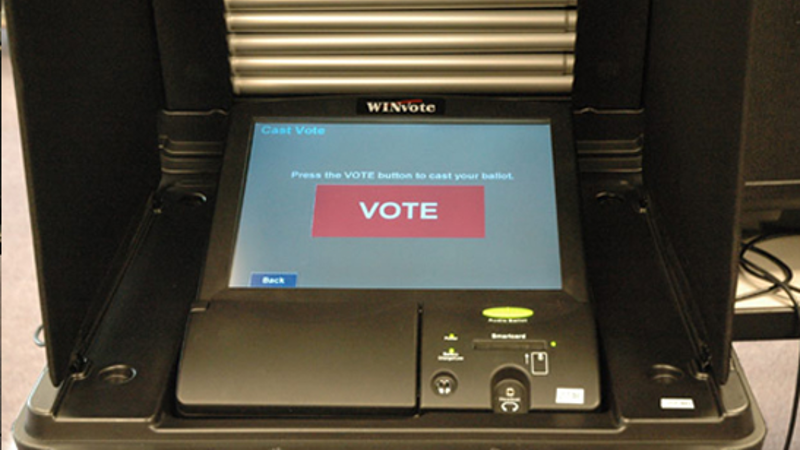
Electronic voting machines used for US elections between 2002 and 2014 would have been extremely easy to hack, according to reports.
The AVS WinVote machines were used during three presidential campaigns in the state of Virginia and would receive an "F-minus" for security, with many using "abcde" or "admin" as passwords.
Jeremy Epstein, of non-profit organization SRI International, who served on the Virginia state legislative commission and has been investigating the machines for some time, is relieved that they have now been decertified.
"The vulnerabilities were so severe, and so trivial to exploit, that anyone with even a modicum of training could have succeeded", he explained. "They didn’t need to be in the polling place -- within a few hundred feet (e.g., in the parking lot) is easy, and within a half mile with a rudimentary antenna built using a Pringles can. Further, there are no logs or other records that would indicate if such a thing ever happened, so if an election was hacked any time in the past, we will never know".
In an interview with the Guardian, Epstein also explained that his conversations with Brit Williams, the original certifier of the voting machines, had been equally concerning.
"I said, 'How did you do a penetration test?' and he said, 'I don’t know how to do something like that'".
The Virginia Technology Agency today published a report condemning the WinVote machines, which have also been used for elections in Mississippi and Pennsylvania. It found that the machines ran a version of the Windows operating system that had not been updated since 2004, leaving them susceptible to relatively simple malware and hacking attempts.
The news comes at a time when the UK is preparing for its own vote, with the general election scheduled for next month. Although electronic voting, or e-voting will not be available this year, it is reported to be in place for the 2020 election.
Published under license from ITProPortal.com, a Net Communities Ltd Publication. All rights reserved.
-

Online leaks like Game of Thrones have become the norm
Publié: avril 14, 2015, 9:16am CEST par Barclay Ballard

Last month, it was Kanye West and now it’s HBO’s award-winning medieval drama Game of Thrones that must suffer the dreaded online leak. However, these are just two examples from countless others -- it seems as though in the digital world online leaks have become the norm.
The Internet, which has vastly improved global communication by enabling ideas to be shared and projects to be collaborated on, has also led to information being leaked with increasing regularity.
With so many individuals working on a show like Game of Thrones over many months, the opportunities for information to be shared without permission increases. One of the producers of the show, Greg Spence, told the Denver Post last week that leaks were a possibility with a show as vast and complex as Game of Thrones.
"The cast is looping all over the world, sending files back and forth", he said. "Artists are working in special-effects houses all over the world. The files are watermarked, and editors have to confirm in writing that they’ve deleted them".
Moreover, this is not the first time that the show has been a victim of online leaks. In January, the trailer for season five was also posted online before its official release.
Aside from being extremely frustrating for content creators and distributors, online leaks also take creative control away from artists, meaning that consumers invariably receive a lower quality product. In the case of the Game of Thrones leak, the five episodes have been made available in 480p rather than the usual HD offering. However, for the music industry the issue of poor quality leaks is often even more severe.
The creation of a song or album occurs over time, evolving with each take or studio session. This means that a number of rough, or demo versions, of songs exist that the artist in question believes should not be released, but online leaks expose these unfinished versions to the world without the artist’s approval.
One recent high-profile example includes the leak of a Kanye West song dedicated to his wife Kim Kardashian, and there are now multiple websites devoted to informing visitors whether or not a track or album has leaked ahead of release.
While the huge amount of online communication means that leaks are virtually impossible to stop, deterrents have been put in place. As Spence noted, visual and audio content will often contain some kind of watermark that can then be used to identify who was behind the leak. If identified, the individual responsible for the leak would likely lose their job and be unable to work in the industry again.
Unfortunately, there are ways to escape identification even if a watermark has been used, meaning that ultimately the only way to prevent future leaks is to cut down on the amount of content shared. HBO is unlikely to be quite so generous with its review copies of Game of Thrones in the future, given that nearly half of the upcoming series has found its way online.
The security breach that often results in these kind of leaks is not a technical one as much as it is a matter of personnel. The demand to see a show like Game of Thrones is so high that someone leaking episodes online ahead of schedule can gain a massive amount of online credibility amongst the piracy community.
Game of Thrones has been the most pirated show on the Internet for three years running and with the show’s popularity continuing to grow, leaks such as those we’ve seen recently will remain difficult to prevent.
Published under license from ITProPortal.com, a Net Communities Ltd Publication. All rights reserved.
-

9 reasons to get excited about the cloud
Publié: avril 9, 2015, 6:42pm CEST par Barclay Ballard

You could be forgiven for thinking that there’s nothing more to say on the subject of cloud computing.
After all, the technology has been available and widely adopted for some years now, with businesses of varying sizes moving their data and infrastructure to the cloud. In fact, the recently published State of the Cloud report by RightScale found that 93 percent of organizations are using the cloud in some capacity. However, whether it’s a move towards a hybrid cloud approach or analyzing why some businesses have not yet made the transition, there are still plenty of reasons to get excited about the cloud.
Reduced costs
Moving your business to the cloud could result in some serious savings. Generally speaking, cloud computing works on a pay-as-you-go or operational expense (OpEX) model, meaning that large up-front costs are avoided. It also makes it a particularly attractive investment for smaller firms, as there are no long term financial commitments.
Flexibility
Business needs can change rapidly, so organizations need tools and software that can react quickly and smoothly to this change. For example, a growing business may need more bandwidth in order to serve its customers, or increased storage demands. While traditional on-premise systems may require a time-consuming and costly overhaul, third-party cloud providers can deliver a solution instantly.
Stability
The traditional approach to on-premise IT is to wait until something breaks before fixing it, resulting in business downtime and lost revenue. Cloud computing lets businesses undergo real-time crisis management and software upgrades. Cloud suppliers carry out server and software maintenance themselves and are able to fix issues more readily than businesses without a cloud infrastructure.
Scalability
While business growth is desired it can also be disruptive. Cloud computing looks to minimize this disruption in a number of ways. Third-party suppliers can usually offer favorable rates when compared to an on-premise approach due to "economies of scale". This means that when companies need to grow, they can expand at their own rate without having to purchase expensive additional software licenses or programs.
Collaboration
Businesses and their employees are increasingly mobile and geographically diverse. Cloud computing facilitates this way of working by ensuring that no matter where you are in the world, you have access to the files and applications that you need.
Competition
Cloud computing has made the technology industry a more competitive place by granting SMEs access to the latest applications and services at a lower cost.
Smaller firms can now grow more rapidly and with significantly less disruption than when using traditional on-premise software, resulting in a more competitive, but ultimately healthier, enterprise market.
Mobility
Employees, businesses and clients are no longer confined to one device, but expect to be able to transition seamlessly between PC, tablet and mobile. Cloud computing facilitates this modern demand by allowing applications and files to be accessed in real time across several devices.
Security
While security is sometimes viewed as the cloud’s weak link, a number of third-party providers are trying to change this perception. Many now offer encryption free-of-charge, meaning that they have no idea what files they are hosting and your privacy remains secure. Using cloud services also ensures that if local devices are lost or damaged, files and apps can still be easily accessed.
Environmental benefits
Instead of utilizing an unnecessarily large on-premise server, cloud computing ensures that businesses only use the server space that they need, resulting in increased efficiency and lower carbon emissions.
Photo Credit: aslysun / Shutterstock
Published under license from ITProPortal.com, a Net Communities Ltd Publication. All rights reserved.
-

Apple has brand loyalty that most companies can only dream of
Publié: avril 9, 2015, 4:49pm CEST par Barclay Ballard

The iPhone 6 release in September of last year marked yet another successful product launch for Apple. Both the regular and "Plus" models combined exceeded 4 million pre-orders within 24 hours and sales of more than 10 million units in the first three days following release. Both were Apple records.
Considering that the regular iPhone 6 retailed for $649 at launch and the Plus model for $749, it would seem fair to assume that such premium-level prices would be reflected in premium specifications. After all, the iPhone 6 comes in at slightly more expensive than Samsung’s Galaxy S5 which was released a few months previous.
However, a look at the iPhone 6’s specs reveals that there are certainly "better", on the surface at least, smartphones available. If we compare it to the S5, the iPhone 6 has lower resolution front and rear-facing cameras, a lower capacity battery, a lower resolution display and half as much RAM.
Of course, a smartphone is more than just the sum of its specs and the iPhone 6 does have other ways of enticing consumers. The Apple design aesthetic is particularly appealing to some individuals and the company’s decision to use metal in favor of plastic could also be crucial. Samsung’s decision to incorporate a metal case for the S6 is certainly telling.
However, the most important factor in the iPhone 6’s success is that Apple has cultivated a sense of brand loyalty that most companies can only dream of. Many industry analysts have declared that brand loyalty is dead, killed off by digital technologies which makes it so easy to research and ultimately switch to a competitor. And yet, despite offering a smartphone that cannot claim to be the best pound-for pound device available, an iPhone release has crowds queuing for days.
According to a Morgan Stanley Research study carried out last year, Apple has a 90 percent brand retention rate, significantly higher than its competitors Samsung, LG and HTC. The real question is, how has Apple engineered such a frenzy for its products?
One of the key factors for Apple’s success is that it is a company of firsts, without claiming to be wholly original. Often, Apple isn’t the first company to release a product, but it can certainly lay claim to being the first company to release a successful version of that product. Apple did not invent the MP3 player, the smartphone or the tablet, but the iPod, iPhone and iPad all kickstarted their respective markets in ways others had not foreseen. The Apple Watch, due to be released later this month, could do likewise.
Apple’s senior vice president of design Jonathan Ive hinted that the firm is more concerned with improvement than invention back in 2012.
"Our goals are very simple -- to design and make better products", he said. "If we can’t make something that is better, we won’t do it".
Ive’s statement also touches upon another reason for Apple’s success -- the company’s approach to marketing. All of the soundbites, advertisements and company events emanating from the business indicate that its products are the best, even when the hardware doesn’t back this up. Apple’s aforementioned approach to design: sleek, stylish and employing premium materials also reinforces this ideal.
Of course, no company can rely on brand loyalty alone, and the iPhone and the rest of Apple’s portfolio are not bad products by any stretch of the imagination. Brand loyalty can only work in combination with a good product, and that’s the balancing act that Apple seems to get right time and time again.
Image Credit: Michele Paccione / Shutterstock
Published under license from ITProPortal.com, a Net Communities Ltd Publication. All rights reserved.
-

Google needs to streamline its TV product line
Publié: avril 8, 2015, 9:57pm CEST par Barclay Ballard

Initially, Google’s new Chromebit add-on appears hugely impressive. The HDMI dongle simply plugs into the back of your TV and provides you with a fully-fledged Chrome OS computer for less than $100.
However, when you line up Chromebit next to the search engine giant’s other products, it looks like another piece in an increasingly confused jigsaw puzzle. Google’s product line-up includes Android TV, Chromecast, the Nexus Player and now Chromebit.
Of course, all of the aforementioned products possess their own unique selling points, but customers may still be left wondering if they are distinct enough and which one is right for them.
Android TV, which replaced Google TV, can be built into television sets or bespoke digital media players and allows users to access the Google Play store to download apps and access streaming services such as Netflix and Amazon Prime Instant. Chromecast is a HDMI dongle that supports the streaming of audio and visual content from mobile and web apps to a TV, while Chromebit appears similar but offers more functionality. The Nexus Player, meanwhile, will be a standalone set top box offering Android TV.
Confusing matters further, the Nexus Player, Chromecast and Android TV all support Google Cast technology, emphasizing the overlap between the products. Also, while the Nexus Player is primarily based on Android TV, it carries no Android branding, giving consumers little indication that they provide essentially the same service.
Google’s attempt to dominate the living room and the TV, in particular, makes perfect sense. After all, Apple TV and a host of set-top boxes have also made a grab for this potentially lucrative space, but a single must-have product would surely be more effective than several gadgets targeting a similar audience.
Part of the problem is that Google’s assault on the home TV space is fragmented across its two different operating systems and brands. Both Android TV and the Nexus Player are Android products, while Chromecast and Chromebit are, unsurprisingly, Chrome devices.
Back in 2011 when Google launched its Chrome OS for the first time, the company had good reason for offering a platform distinct from Android. Chrome was targeted at larger screen devices, such as Google’s Chromebook range, while Android targeted lower-power mobile devices. Over time, however, this distinction has become less clear cut.
Late last year, Google announced that it was possible to run Android apps natively in Chrome, without any modification required on the part of developers. Another factor that now makes Google’s decision to run two operating systems less wise, is that it contradicts current market trends.
With consumers demanding flexibility between the vast numbers of connected devices at their disposal, cross-platform operating systems are gaining momentum. Windows 10 will look to unify the Windows PC, Windows Phone, Windows Embedded and Xbox One product families and it remains to be seen if Google will ultimately merge Android and Chrome.
Google may well point to the individual successes of each platform as a reason for keeping them separate, for the time being at least, but its TV offering could still benefit from some streamlining.
In the past Google has shown a willingness to abandon products when they do not work out, including the Nexus Q and Google TV, so perhaps the tech giant is simply offering consumers several TV options in the hope that one of them achieves the desired level of success, regardless of whether this comes from Chrome or Android. The problem with that approach is that it doesn’t inspire consumer confidence and developers may also need convincing to work on a platform that may not be around for long.
Ultimately, if Google does want all of Android TV, the Nexus Player, Chromecast and Chromebit to be a success, it needs to more effectively market each product, emphasizing the differences to the everyday consumer. Chromebit certainly offers something different to the rest of Google’s TV-interfacing products, so it would be a shame for it to be forgotten amongst the firm’s growing hardware catalog.
Published under license from ITProPortal.com, a Net Communities Ltd Publication. All rights reserved.
-

Samsung Galaxy S6 edge buyers complain of screen defects
Publié: avril 3, 2015, 5:57pm CEST par Barclay Ballard

Samsung Galaxy S6 edge customers are complaining that their handsets are being received with scratched displays and dead pixels.
Although the flagship device is not supposed to launch officially until 10 April, T-Mobile has begun shipping the smartphones in advance.
According to users of an XDA forum, a number of T-Mobile customers have encountered quality issues regarding Samsung’s new device, which boasts a curved edge on both sides for added functionality.
SamMobile reports that one individual had to return their Galaxy S6 edge twice, after both handsets were delivered with similar faults. Currently, it is difficult to determine what is causing the issues and in fact, whether the faults are limited to T-Mobile or occur across all networks.
In any case, the news will come as a major disappointment to Samsung, which needs both versions of the S6 to be successful if it is to recover from a disappointing 2014. The South Korean firm’s profits fell throughout last year on the back of disappointing sales of its Galaxy S5 handset. Samsung also had to relinquish its position as leader of the worldwide smartphone market to Apple.
The Galaxy S6 and S6 edge were both formally unveiled at last month’s Mobile World Congress event in Barcelona. Although they boast similar specs, the edge provides messaging, calls and notifications along its curved display.
Samsung has already received criticism that the edge’s curved screen is largely a gimmick, and an expensive one at that. Reports that handsets are being shipped with defects is only going to increase consumer skepticism, so Samsung will be hoping that the issue is not widespread by the time the S6 formally launches on 10 April.
Published under license from ITProPortal.com, a Net Communities Ltd Publication. All rights reserved.
-

The technology that could have prevented the Germanwings Flight 4U 9525 tragedy
Publié: avril 3, 2015, 11:02am CEST par Barclay Ballard

In the wake of Germanwings Flight 4U 9525’s tragic crash, there has been much talk about how this will affect the aviation industry going forwards. Will all airlines adopt the "rule of two" cockpit procedure? Should there be more intense scrutiny of pilots’ mental health?
The debate over what can be done to limit a repeat of the catastrophe will rage on and on, but away from the human causes and aftermath, there is an existing technological solution that could potentially have saved the lives of all 150 on board.
Back in 2006, a patent was granted for the Boeing Honeywell 'Uninterruptible' Autopilot System, a remote method for gaining full control of an aircraft from the ground. The feature removes the pilot from the equation and would prove valuable in the event of a terrorist attack or any other deliberate attempt to crash the plane.
"The 'uninterruptible' autopilot would be activated -- either by pilots, by onboard sensors, or even remotely via radio or satellite links by government agencies like the Central Intelligence Agency, if terrorists attempt to gain control of a flight deck", according to a report made at the time of the patent approval.
"There is a need in the industry for a technique that conclusively prevents unauthorized persons for gaining access to the controls of the vehicle and therefore threatening the safety of the passengers onboard the vehicle, and/or other people in the path of travel of the vehicle, thereby decreasing the amount of destruction individuals onboard the vehicle would be capable of causing".
The system even has its own power supply, completely independent of the rest of the craft, meaning that the autopilot mode will remain engaged until the plane has landed.
In fact, although the patent was only granted nine years ago, it has been possible to remotely control vehicles for much longer. Inventor Nikolai Tesla demonstrated his own remote controlled toy boat to a stunned New York crowd back in 1898, and more recently airborne drones have been used by both the military and technology enthusiasts. There is even a precedent for remotely controlling large commercial aircraft.
In 1984, a NASA controlled impact test used a remotely controlled Boeing 720 aircraft to ascertain the effectiveness of a new fire retardant. The test saw the craft take off, ascend to an altitude of 2300 feet and then deliberately crash land, all without any onboard input. Considering that this was possible more than 30 years ago, it would be understandable if the calls for remote controlled commercial aircraft became louder.
However, a remote controlled system is not an all-questions-answered solution, in fact it may pose more security questions. The main reason why the Boeing patent has not been formally implemented is due to concerns that the system could leave aircraft vulnerable to hacking.
Hacking already poses a genuine threat to aviation security and opening up more ground to air communication channels ultimately means more opportunities for attackers. During 2013’s Hack in a Box conference, ex-commercial pilot Hugo Tesa claimed that he could hack into a plane’s ACARS system, simply by using a smartphone app and a desktop computer.
If aircraft can be controlled from the ground, flight companies must entertain the possibility of hackers, perhaps terrorists, hijacking aircraft remotely. While this security pitfall is significant, there are possibly numerous others that haven’t yet been thought of. Often the introduction of new features can result in unexpected issues -- after all, it was the post-9/11 cockpit door system that ultimately locked out the pilot during Flight 4U 9525’s final journey.
Although security concerns may have grounded any remote control systems for the time being, this is unlikely to remain the case for long. The growth of the Internet of Things will surely see more and more individuals become comfortable with the idea of increased wireless communication. Connected cars will also be at threat from hacking, but if these gain mainstream adoption, surely aircraft won’t be far behind.
The crash of Germanwings Flight 4U 9525 was a devastating tragedy, and anything that technology can do to help prevent a repeat of those events should be considered. However, now is not the time for knee-jerk reactions and new technologies must always be carefully assessed before being implemented.
Published under license from ITProPortal.com, a Net Communities Ltd Publication. All rights reserved.
-

Forget wearables, cyborg tech is the future
Publié: mars 27, 2015, 8:26am CET par Barclay Ballard
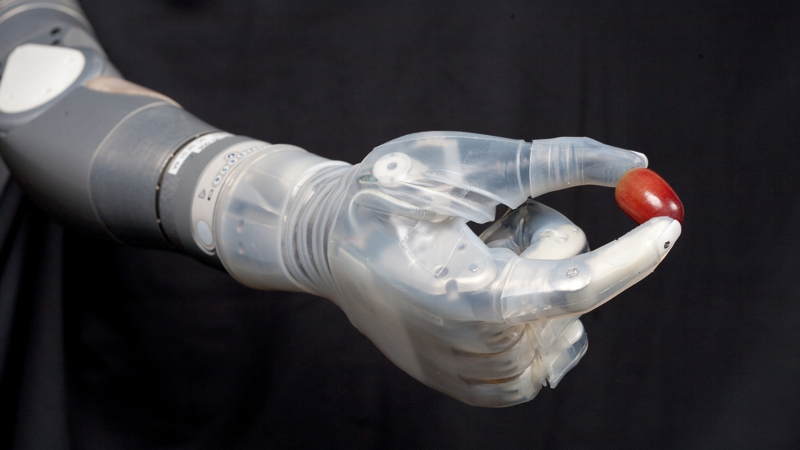
The primary goal of technology should be to improve our lives in some way. So far that has seen us embrace computers, the Internet, smartphones and most recently wearable gadgets. However, many are predicting that the future will not see us hold or wear technology, but have it directly implanted into our bodies.
Already, the transhumanism movement is seeing technology implants gain greater acceptance, but many still feel uneasy about the ethics involved when we attempt to improve our bodies artificially. In response to the advances made in body modification technology, we’ve looked at five high-profile examples below.
Replacement limbs
For many years, individuals have used technology to help solve medical problems. Artificial pacemakers have been implanted into humans since the 1950s and prosthetic limbs, in their most basic form, have been used for centuries.
Now limb replacements are becoming increasingly advanced, with the DEKA arm being one of the most notable. Developed by the Defense Advanced Research Projects Agency (DARPA) and the U.S. Army Research Office, DEKA can carry out a series of complex movements controlled by electrical signals sent from electrodes connected to the user’s muscles. The electrodes transmit signals to the arm, which can carry out 10 different types of movements.
The DEKA arm has given those that are missing limbs the ability to perform delicate tasks, such as grasping a bottle, which wouldn’t be possible with traditional prosthetics.
Neil Harbisson’s antenna
Self-confessed cyborg Neil Harbisson is one of the most famous exponents of body modifications and has used technology to overcome the extreme form of color blindness that has afflicted him since birth.
Harbisson is unable to see color at all and so decided to implant a permanently attached antenna into his skull in 2004. The "Eyeborg", as it is known, allows him to experience colors by translating them into sounds. An Internet connection also allows Harbisson to receive phone calls directly into his skull and his activism has seen the British government recognize his as the world’s first cyborg.
Deep brain stimulation
Deep brain stimulation involves the insertion of electrodes into three target sites within the brain and has proven hugely effective at tackling Parkinson’s disease.
The electrodes are connected to a neurostimulator placed under the skin in the chest or stomach area, which delivers high-frequency stimulation to specific areas of the brain. This changes some of the brain’s electrical signals associated with Parkinson’s and is often used in partnership with medication.
The procedure is working so well that it could remain the primary surgical treatment for the condition for the next two to three decades.
Security chips
A number of companies around the world are now offering employees the opportunity of having computer chips implanted into their hands to help them in their place of work.
The radio-frequency identification (RFID) chip is inserted under the skin, following only a brief moment of pain, and can be put to various uses. Most often, the chip is used to unlock doors, providing a more secure solution than employee ID cards.
Others have placed an electronic business card on the chip, which can be accessed via a smartphone, or use the implant to access their car or computer.
A Swedish company called Dangerous Things even allows you to buy a DIY chip implanting kit that means you can use the technology in whatever way you want.
The Circadia 1.0
Sticking with the DIY theme, biohacker Tim Cannon has developed a Fitbit style device that is implanted under the skin.

The Circadia 1.0 is not the most elegant implant, clearly protruding from underneath Cannon’s skin, but it does offer some personal utility. The device can be connected to appliances in his home and is programmable via tablet. In fact, by monitoring various health metrics, the Circadia 1.0 can automatically provide Cannon with a helping hand.
"So if, for example, I’ve had a stressful day, the Circadia will communicate that to my house and will prepare a nice relaxing atmosphere for when I get home: Dim the lights, let in a hot bath", he explained.
While consumers may not quite be ready for Cannon’s rough and ready approach to technological implants (he inserted the Circadia 1.0 without any anesthetic), with some refinement similar body modification could become widespread in the not too distant future.
Image Credit: Motherboard
Published under license from ITProPortal.com, a Net Communities Ltd Publication. All rights reserved.
-

Should you root your Android device? The case for and against
Publié: mars 19, 2015, 10:15am CET par Barclay Ballard
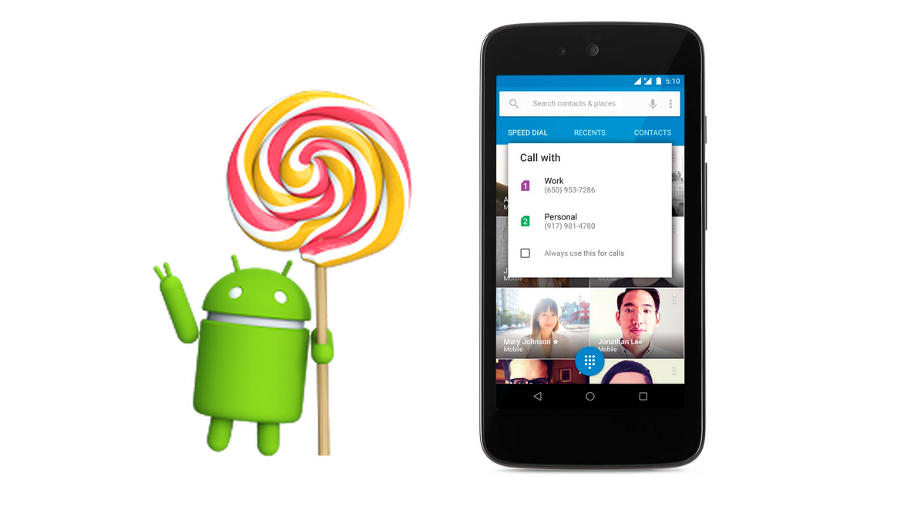
Most consumers are pretty happy with the Android experience that they receive, but for some the opportunity to customize and tweak their smartphone is too good to pass up. However, to experience a truly customizable device, Android users will need to root their phone -- which does come with some potential risks.
In order to decide whether or not it’s really worth rooting your phone, you’ll need to know the advantages and possible drawbacks.
The benefits of rooting
One of the main reasons to root your Android phone is that it gives you access to apps that are not available through the Google Play Store. Due to the higher level of permission granted to a rooted device, these apps can often enable you to perform useful tweaks that would otherwise be impossible.
You may want to configure CPU or GPU frequencies to underclock or overclock your device, utilize the full potential of ad blocking software, or download Titanium Backup to safeguard your information, and for all of these features you’ll need a rooted device.
I’m sure many Android users have grown frustrated with the sheer number of pre-installed apps included on new smartphones, the majority of which are unwanted and remain unused. However, by rooting your device, you can easily remove this so-called "bloatware". Pre-installed software isn’t just annoying either, it can take up valuable storage space and drain your phone’s battery, so usually you’ll be better off without it.
Perhaps the biggest customization that you can apply to your phone is flashing a custom ROM. While technically, you do not need root access in order to achieve this, you will need to unlock your bootloader -- something that is required in order to root.
A custom ROM is essentially a custom version of the Android operating system. They often provide additional features and a modified layout compared to stock Android. You may want to check out custom ROMs for a number of reasons, such as trying the next Android release before it is officially pushed to your phone, or to use a ROM built by the Android community such as CyanogenMod.
Whatever your reasons for deciding to root your device, it is really the only way to make your smartphone truly yours.
The downside
A quick Google search of rooting your smartphone will reveal that the process is not always completely straightforward. The number of posts referring to people "bricking" their phones during the root process is, of course, a little off-putting.
Aside from completely ruining your smartphone, rooting can also leave you open to more security risks. With root access enabled, you run the possibility of exposing system files to malicious applications. So if you are going to root your phone, it’s probably best to have some form of mobile anti-virus installed.
In the vast majority of cases, rooting will also void your device’s warranty, so the manufacturers will be unwilling to repair it should something go wrong. Some smartphone vendors, such as Samsung, can even track if a user modifies the phone’s firmware, so even if you unroot it, the manufacturer will still know about your tampering.
Potential rooters should also be aware that the process varies not only by manufacturer, but also by device. There’s no one-size-fits-all approach to rooting, so it’s important to make sure that the instructions you’re following are precisely the right ones for your particular smartphone.
Of course, the decision of whether or not to root your Android device will largely depend on the user. Crucially, unless you’ve got a clear reason to root, such as an app or ROM you want to install, there’s probably no reason to take the risk.
On the other hand, if you have a decent level of computer know-how, then rooting shouldn’t be too much of a challenge and will let you customize your smartphone to your heart’s content.
Published under license from ITProPortal.com, a Net Communities Ltd Publication. All rights reserved.
-

Cloud Expo 2015: How the '3rd Platform' is set to disrupt industry
Publié: mars 13, 2015, 2:42pm CET par Barclay Ballard

The rise of the "3rd platform" is set to cause huge disruption across a wide variety of industry sectors, according to the opening talk at the second day of this year’s Cloud Expo event in London.
Bernard Golden vice president of strategy at ActiveState Software, claimed that the growth of the 3rd platform is another example that the "pace of change is accelerating remorselessly".
The 3rd platform is driven by the cloud and promises anytime and anywhere access to applications. It is also viewed as a confluence of social activity, mobility, cloud computing and big data. According to IDC, by 2018 a third of market share leaders in most industries will be "significantly disrupted" by competitors using the 3rd platform.
Golden cited Uber as an example of a relatively new business that has completely unsettled the traditional practices of its industry. For example, in San Francisco (one of Uber’s hotbeds of popularity) taxi trips have fallen by 65 percent over the last 15 months, and yet Uber’s revenue has grown to three times that of the taxi industry.
During his talk, Golden indicated that once companies were aware of the 3rd platform and the impact that it will certainly have, they then need to know how to embrace it themselves. Primarily, he highlighted three steps that businesses must follow in order to prepare themselves for the oncoming wave of technological change.
Firstly, they must improve their agility, bringing apps to market quicker, experimenting more and enabling IoT support. They must also embrace technological innovation, including polyglot programming. Finally, infrastructure choice is critical, with a lightweight, hybrid cloud offering the most flexible solution.
Golden emphasized that businesses cannot afford to stand still when considering the growth of the 3rd platform. He pointed to BlackBerry as an organization that struggled to keep pace with new technologies -- 10 years ago they dominated the smartphone market, but now are simply an "afterthought".
Published under license from ITProPortal.com, a Net Communities Ltd Publication. All rights reserved.
-

Will the Galaxy S6 help Samsung challenge Apple once more?
Publié: mars 3, 2015, 7:16pm CET par Barclay Ballard

On the surface, Samsung’s position as the world’s second largest smartphone vendor seems formidable. The firm’s mobile division posted profits of £1.1 billion for the fourth quarter of last year and its most recently released flagship phone, the S5, has sold more than 12 million units worldwide since its launch.
However, all is not well with the South Korean technology giant.
Samsung has seen its global position in the smartphone market eroded at the top-end by Apple and by lower-cost Chinese vendors at the bottom. Late last year, Apple became the global leader of the smartphone market for the first time in three years, pushing Samsung down to number two.
Apple’s ascension to top spot marks a swift fall for Samsung, which was outselling the US firm two-to-one in the fourth quarter of 2013. The fact that larger screen iPhones are now available is thought to have robbed Samsung of one of its key selling points. Meanwhile, budget Android smartphones from the likes of Lenovo and Xiaomi have seen Samsung struggle for sales in emerging markets like China, Indonesia and Malaysia.
The unveiling of Samsung’s next flagship phones at this year’s Mobile World Congress, therefore, holds increased significance. Can the Galaxy S6 and S6 Edge arrest the company’s steady decline?
Samsung is hoping that the innovative curved screen promised by the latter is enough of a unique selling point to draw in customers. The S6 Edge features a display that curves around the edges on both sides to offer users a number of bespoke services. The first of which is People Edge, which provides calls and messaging options for the owner’s top five contacts, while Information Stream displays chosen notifications and weather information.
In terms of specs, both the S6 and S6 Edge are largely identical, and both are noticeably pushing a more premium feel than their predecessors. The plastic exterior is now gone, replaced by glass and a metal frame -- but perhaps the biggest change is how Samsung is marketing its new handsets.
During its MWC address, Samsung referred to learning from its past "missteps" and listening to consumer feedback -- a clear reference to the failings of its past smartphones. The S4 was heavily criticized for trying to cram too much innovation into one device, while the S5 has also been poorly received, selling 40 percent fewer units than predicted. Samsung’s decision to codename its new devices "project zero" clearly signals an attempted break from the failures of the past.
Samsung’s deputy president of European telecom operations Jean-Daniel Ayme certainly believes that the two S6 models offer something different to consumers. "By offering a wide range of devices to all people in the market, we accept the challenge of competition," he told the BBC. "So it is definitely a great opportunity for us to demonstrate that meaningful innovation will mean something to the people".
However, the worry for Samsung is that that the S6 Edge’s curved screen will be less of a USP and more of an unnecessary gimmick.
Unfortunately for Samsung, it does not have the brand loyalty of Apple, so when other manufacturers are offering similar specs at a lower cost, consumers are more inclined to make the switch. However, the decision to use more premium materials is likely to be a wise one, as this will mark an easy point of difference when compared to budget handsets.
The S6 will ultimately be judged on its sales figures and Samsung’s profit margins. The firm’s decision to switch to its own in-house processor, the Exynos 5 Series chip, could prove crucial. If successful, Samsung will make more money from each sale, bolstering its figures, but if it’s a failure, the Galaxy S6 could be the final nail in the coffin for Samsung.
Published under license from ITProPortal.com, a Net Communities Ltd Publication. All rights reserved.
-

Apple could track your iPhone, iPad when turned off
Publié: février 25, 2015, 6:24pm CET par Barclay Ballard
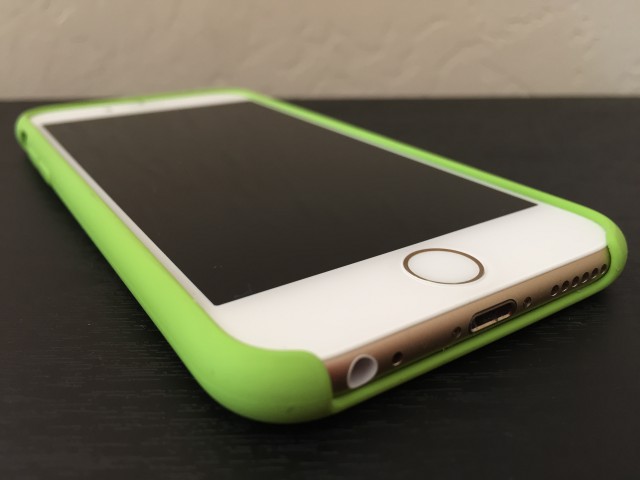
Apple has been granted a patent that could potentially allow it to track an individual’s iPhone, even when it appears to have been turned off.
The feature enables phones to enter a sleep-like state that suggests it has been shut down, but instead the phone’s movements can still be traced.
Although many privacy advocates are likely to be up in arms about the potential development, Apple likely plans to use the feature to make its devices more secure.
Currently, the Cupertino-based firm provides the Find My iPhone service, which enables users to track their handset when it has been lost or stolen. As it stands, however, phones cannot be traced when turned off.
The recently granted patent indicates that in the future, users may be asked to enter a passcode before they turn their phone off, and if the incorrect code is entered the device will enter a traceable sleep mode.
The feature may prove a useful addition in the fight against mobile phone theft. Already, tracking features and other security protocols have reduced smartphone theft by 50 percent, according to the Independent.
The patent also outlines plans for iPhone owners to operate their device’s camera remotely while in sleep mode, enabling them to potentially take a photograph of the individual who has stolen their phone.
The document indicates that the iPhone will "periodically exit an unpowered state and [transmit] location data" automatically. It is likely that Apple will need to be wholly transparent with users as to how this feature would be implemented, in order to avoid accusations of surveillance.
In any case, the sheer number of patents issued to technology giants like Apple means that the iPhone tracking feature may never see the light of day. Earlier this month, it was reported that Google had been granted a patent for a wearable deodorizer, which would be capable of telling users how nearby their friends were so they could avoid them if necessary.
Published under license from ITProPortal.com, a Net Communities Ltd Publication. All rights reserved.
Photo Credit: Joe Wilcox
-

Lenovo's Superfish fiasco has badly damaged consumer trust
Publié: février 23, 2015, 11:31am CET par Barclay Ballard
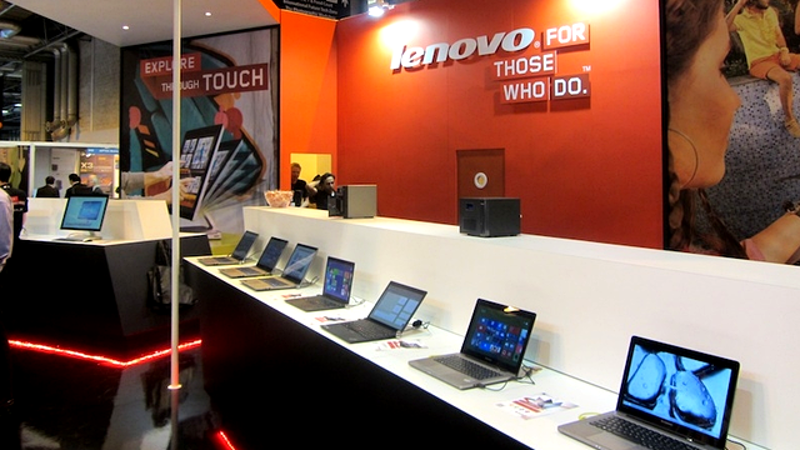
Stories about potentially malicious software emerge practically every day, but it’s not often that a high-profile PC manufacturer admits to deliberately installing harmful files on consumer devices. However, that’s exactly what happened last week, when Lenovo was found to be pre-installing adware on its devices without the owner’s permission.
Superfish, as the adware has been dubbed, is reported to affect Lenovo units purchased between the latter half of 2014 and January this year. While its ability to insert third-party advertisements into Internet Explorer and Google Chrome searches is annoying, the way that it installs its own security certificate is invasive and possibly harmful.
By issuing its own security certificates, Superfish can intercept any information sent and received by the user’s device -- known as a "man-in-the-middle" attack, something that puts the user at increased risk.
However, while the potential damage to the consumer is significant, the Superfish scandal has already greatly harmed Lenovo’s reputation.
The Chinese company initially defended the software, describing it as helping "users find and discover products visually", but their swift removal of Superfish suggests that Lenovo is well aware it has damaged consumer trust.
"We have thoroughly investigated this technology and do not find any evidence to substantiate security concerns", Lenovo said in a statement. "But we know that users reacted to this issue with concern, and so we have taken direct action to stop shipping any products with this software. We will continue to review what we do and how we do it in order to ensure we put our user needs, experience and priorities first".
Although Lenovo has now issued tutorials on how to remove the software, it is believed that this will not remove the Superfish root certificate authority.
The reaction of many consumers has been one of anger and disbelief. For Lenovo to install this kind of software, essentially malware, onto its laptops in order to make more money from advertising is already galling, the fact that it also introduces a vulnerability into the user’s system is shocking.
Many Lenovo users have now criticized the brand over the Superfish install.
"It’s not like they stuck it on the flier saying… we install adware on our computers so we can profit from our customers by using hidden software", said one forum user. "However, I now know this. I now will not buy any Lenovo laptop again".
Consumers rely on manufacturers to put their security first. In an age where cybercrime and malicious threats are becoming increasingly sophisticated it is baffling that Lenovo would voluntarily compromise its devices in this way.
Moreover, the company responsible for the Superfish adware has been receiving numerous complaints regarding its software since its inception in 2006. A quick Google search reveals that Superfish has been criticized for the way it monitors user activity and hijacks legitimate connections, amongst other issues, for years.
As one of the industry’s leading PC manufacturers, Lenovo surely cannot claim ignorance over these concerns.
The question now is how the Chinese company goes about restoring user trust, if indeed it can.
Removing the root certificate of Superfish is the only way to be sure that the user’s PC is secure, but this is a complicated process -- and one that many consumers are unlikely to undertake.
The Superfish issue will surely come as a lesson learned for Lenovo, but hopefully the fallout will be heeded by everyone in the hardware industry. Individual users may be able to fix the Superfish vulnerability on their personal devices, but the wider breakdown in consumer trust may be irreparable.
Published under license from ITProPortal.com, a Net Communities Ltd Publication. All rights reserved.
-

Top 10 Chinese smartphones
Publié: février 20, 2015, 8:58am CET par Barclay Ballard
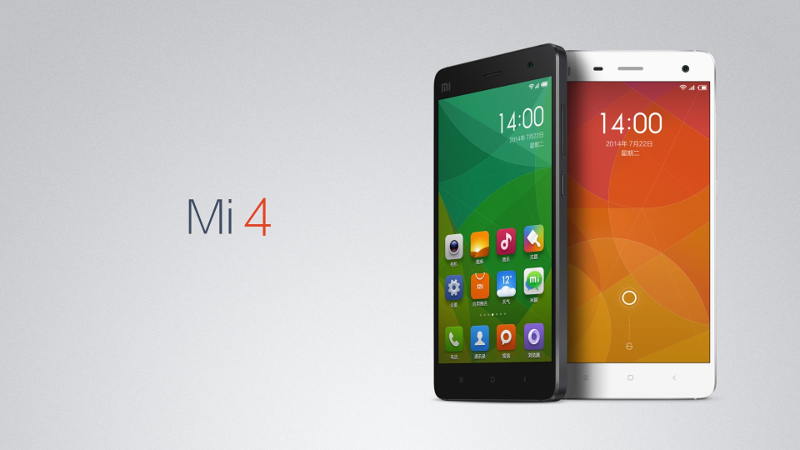
China’s smartphone market is the largest in the world, but some of the country’s major players including Xiaomi and Lenovo have found that, with the domestic market reaching saturation point, they need to look internationally for further growth.
To celebrate the Chinese New Year we’ve taken a look at ten of the best handsets to emerge from the Asian country.
Xiaomi Mi4
Various sources have placed Xiaomi as the world’s third largest smartphone vendor, but the brand is still relatively unknown outside of its native China. However, if it continues to make sterling handsets like the Mi4, that won’t remain the case for long.
The Mi4 launched in August last year and quickly continued Xiaomi’s emphasis on high-end specs without the high-end price tag. The handset boasts a 5-inch 1080 display, a Qualcomm Snapdragon 801 processor and a whopping 3GB of RAM.
Priced at 1999 yuan domestically and costing international buyers around $370, the Mi4 offers very decent value for money.
Lenovo Vibe Z2 Pro
Lenovo is perhaps more associated with its range of laptops, but the Chinese firm also knows how to deliver a killer smartphone.
The Vibe Z2 Pro fits the bill if larger handsets are your thing, with the device sporting a 6-inch display. Despite the size, Lenovo has managed to make the phone surprisingly portable, and the Z2 Pro is actually shorter in length than the iPhone 6 Plus and smaller in all three dimensions than the Nexus 6. It also comes with a 16-megapixel camera, 32GB of internal storage and looks very stylish -- which is always a bonus.
IUNI U3
IUNI may be one of the least well-known Chinese brands to Western consumers, but anyone who did take a punt on the U3 would have been pleasantly surprised.
The handset’s real selling point is its fantastic display, which measures 5.5-inches and provides Quad HD resolution. When you factor in that the IUNI U3 also comes with some impressive specs, a 13-megapixel camera and is available for just $370 it more than holds its own against some better known devices.
Oppo R5

The Oppo R5 held the record (albeit briefly) for the world’s thinnest smartphone when it launched late last year, and at just 4.85mm thick, it proves that good things come in small packages.
It includes an excellent AMOLED screen, a 13-megapixel camera and is available for around $447. While other handsets may boast more impressive specs, the R5’s sleek design is what really makes it stand out, so if the look of your handset is important, it is definitely worth checking out.
ZTE Nubia Z7
Many consumers both in China and abroad struggled to get their hands on the ZTE Nubia Z7, when it launched in July last year, such was the demand for the device.
The Z7 utilizes a Qualcomm Snapdragon 801 processor to power its 5.5-inch display and its 13-megapixel camera. The latter of which actually forms one of the handset’s best features, as it is capable of shooting 4K UHD video and 120 FPS slow-motion clips.
The smartphone is available in three variants, the Maxi, the Mini and the regular Z7 and prices range from $300 to $460.
Gionee Elife S5.1
The Gionee Elife S5.1 is targeted at individuals who may not need top-of-the range specs, but want a good quality, well-designed smartphone that doesn’t break the bank.
The handset boasts a 4.8-inch display, 1GB of RAM and LTE support. There’s also no sign of any plastic to be had here, with the Elife S5.1 housing everything within Gorilla Glass 3 front and rear panels and metal sides.
It also measures just over 5mm thick and weighs less than 100 grams, so if you want a compact, stylish, budget smartphone then look no further.
Huawei Honor 6
One of the first things to note about the Huawei Honor 6 is its premium feel, despite a price tag of around $385.
It has 3GB of RAM, a 5-inch laminated display and the option of expanding its 16GB internal storage with a microSD card of up to 32GB. Consumers may have to get use to Huawei’s custom Emotion UI, but will surely be delighted with the manufacturer’s claims that the phone’s 3100mAh battery will give more than full day’s charge, even under heavy use.
Meizu MX4
The Meizu MX4 is not one of the cheapest smartphones available from a Chinese manufacturer, but it still offers very good value for money.
It’s powered by an octa-core MediaTek processor and boasts 2GB of RAM and a substantial 3100mAH battery. The smartphone is also equipped with a 20.7-megapixel rear-facing lens, so it should be a serious consideration for any budding photographers out there.
Vivo Xshot
Another worthy camera-centric option comes in the form of Vivo’s Xshot handset. Aside from its Snapdragon 801 processor and 3GB of RAM, the Xshot has a 13-megapixel camera, which is equipped with a second-gen Sony sensor and is capable of 4K video and slow-motion capture.
It also includes special modes, such as a Smart Night Mode, and even sports a front-facing full-spectrum flash, so camera enthusiasts will have plenty of features to fiddle with, all for around $460.
OnePlus One
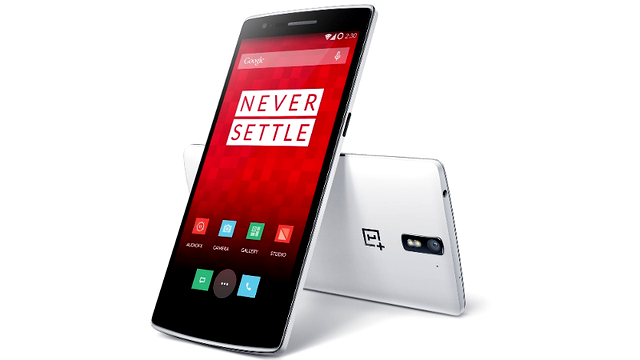
The OnePlus One made headlines last year for its unusual distribution strategy, with consumers only able to purchase it via an exclusive invitation process.
However, the hype surrounding the phone soon grew for other reasons, namely its high-end specs and low-end price. The 16GB version can be purchased for just $370 and offers a 5.5-inch display, 3GB of RAM, and the latest Snapdragon processor. What’s more, the OnePlus One will also allow consumers to root their handset without voiding their warranty, enabling them to run whatever custom ROMs they want -- a far cry from the walled garden of Apple’s iPhone.
Published under license from ITProPortal.com, a Net Communities Ltd Publication. All rights reserved.
-

How to breathe new life into an old PC [Beginner’s guide]
Publié: février 18, 2015, 6:11pm CET par Barclay Ballard

With today’s rapid pace of technological change and consumer-centric culture it’s easy to throw out your laptop or PC as soon as a shinier, flashier model comes along. The problem is: there’s always a faster, more up-to-date version waiting just around the corner.
However, you can save the environment, and your bank balance, from taking any extra strain by following these tips to get some extra life out of an older computer.
Tidy up
In everyday life, a full-blown tidy-up can help you do all manner of tasks much quicker, and your PC is no different.
You can start with something simple, like clearing your desktop of shortcuts that you don’t access often. It may not seem like a big deal, but this could help your computer start up much faster.
You can either manually remove the icons you no longer need, or if you’re running Windows XP, the operating system includes a pre-installed Desktop Cleanup Wizard. Simply right click on the desktop, go to sort by and select the Cleanup function.
Remember, this will only remove shortcuts leaving program files intact, so a more in-depth clean-up may also be required.
Remove unnecessary files
Over time, your PC can become cluttered with a large number of unnecessary files, which you no longer need, and may be slowing down your device.
You can use the Windows Disk Cleanup feature in order to purge your device of unwanted information, by removing temporary files and other unneeded items such as the contents of your Recycle Bin.
In Windows 8 and 8.1, Disk Cleanup can be accessed via the Control Panel or by typing Admin into the Search box. Then the user simply clicks on Disk Cleanup, and selects which drives they want to clean, along with the types of files they want deleted.
Users may also want to uninstall any programs that they no longer need. To do so, access the Control Panel and select "Uninstall a program", but be careful. Once they’re gone, they’re gone and you’ll have to reinstall them if you’ve been too hasty with the delete button.
Run anti-virus
Although viruses and other malware have the potential to cause serious damage, such as identity theft, in most cases, they’ll simply slow your computer down and after years of daily use, you may have been infected.
Make sure you regularly scan your device for malicious files and remove any that do crop up. Some anti-virus programs are also free to download, with Malwarebytes and Panda Free Antivirus both being highly-rated.
Organize your startup
Waiting for your PC to load up can be a tedious process, particularly as you wait for iTunes, Spotify and Skype to boot-up, even though you have no intention of immediately using them.
One quick and easy way to speed up your PC is to organize which programs automatically startup when you turn on your device. By typing "msconfig" into the search bar of the Start menu, users can then select the startup tab and choose which software packages start up automatically.
By making your startup more efficient, you can greatly increase the speed of your boot up and reinvigorate that PC that’s been hanging around for a few years now.
Update it
Sometimes, you can get that new PC feeling, without shelling out on an entirely new device. Upgrading your operating system is often a lot cheaper than buying new hardware and, providing you have the specs required to cope with the new software demands, it could help extend the life of your PC by improving performance and introducing a number of new features.
What’s more, Microsoft is currently letting users trial a preview versions of its next OS, Windows 10. So individuals with Windows 8 may want to give the next iteration a trial-run, before making a long-term commitment.
Give it a clean
This one may be for the more tech-savvy PC owners out there, but if you’re feeling brave, open up your PC/laptop and give it a clean.
Over time, PCs can get clogged with dust and other unpleasant dirt that has the potential to cause your device to heat up more than it should. This can lead to a slower performance than desired or even cause some components to fail.
A can of compressed air may be all that is required to remove unwanted dirt from your PC’s fan and other features. However, remember to be careful, as the internal workings of your computer are extremely sensitive and removing your laptop or PC’s case may void its warranty.
Still if you’re willing to go the extra mile to get your PC working like new, there are plenty of online tutorials advising the best way to clean your computer.
Disk defragmentation
Windows XP users may want to look at defragmenting their hard drive to improve their system performance. Over time, data can become fragmented or spread out, causing your hard drive to work harder and take longer to complete tasks.
XP users can click on their disk drive in My Computer, select properties and then choose to defrag their drive. This may take a while, but heavy users are suggested to run the process once a week. For Windows Vista users and beyond, defragging takes place automatically and so is less of an issue, but you may want to check the schedule is running as it should by selecting Disk Defragmenter from the Start menu.
Overall, it is worth thinking twice before investing in an entirely new PC or laptop. You may have had it for a few years now, but with a decent tidy and some better organization, it may be that there’s life in the old dog yet.
Image Credit: Tom Woodward
Published under license from ITProPortal.com, a Net Communities Ltd Publication. All rights reserved.
-

Google sticks to its guns, will continue to publicly disclose security vulnerabilities
Publié: février 13, 2015, 1:42pm CET par Barclay Ballard

Google risks incurring the wrath of its competitors after announcing it will continue to disclose any security vulnerabilities that are not fixed within 90 days.
The search engine giant’s "Project Zero" identifies high-profile bugs with the aim of creating more secure products for customers everywhere. However, recently the scheme has been criticized as a way for Google to embarrass its technology rivals.
In January, Microsoft requested that Google not reveal a security bug, as it was due to be corrected in the upcoming "Patch Tuesday" release. However, Google refused to budge on its 90 day policy and disclosed the vulnerability anyway.
According to Business Insider, Microsoft’s security research group director Chris Betz was among those to criticize the search giant.
"The decision feels less like principles and more like a 'gotcha', with customers the ones who may suffer as a result", he wrote in a blog post. "What’s right for Google is not always right for customers. We urge Google to make protection of customers our collective primary goal".
Similarly, Google revealed another Windows 8 security flaw just a few weeks prior to the Patch Tuesday release. The firm has also reportedly identified 43 potential vulnerabilities in Apple products and 39 involving Adobe software.
While some industry experts have praised Google’s strict policy, other have criticised the company as hypocritical. Despite the extensive database of errors identified by Project Zero, there is not a single flaw listed involving Google products.
Moreover, Google actually refused to patch a major Android vulnerability previously, arguing consumers should instead simply update to the latest version of the operating system to counter the threat.
Although watching technology giants take lumps out of each other in public is perhaps not the most dignified spectacle, Google’s monitoring of the security landscape is likely to prove beneficial in the long run for consumers. Late last year, it was revealed that PayPal took 18 months to patch a security bug, something that is unlikely to occur under Google’s watchful gaze.
Published under license from ITProPortal.com, a Net Communities Ltd Publication. All rights reserved.
Image credit: ollyy/Shutterstock
-

Here are 10 awesome apps for Valentine's Day
Publié: février 12, 2015, 11:30am CET par Barclay Ballard

The most romantic day of the year is almost upon us, but there's no reason for any man or woman to tackle Valentine's Day alone, as there are a whole host of apps to help you safely navigate the swathes of balloons, chocolates and rose petals.
So, without further ado, here are 10 of the best apps for Valentine's Day.
Tinder
Those of you without a date for the big day needn't fear as there's an easily accessible trough of singletons to be found on Tinder.
The matchmaking software was originally launched in 2012 and now boasts more than 20 million members. Those kinds of numbers should mean there's something for everyone, but you might want to get swiping now as Valentine's Day is fast approaching.
Love Quotes
If you do manage to secure a hot date but are worried about fluffing your lines, then perhaps Love Quotes is for you.
The app is simple enough, offering a selection of romantic phrases that range from cheesy to creepy to fit any situation. Just as a disclaimer, this one is probably best for long-term couples as a first date is not the best time to say: "If I had to choose between breathing and loving you I would use my last breath to tell you I love you".
OpenTable
Valentine's Day is one of the busiest days of the year for the restaurant industry, so finding a venue that's not fully booked can be a pain.
However, OpenTable provides online reservations at approximately 31,000 upscale restaurants across the globe, so you should be able to find somewhere nearby to suit you. What's more, the app lets you filter by price, so whether it's a cheap date or an expensive one, OpenTable has you covered.
Ocado
If eating out isn't for you, then why not try a romantic home-cooked meal for two?
Ocado will deliver everything straight to your door and also comes with a low-price guarantee, so if your shop comes to more than it would at Tesco, you'll receive a money-off voucher covering the difference.
The app also has a special Valentine's Day section, offering deals across flowers, chocolate and champagne.
Couple
Instead of clogging up your friend' social media feeds on V-day, download Couple, so no one else has to see you proclaim: "I wuv u" or "you complete me".
Couple allows you to connect just with your partner privately and lets you share to-do lists, calendars and photos and even experience a ThumbKiss.
Kamasutra Sex Positions Guide
If things start getting a little racy but you've used up all your best moves already, simply tell your partner to wait a second while you check your Kamasutra Sex Positions app.
The free version comes with 30 positions, but once you've mastered them you can switch to the paid version to unlock more. The app also comes with a progress bar letting you know which positions you've tried and how often.
Hotel Tonight
Spontaneity can add some much needed spice to a relationship, so why not decide to book a last-minute hotel-stay for Valentine’s Day.
Hotel Tonight lets you see which venues are offering the best discounts on their empty rooms and the easy three-swipe process lets you book a getaway in less than 10 seconds.
Date Escape
Sometimes it's best to cut your losses and for anyone stuck in a date from Hell this Valentine’s Day, Date Escape lets you do just that.
Upon request, the app bombards your phone with fake texts and phone calls so you can more easily make your excuses and launch a speedy getaway.
Valentine’s Day Fun Facts
Nothing says, "You’re single" like downloading the Valentine’s Day Fun Facts app, but who needs romance when you've got useless trivia?
Plus, once you've absorbed all these interesting facts, you're sure to be a hit with the opposite sex, because anyone who knows that "the first Valentine gift was sent by the Duke of Orleans to his wife, after he was captured in 1415", is sure to be an interesting date.
Fingle
First dates can be awkward at the best of times, but Fingle looks to break the ice by getting you to explore the intimate touch of each other's fingers.
The two-player game will require you to come into close proximity with the other participant, so you might want to make sure those palms are dry.
However, the game’s creators admit that this might not be for everyone, as it could help kick-start an evening or make things "awkwardly close".
Published under license from ITProPortal.com, a Net Communities Ltd Publication. All rights reserved.
Image Credit: Naypong / Shutterstock
-

Could artificial intelligence really threaten human existence?
Publié: février 6, 2015, 5:33pm CET par Barclay Ballard

Last month, a collection of the world’s most renowned scientists and technology entrepreneurs signed an open letter from The Future of Life Institute warning of the potential dangers that unchecked artificial intelligence could bring.
The institute cautioned that, while AI has the potential to do good such as eradicating disease and poverty, the risks are often being left unconsidered as private companies fund millions of dollars into rapidly accelerating research programs.
While a Terminator-style apocalypse may seem far-fetched, examples of artificial intelligence are already all around us. Siri and similar mobile personal assistants, virtual agents on customer service websites, and even non-playable characters in video games are all present-day AI applications.
However, while no one could reasonably suggest that AI is a threat to human existence currently, it is the technology’s unknown future that is concerning, particularly as artificial intelligence becomes more capable. As The Future of Life Institute warns, "Our AI systems must do what we want them to do".
While it is easy to dismiss talk of the AI threat as misinformed nonsense or scaremongering, it is a view gaining some high profile support. Professor Stephen Hawking recently claimed that AI could "spell the end of the human race", while Bill Gates echoed his sentiment late last month.
"I am in the camp that is concerned about super intelligence", said the Microsoft founder. "First the machines will do a lot of jobs for us and not be super intelligent. That should be positive if we manage it well. A few decades after that though the intelligence is strong enough to be a concern".
Already, autonomous machines are being used to aid military campaigns. While the US prohibits fully-automated lethal robots, the Navy is developing semi-automated drone boats that can swarm enemy targets and the US Army is working on automated convoys to deliver supplies in a war zone.
However, the development of AI weaponry raises a number of moral, ethical and legal problems.
"Autonomous weapons systems cannot be guaranteed to predictably comply with international law", Prof Sharkey told the BBC. "Nations aren’t talking to each other about this, which poses a big risk to humanity".
Recently, however, nations have been talking about the issue. The United Nations held a discussion on the matter at its Convention on Certain Conventional Weapons (CCW) last year, while the subject has also received serious academic debate through a recently released Oxford University paper.
Aside from the threat of physical violence, the mass deployment of AI robots would have huge socio-economic impacts, the likes of which we are currently unprepared for. Already robots are taking the place of humans in a number of manufacturing roles, but if AI develops sufficiently, we could see the approach taken in other areas of employment.
However, while we must exercise caution against an AI-dominated future, the present is far from threatening. Artificial intelligence as it stands today often requires human involvement and the prospect of a fully-automated robot having a detailed conversation with a human being is still some way off. That being said, progress in this area is rapidly accelerating.
Last year, it was announced that a computer algorithm had become the first example of AI passing the Turing test. Developed by World War Two codebreaker Alan Turing, the test is a benchmark for machines displaying intelligent behavior indistinguishable from that of a human. Eugene, as the computer algorithm was named, was able to convince 33 percent of judges that it was actually a 13-year-old Ukrainian child. While critics have dismissed this identity as being a lot easier to mimic than a full-grown adult’s, the feat is impressive nonetheless and points towards the technology’s remarkable advancement.
As with any new and developing technology, scientists are right to postulate on both the good and bad potential outcomes, whether that’s regarding nuclear power, the Internet of Things or AI. As such, the debate surrounding artificial intelligence is an important one, but at this stage of the technology’s development, many will be rightly asking if it is also premature.
Is artificial intelligence a threat to humanity? Not yet, but it is the responsibility of every scientist, researcher or engineer to ask themselves this question when developing such a transformative technology.
Published under license from ITProPortal.com, a Net Communities Ltd Publication. All rights reserved.
-

Virtual reality vs augmented reality: which will achieve mainstream success?
Publié: février 5, 2015, 9:15am CET par Barclay Ballard

Both virtual reality and augmented reality attempt to immerse the users in ways that detach them from the real world, but the subtle differences between the two concepts may ultimately decide which, if either, becomes a mainstream success. While virtual reality or VR devices create a completely fabricated world for the user to inhabit, augmented reality (AR) creates a blend of real and virtual, with the user clearly able to distinguish between the two.
Despite both technologies being able to trace their lineage back more than 40 years to the early VR headset the Sword of Damocles, neither has found widespread traction with consumers. While there has been no shortage of failed attempts in the past, ranging from Nintendo’s Virtual Boy console to the Sensorama multimedia device, successes have been short-lived or non-existent.
However, with technology giants backing virtual reality through Facebook’s Oculus and Sony’s Project Morpheus and augmented reality gaining more and more apps every day, now could be the time for these technologies to experience the kind of success that has so far eluded them.
In terms of similarities and differences between AR and VR, the latter often requires a substantially larger piece of hardware, as it must block out the user’s real-world surroundings to create a sense of complete immersion. Early headsets were often cumbersome and left wearers feeling nauseated and unwell. AR meanwhile, has seen more recent growth through smartphone apps like Wikitude World Browser and Google Ingress. VR is currently trailing augmented reality, as the latter simply requires a display, camera and motion sensor, all of which are carried by millions in their smartphones.
Many people also give augmented reality the edge over its virtual competitor, because they see VR as simply a video game accessory -- a 21st century Virtual Boy. However, Oculus founder Palmer Luckey believes that his device has a huge variety of applications.
"Gaming is just about the only industry that has the set of tools and skills needed for VR. At its core, VR is an extension of gaming," he said during a talk at the CES show in Las Vegas. "But it’s the idea of digital parallel worlds, allowing people to communicate and do things in a virtual world. Most don’t spend the majority of their time playing games now, and I can’t see that changing with VR -- gaming is not the end game".
Perhaps stemming from the somewhat anti-social reputation of gaming, the predicted rise of virtual reality has also been criticized as encouraging isolation and cutting-off individuals from the real-world. If either VR or AR is to overcome this perception, organizations will instead have to show the potential these devices have to connect individuals in ways that are currently impossible. The possibility of using a VR headset to experience an event, such as a friend’s wedding for example, which you are unable to attend in person could help change negative opinions of these growing technologies.
The future of both virtual and augmented reality hangs in the balance. While smartphones have provided an affordable entry point for AR applications, surely the next step is to get consumers interested in bespoke AR devices like SixthSense.
Virtual reality meanwhile has often failed to live up to expectations, but recent developments suggest that this is about to change. VR is no longer the dream of sci-fi obsessed computer geeks, but a technology receiving some serious financial backing. Facebook were willing to spend $2 billion on acquiring Oculus, while Sony, Samsung and perhaps even Apple are also preparing to enter the market.
Moreover, real-world applications for VR technology are already in development, such as the startup using VR to help patients suffering from a "lazy eye" and scientists using headsets to further their academic research.
The question of whether virtual or augmented reality is likely to become a commercial success is a somewhat disingenuous one. Just as AR blends real and manufactured, ultimately the technology behind both VR and AR is also likely to become one. Consumers of the future are unlikely to have to choose whether they want a virtual reality or augmented reality device, but instead whether a VR or AR experience is what they want from a particular headset or wearable gadget.
Published under license from ITProPortal.com, a Net Communities Ltd Publication. All rights reserved.
-

Internet censorship: The worst offenders
Publié: janvier 28, 2015, 9:34pm CET par Barclay Ballard

In the UK, policies that restrict the flow of information across the Internet are generally met with outcry and consternation for contradicting our fundamental right of free speech, but for many individuals widespread Internet censorship is the norm.
However, online censorship is much more pervasive than one might initially think, with Ethiopia, Russia and even the UK currently listed as Enemies of the Internet by the French non-governmental group Reporters without Borders (RWB).
The most high-profile example remains of course China, which has monitored and regulated online use almost since the Internet's introduction in the country back in 1994. The Golden Shield Project, often referred to as the Great Firewall of China, was officially begun in 1998 and attempts to restrict the distribution of what it calls "sensitive" information.
Websites referring to Tibetan or Taiwan independence, the Tiananmen Square protests or freedom of speech, amongst other topics are all outlawed. Well-known Western sites such as Twitter, Facebook and YouTube are also banned. Despite the rise of domestic social media platforms like Sina Weibo and attempts to circumvent censorship via VPNs and proxy servers, China remains one of the most stringently censored countries in the world.
Another country influence by a Communist regime, North Korea's general level of secrecy may make its censorship programme less well-known, but in many ways it is even more authoritarian. All media is controlled by the government and estimations suggest that just four per cent of the population have Internet access.
Aside from high-ranking government officials, most citizens must use the national intranet Kwangmyong. Unsurprisingly, Kwangmyong is a heavily watered-down version of the World Wide Web, containing between 1,000 and 5,500 websites compared to a figure of more a billion than for the global Internet. As a result, the head of the Internet desk at RWB Julian Pain described North Korea as "by far the worst Internet black hole".
Aside from issues of political sensitivity, the Internet's free exchange of ideas can also place it at odds with countries that have a more strictly religious society.
In Saudi Arabia, for example, all Internet traffic first goes through a government run filter which, according to the country's Internet Services Unit, blocks all material of an "offensive or harmful nature to the society, and which violate the tenants of the Islamic religion or societal norms". In reality this often means any sites of a pornographic nature or which are supportive of LGBT rights, any found to be promoting Shia ideology, and any that are critical of the national government.
Interestingly, the government encourages the Saudi people to be complicit in the censorship programme by asking them to actively report immoral pages to the government's website. Other Middle Eastern nations known to implement at least some form of online censorship include Syria, Iran, Bahrain and the United Arab Emirates.
While large scale censorship programmes may be restricted to a few high-profile countries, many nations have blocked or threatened to block popular websites in isolation. Social media is often targeted due to the way it encourages discussion and the transfer of information. In the past year for example, Pakistan, Iran, Eritrea, Turkey and Vietnam, alongside China and North Korea, have all blocked Twitter, Facebook or YouTube.
However, while Western nations generally allow their citizens to freely browse social networks and the majority of other sites, it is easy to forget that many of these countries have experienced some form of online censorship in recent times. For example, both the United Kingdom and the US were listed as "Enemies of the Internet" by RWB in 2014, with the former dubbed the "world champion of surveillance".
The UK's use of a web filter known as Cleanfeed to block child pornography is surely beyond criticism, but over the last couple of years the UK government has taken steps to increase its control over the World Wide Web. Since 2011, UK ISPs have been ordered to block websites that infringe upon copyright laws such as file sharing site the Pirate Bay.
However, it is Prime Minister David Cameron's controversial decision to enforce a filter on pornography as well as abusive material such as violent and suicide-related content, that has drawn the most criticism. For many, censoring what content an individual can privately access is a slippery slope to more proactive Internet control.
Worryingly, Cameron looks set to continue on this path, telling the Australian parliament in November that "we must not allow the Internet to be an ungoverned space", if the threat of religious extremism is to be thwarted. With British citizens continuing to join the extremist group Islamic State in Iraq, a government-backed decision to place further limits on this kind of narrative is not entirely unfeasible.
It is clear that Internet censorship is not an issue restricted to China, the Middle East or even countries that unashamedly place limits upon freedom of speech. When Wikipedia founder Jimmy Wales questioned whether the West was losing its "moral leadership" regarding online censorship, he hit upon a very pertinent point. It is the responsibility of every nation to appraise its barriers to free speech so that, not only the safety, but also the freedom of its citizens is ensured.
Published under license from ITProPortal.com, a Net Communities Ltd Publication. All rights reserved.
Photo Credit: AR Images/Shutterstock
-

We hate spending too much time on our smartphones, but do it anyway
Publié: janvier 22, 2015, 8:17pm CET par Barclay Ballard

Approximately two-thirds of Britons hate how much time they spend using their smartphone, according to a new survey by Voucher Codes Pro.
A poll of 2,500 UK adults found that 62 percent resent the fact that they find it so difficult to stop using their phone.
As reported by the Huffington Post, the extent of our smartphone addiction is staggering. 11 percent of respondents said that they spend literally half of their time awake on their phone. 31 percent admitted to using their handset for at least five hours a day and 24 percent for three hours or more.
A similar survey late last year by Tecmark found that individuals in the UK picked up their smartphones 221 times a day.
The Voucher Codes Pro report also highlighted some reasons why smartphone users want to cut down on their technology dependence. 36 percent hated how their mobile device was taking over their life while 18 percent said that they could not live without it. It was also found to have a detrimental effect on users’ social lives, with nine percent of respondents claiming that it prevents them from spending time with their family and friends.
The survey also revealed that technology usage, in general, is having a negative impact on relationships.
54 percent believe that their partner is spending too much time using technology, with gaming being the number one culprit and mobile phone use a close second. 16 percent of respondents admitted that they had ended a relationship because of their partner’s technology addiction.
Last week, a scientific study revealed that when individuals are separated from their iPhone they perform poorly in simple tests and become noticeably anxious, highlighting the effect smartphone dependency is having on our mental faculties.
Published under license from ITProPortal.com, a Net Communities Ltd Publication. All rights reserved.
Image Credit: Michaelstockfoto / Shutterstock
-

Facebook's Internet.org delivers free online access to Colombia
Publié: janvier 16, 2015, 8:56am CET par Barclay Ballard

Facebook’s Internet.org app, providing free online access in developing countries, has just launched in Colombia.
The service, which lets users access a number of web-based services such as Wikipedia, health and employment information, and Facebook without paying data-charges, had already launched in three African countries.
Colombia is the first Latin American country to receive the service.
Facebook CEO Mark Zuckerberg said that he hoped more mobile service operators around the world would begin offering the Internet.org app.
"Our goal is to make the Internet.org program available across the world and to help everyone get connected to the Internet," Zuckerberg told Reuters.
"We’re going to look back a year from now and there will hopefully be a lot more countries that have programs like this".
The 30-year-old billionaire refused to be drawn on speculation that China is the next target for the service. There have been rumors that a deal to launch Internet.org in Asia between Zuckerberg and Chinese smartphone firm Xiaomi broke down recently. The Facebook founder did suggest that the next launch could be as soon as six months away.
The Colombia launch, in partnership with domestic mobile phone operator Tigo, will help in the growth of local entrepreneurs and could even help bring an end to a 50-year war with Marxist rebels.
"Just giving people the tools of connectivity is important by itself in creating communication and a tighter social fabric in creating peace", Zuckerberg said.
With only 30 percent of the global population possessing Internet access, the Internet.org program is certainly praiseworthy. However, it is unlikely that Facebook has entirely altruistic motives at heart. The app also has the potential to grow the social network’s userbase significantly and therefore increase its ad revenue.
Photo Credit: Christophe BOISSON /Shutterstock
Published under license from ITProPortal.com, a Net Communities Ltd Publication. All rights reserved.
-

Here's how to smuggle 94 iPhones into China (not)
Publié: janvier 14, 2015, 9:06am CET par Barclay Ballard

A man has been arrested for attempting to smuggle 94 iPhones into China by strapping all of them to his body.
Custom officers at Futian Port on the Chinese border were alerted to some suspicious activity when they noticed that the individual had a "weird walking posture, joint stiffness and muscle tension".
According to a Sina news report, the unnamed man, who is a Hong Kong citizen, had the handsets strapped in rings around his calves, thighs, torso and crotch. He was also carrying two plastic shopping bags, with nothing suspicious found in either. However, if the shopping bags were supposed to be a distraction, it was unsuccessful as soon as the 94 iPhones set off the airport metal detectors.
According to reports, the man had both the iPhone 6 and iPhone 6 Plus attached to his body, and all devices have now been seized by custom officials.
While the latest version of Apple’s flagship iPhone has been available in China for some time now, smuggling is still a relatively common practice, particularly as stolen devices are usually easier to sell in Asian markets. This particular tactic, the so-called "mobile armor" method, is used frequently by smugglers.
While all of Apple’s handsets are manufactured in China, buying one from a legitimate provider such as China Mobile can be very expensive, especially compared to smartphones made by domestic firms. Supply is also limited, ensuring that smuggling remains a profitable, if risky, business.
The penalty for smuggling under Hong Kong law can be as much as a $2 million fine and up to seven years in prison.
Even though this particular individual is likely to face some jail time for his smuggling attempt, it must have come as quite the relief to finally get 94 smartphones removed from his body.
Published under license from ITProPortal.com, a Net Communities Ltd Publication. All rights reserved.
-

Silk Road Reloaded ditches Tor for I2P
Publié: janvier 13, 2015, 8:42pm CET par Barclay Ballard

The notorious online black market Silk Road Reloaded has left the Tor web browser to join a more anonymous network known as I2P.
Following the decision, Silk Road Reloaded has also made a number of policy changes, including ending its exclusivity with bitcoin. The site now allows transactions to take place with other cryptocurrencies such as dogecoin and anoncoin.
However, the website will now enforce a one percent administrative fee for converting other currencies into bitcoin.
As news breaks regarding the Silk Road developments, Ross Ulbricht, the man accused of operating the original version of the site, is standing trial. Silk Road 2.0, the second iteration of the site, was also closed in November of last year and its alleged owner, Blake Benthall, arrested.
I2P sites, also on the so-called dark netba, do not show up in Google searches and require special software to access them. Although it operates in a similar way to the Tor browser, I2P or "eepsites" are believed to offer increased security.
I2P or The Invisible Internet Project claims that its objective is to circumvent surveillance from Internet service providers (ISPs) and government agencies. Although anonymous networks are often associated with criminal activity, I2P operators say that the network is used "by many people who care about their privacy; activists, oppressed people, journalists and whistleblowers, as well as the average person".
Silk Road Reloaded deals in the trade of a number of illegal products, including drugs, counterfeit money and fake identity documents. However, weapons and stolen credit cards, both of which can be found on some Tor sites, are not permitted.
The site’s new administrator wrote that Silk Road Reloaded defended a key human right.
"We created this to allow the most basic of human activities to occur unimpeded, that being trade", they wrote. "It's not only a major disruption of progress, but it is an interference to control someone to the degree that their free will is compromised. We may not be able to stop this but we certainly won't contribute to it".
Published under license from ITProPortal.com, a Net Communities Ltd Publication. All rights reserved.
Photo Credit: scyther5/Shutterstock
-

More elders embrace Facebook, adult usage remains consistent
Publié: janvier 13, 2015, 6:26pm CET par Barclay Ballard
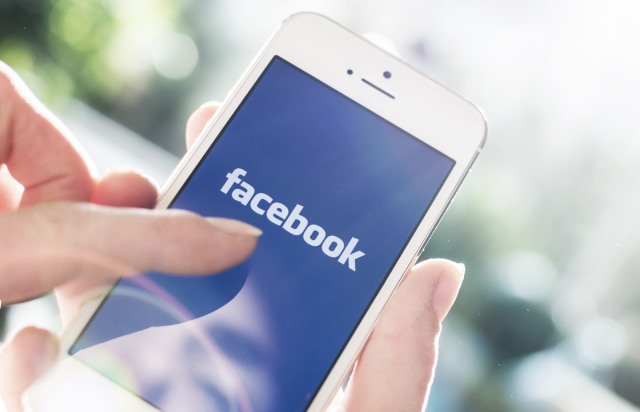
The latest research indicates that Facebook is maintaining strong membership figures despite the rise of rival social networks such as Twitter and LinkedIn.
A study of 1,597 adult Internet users by the Pew Research Centre found that 71 percent were using Facebook, the same amount as in 2013.
In fact, 70 percent said that they visited the site every day, up from 63 percent in 2013.
Facebook's popularity amongst older online users actually increased, with 56 percent of over 65s now using the service, compared with just 45 percent two years ago. The 30-49 year-old age group was the only one to see a decline in user figures, falling to 73 percent.
Pew explained the consistency of Facebook's user figures, by suggesting that instead of leaving for rival sites, individuals simply frequent more social networks than previously. For example, 52 percent of US adults now use two or more social networks, compared with just 42 percent in 2013. LinkedIn, Pinterest and Twitter all saw their membership numbers grow across the period being studied.
Instagram, which was purchased by Facebook in 2012, has demonstrated impressive growth figures in the US, particularly amongst a younger audience. 53 percent of 18 to 29 year-olds currently use the service, making it more popular than Twitter and Pinterest, which have figures of 37 and 34 percent respectively.
While the Pew study will be welcomed by Facebook's CEO Mark Zuckerberg, the research doesn't offer the full story when it comes to social media. By focusing on adults, for example, the survey neglects the teenage audience for sites, which could have a significant impact on the results.
Other communication services, which have a social element, such as WhatsApp, Facebook Messenger and Snapchat were also excluded from the study, limiting the conclusions that can be drawn from it.
Published under license from ITProPortal.com, a Net Communities Ltd Publication. All rights reserved.
Photo Credit: Twin Design / Shutterstock
-

Messaging services are killing SMS
Publié: janvier 13, 2015, 4:32pm CET par Barclay Ballard
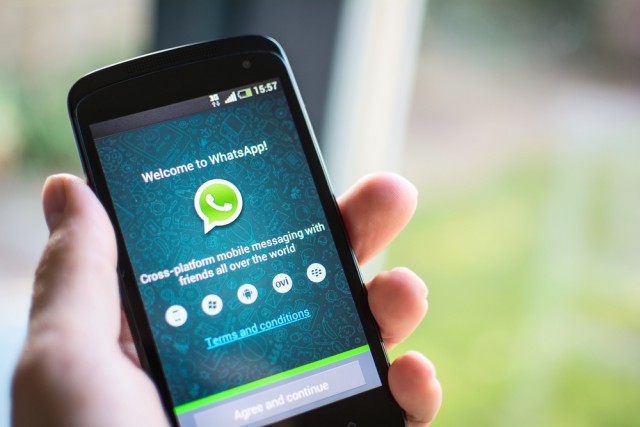
50 percent more messages are now sent using WhatsApp when compared to texts, threatening to kill off SMS communications entirely. CEO of the mobile messaging app Jan Koum announced record results last week, demonstrating the platform’s continued growth.
WhatsApp now boasts 700 million monthly active users and processes 30 billion messages a day, or 347,222 every second. Meanwhile, the already sizeable gap in popularity between WhatsApp and texting is set to increase, with the latter experiencing declining usage figures since 2011.
According to Benedict Evans, a mobile analyst working for venture capital firm Andreessen Horowitz, the flexibility of mobile software also offers WhatsApp some advantages over SMS. Voice calling is expected to be added in the near future to further boost growth.
While WhatsApp is the largest global instant messaging app, it does have a number of high-profile competitors. Facebook Messenger has approximately 500 million users, for example, while WeChat is proving extremely popular in China and other Asian markets. Apple’s iMessage service is more secretive with its usage figures, so it is impossible to tell how it measures up against WhatsApp and similar services.
Short Message Service or SMS has been the predominant form of text messaging for several years now and at the end of 2010 could claim to be the most widely used data application, with approximately 3.5 billion users.
However, as mobile apps have grown in popularity, SMS usage has declined as newer services offer free communication and additional features.
While WhatsApp is currently coming out on top in the mobile messaging space, Evans predicts that there is room for continued innovation in the industry, with the next big thing proving difficult to predict.
"Your smartphone comes with three social networks out of the box, voice, SMS and email, and you use them all", he said. "Are you really going to add only one more?"
Published under license from ITProPortal.com, a Net Communities Ltd Publication. All rights reserved.
Photo Credit: kraphix/Shutterstock
-

Should we fear the Internet of Things?
Publié: janvier 13, 2015, 9:11am CET par Barclay Ballard

The Internet of Things, while still largely unknown amongst the general public, is expected to make a big impact in 2015. Research by Gartner indicates that the number of connected devices will reach 4.9 billion this year, but not everyone is getting excited about this developing technology.
Last week in fact, the chair of the Federal Trade Commission Edith Ramirez issued a pretty strong warning regarding IoT devices and the threat that they pose to privacy. Countering those who put forward potential IoT benefits, Ms Ramirez argued that the "deeply personal" information gathered by connected devices has the potential to be seriously invasive. "I question the notion that we must put sensitive consumer data at risk on the off-chance a company might someday discover a valuable use for the information", she said. However, is Ms Ramirez merely scaremongering, or should consumers really be worried about the predicted explosion in IoT products?
In support of her concerns, one need only look at reports in 2014, that a relatively straightforward hack to Google’s Nest thermostat could enable the device to be used for spying. Nest is one of the first IoT devices to gain relatively widespread adoption, with the firm reportedly shipping 40,000 to 50,000 units every month back in 2013. However, at a BlackHat security conference last year, the device was found to be worrying vulnerable to physical hacking.
Researchers at the University of Central Florida found that by holding down the power button and inserting a USB flash drive anyone could enter Nest’s developer mode and access information about the owner or upload malicious code.
A recent Kaspersky report also highlighted that connected devices in the workplace, such as networked printers and other corporate gadgets, are likely to face an increasing number of attacks, as hackers seek access to corporate systems.
While worrying, malicious hacks and surveillance programs are difficult to prevent entirely across any device. Perhaps more disturbing, is the kind of privacy invasion being suggested by Ms Ramirez, a more subtle form of data acquisition by big businesses all over the world.
Personal data is a hugely valuable commodity, particularly amongst advertisers who can use the information to serve targeted ads based on an individual’s background, preferences or location. With home security systems, thermostats, and even smart home appliances already in existence, the growth of the Internet of Things will surely increase the amount of data available and hence the market for its purchase.
Smartphone apps have already demonstrated a blatant disregard for consumer privacy, so why would IoT companies behave any differently? A recent French report found that some Android apps track their users more than one million times in a single month in order to serve them targeted ads.
If IoT devices do show greater respect for individual privacy it will largely be a result of increased consumer awareness.
The general public are becoming more and more sensitive to their personal data and how easily accessible it is. As a result, consumer trust in online services is on the wane. A recent Open-Xchange report found that just nine percent of Internet users felt that they had complete control over their personal data. Moreover, 54 percent were willing to walk away from a service if sensitive information was shared with intelligence agencies or the police.
If the Internet of Things is to achieve widespread appeal, it will need to alleviate these concerns and the key method is likely to be transparency. Some users may be more than willing to share their personal information with companies, but they will surely want to be informed of why and how that data is being used.
The Internet of Things has the potential to greatly improve functionality and efficiency for consumers and businesses alike and it would be to the detriment of this fledgling industry if it was perceived to be more invasive than innovative.
Published under license from ITProPortal.com, a Net Communities Ltd Publication. All rights reserved.
-

Audi's in-car tablet is a thing of beauty
Publié: janvier 9, 2015, 8:15am CET par Barclay Ballard

Audi has become the first automotive firm to launch its own brand in-car tablet computer, as revealed at this year’s Consumer Electronics Show.
The German company will offer the device alongside its new Q7 car, in the hope that it will provide a more fulfilling rear seat entertainment service.
The Audi Tablet boasts a premium metal finish, a 10.1-inch display and runs on Google’s Android operating system. The manufacturers have also ensured that the device is specially equipped for in-car use, ensuring that the screen is reflection-free and remains visible even in direct sunlight.
It will also become the first table to utilize the automotive-grade Nvidia Tegra 4 chip, which guarantees better performance during extremes of temperature -- much needed on those frosty winter mornings.
The tablet will provide practical functions like in-car climate control, alongside entertainment services and will also be capable of connecting to the car’s Wi-Fi. While Audi has explained that the device will work outside of the car too, it is recommended for in-vehicle use. As such, the tablet will lock itself if not returned to the car’s docking station, located within the front head restraints, within a month.
A spokesman for the car giant said that Audi wanted to modernize in-car entertainment and the launch of its own tablet seemed like the obvious choice.
"It’s a more modern and stylish form of control -- and by designing the tablet ourselves, we’ve been able to give it a suitably premium finish while also tailoring it for in-car usage".
During the Las Vegas event, Audi also confirmed that user safety was a key concern during the tablet’s development. Accordingly, the device has been constructed using a special form of glass designed to not shatter if impacted during a crash.
Published under license from ITProPortal.com, a Net Communities Ltd Publication. All rights reserved.
-

Microsoft looking to do much more with Kinect
Publié: janvier 6, 2015, 9:00am CET par Barclay Ballard

Microsoft is expanding its Kinect team in order to push the boundaries of what is possible with motion sensor technology.
The Redmond-based firm posted a job listing online, hinting at some of the innovative features likely to be included in later versions of Kinect.
The job post, which is looking for a senior software engineer, was posted early last week.
"A new team has formed in Microsoft’s Xbox division with a specific purpose: to push the envelope of today’s and tomorrow’s technology as we explore new ideas from the ground floor", the listing read. "It begins with veterans from Xbox 360, Xbox LIVE, and Kinect. But we’re growing as quickly as our imaginations can be translated into code".
Microsoft originally launched Kinect as an Xbox 360 peripheral in 2010, but the device has since grown in significance for the firm with a Windows version being released in 2012. The Kinect enables users to interact with their console or PC without the need for traditional input methods such as a controller.
The new Kinect being worked on is still shrouded in secrecy but the recent job listing does reveal that "machine vision, data mining, artificial intelligence, voice recognition and embedded systems" are all possible features.
As well as being highly qualified, with five years of software development under their belts, the ideal candidate will also need to cope well with failure, as Microsoft explains that projects will often prove unsuccessful.
In fact, the secretive nature of the projects has even led the company to issue a warning of sorts about the job, explaining that "If you want a comfortable, standard-role job at Microsoft with no ambiguity or risk, please don’t apply".
Perhaps the new Kinect team will look to incorporate Microsoft’s IllumiRoom technology into new editions of its motion sensor device. IllumiRoom was showcased last year and even turned the user’s surroundings into a part of the game.
Published under license from ITProPortal.com, a Net Communities Ltd Publication. All rights reserved.
-

Montblanc enters the wearables market with new smartwatch strap
Publié: janvier 4, 2015, 8:11pm CET par Barclay Ballard

Luxury brand Montblanc has unveiled an innovative watch strap that will provide smartwatch features without compromising on style.
The strap comes with a small display that lets the user see any notification, as well as controlling their music and smartphone camera remotely.
The e-strap comes as an optional addition to the Montblanc Timewalker Urban Speed collection and features a leather strap with a carbon fibre texture dubbed "Extreme Montblanc Leather". An electronic module, available in a number of size and color options, is designed to sit under the wearer’s wrist.
The Montblanc strap does not include any fitness tracking capabilities, usually a key feature for smartwatches, but this is understandable since most consumers don’t exercise with a luxury thousand-pound watch on their wrist.
One of the main issues facing the wearables market is that, while functional, the majority of smartwatches on the market look clunky or overly geeky when compared with traditional timepieces.
As well as the Montblanc strap, watch firm Kairos has also developed the Tband, which turns normal watches into smartwatches using a similar design. While the Tband is available to anyone, the Montblanc strap can only be purchased by Montblanc customers, meaning you may have to fork out somewhere between $3,000 and $5,000, plus an additional $300 for the strap.
While the price tag may rule out mass market appeal, the development of high-tech straps that effectively turn ordinary watches into smart ones, could open up the market, allowing consumers to combine their favorite watch with cutting edge mobile technology.
Published under license from ITProPortal.com, a Net Communities Ltd Publication. All rights reserved.
-

Upp's hydrogen fuel cell charger can power your smartphone for a week
Publié: janvier 2, 2015, 9:08am CET par Barclay Ballard

A new way of powering your smartphone has been released that can provide a week’s worth of charge using renewable energy sources.
Upp is a portable power solution utilizing hydrogen fuel cells that should charge any USB-compatible device.
Upp consists of an Upp fuel cell and Upp Cartridge, both of which are included in the starter pack for £149. Once the reusable cartridge is empty, the owner can exchange it for a replacement cartridge for just £5.95.
Upp is currently available at Apple Stores across the UK as well as online from the Upp website.
The product has been designed by Intelligent Energy, which in recent years has focused on producing hydrogen fuel cells that are small enough to charge the array of portable devices, like smartphones and tablets, which play such a key role in our daily lives. Previously, hydrogen fuel cell technology had largely been confined to the automobile industry.
Dr Henri Winand, the company’s CEO, believes that Upp could be the start of a number of new and innovative technologies that enter the consumer market.
"Upp represents the start of the next generation of energy devices, a signal to the portable electronics market that customers are ready to adopt transformative technologies", he said. "Consumers want energy independence as the demand and reliance on portable devices accelerates".
Upp could also be used to power wearable devices such as fitness bands, portable speakers or e-readers. Upp charges at the same speed as an ordinary wall socket and is safe to take on airplanes, so is suitable for keeping your mobile charged on long trips abroad.
A full Upp cartridge can provide, on average, one week of power for the user’s smartphone, equaling approximately 900 additional hours of standby, 32 hours of call time, 26 hours of video, or 40 hours of web browsing.
The product also comes with its own smartphone app, which tells the user important information, such as how much charge has been used up and the nearest location selling replacement cartridges.
Published under license from ITProPortal.com, a Net Communities Ltd Publication. All rights reserved.
-

iPhone 6 wins Christmas
Publié: décembre 31, 2014, 4:42pm CET par Barclay Ballard

A new report has revealed that Apple devices were a hugely popular Christmas gift this year, trumping smartphone rivals.
Flurry’s annual Christmas report found that 51.3 percent of new devices activated on Christmas Day were manufactured by Apple, compared with 17.7 percent by Samsung and 5.8 percent by Nokia.
Other major players in the global market, Xiaomi, HTC and Huawei, received less than one percent each. Flurry suggests that this is because their primary markets are located in Asia, where Christmas is not as heavily focused on gift-giving.
Flurry, which utilizes data from 600,000 apps, found that the iPhone 6 was the most activated device, while Apple’s larger flagship device, the iPhone 6 Plus, was also popular. Phablets, in general, are selling well, making up 13 percent of new Christmas Day activations compared with just four percent in 2013. This reinforces data collected by Juniper Research earlier in the year, which suggested that the number of phablet units shipped will reach 120 million by 2018.
The increase in popularity of phablet devices has had a negative effect on tablet sales however. Smartphones with smaller screens also fared less well over the holiday period.
"App developers should take into account the fact that larger screens are becoming the primary device; it’s not just the secondary primetime tablet anymore", Flurry explained in its report.
As expected, Christmas was also a hugely popular day for installing new applications, with Flurry recording 2.5 times the usual number of downloads. Messaging apps and games were found to the most popular software downloads.
Published under license from ITProPortal.com, a Net Communities Ltd Publication. All rights reserved.
-

The most pirated movies of 2014
Publié: décembre 31, 2014, 10:23am CET par Barclay Ballard

A list of this year’s most pirated movies has been revealed online, with most of 2014’s blockbuster releases featuring.
Director Martin Scorsese’s The Wolf of Wall Street, starring Leonardo DiCaprio, claimed the title of most illegally downloaded film in 2014.
According to piracy-tracking firm Excipio, Disney’s Frozen came a close second, with both movies downloaded approximately 30 million times across torrent sites between 1 January and 23 December.
Robocop was the third-placed film on the list, but its figures did include 1987’s original release alongside this year’s remake, according to The Hollywood Observer. Gravity was close behind with 29.357 million downloads.
The list of most-pirated movies includes a number of Oscar nominated films. Alongside The Wolf of Wall Street, which picked up five nominations including Best Picture, 12 Years a Slave, American Hustle and Captain Phillips were some of the other Academy Award nominees to make the list.
The highest-grossing film of 2014, The Guardians of the Galaxy did not make the top-20 most pirated films of the year, however. The Hollywood Reporter speculates that this may have been because "anyone interested in the film opted to see it in theaters".
Online piracy experienced a particularly high-profile end to 2014, with Swedish police taking down the notorious file-sharing site The Pirate Bay, albeit only temporarily. The site, which has a cloud-based infrastructure, is virtually impossible to take down permanently and has been revived by rival peer-to-peer website Isohunt.
The full list of 2014’s most pirated films can be found here.
Published under license from ITProPortal.com, a Net Communities Ltd Publication. All rights reserved.
-

1980s technology can be used to hack any smartphone
Publié: décembre 24, 2014, 9:33am CET par Barclay Ballard

German researchers have discovered that technology from the 1980s can be used by hackers anywhere in the world to spy on your phone calls and text messages.
The Signaling System 7 (SS7) network, which is still in use today, could allow hackers using an African or Asian network, for example, to hack into a US or UK-based mobile.
SS7 utilizes a series of protocols to enable mobile network carriers to route calls, texts and similar services to each other. However, security researchers Tobias Engel of Sternraute and Karsten Nohl, chief scientist for Security Research Labs, have discovered a number of security flaws in the network.
Even mobile networks using the most advanced encryption available are at risk, as they must communicate over SS7, enabling hackers to locate callers, listen to calls or record encrypted conversations for use at a later date.
"It’s like you secure the front door of the house, but the back door is wide open", Tobias Engel, told the Washington Post.
Earlier in the year, it was reported that a number of nations across the world had purchased surveillance systems that utilize the SS7 network in order to track key targets. However, there is nothing to prevent criminals from adopting a similar approach.
There are two primary methods used to intercept phone calls over the SS7 network. The first sees attackers hijack a phone’s forwarding function, redirecting calls to themselves before sending them onto the intended recipient. This means hackers can listen in on conversations from anywhere in the world.
The second method uses radio antennas to collect all calls and texts in the area, with hackers even able to request a temporary encryption key through the SS7 network, if any information has additional security. This technique requires the attackers to be nearer to their victims, but also allows them to target many more individuals.
The German researchers who discovered the security flaw are expected to reveal the full extent of their findings at the Chaos Communication Congress in Hamburg later this week.
Published under license from ITProPortal.com, a Net Communities Ltd Publication. All rights reserved.
-

Samsung planning a mobile payments service to take on Apple Pay
Publié: décembre 23, 2014, 10:05am CET par Barclay Ballard
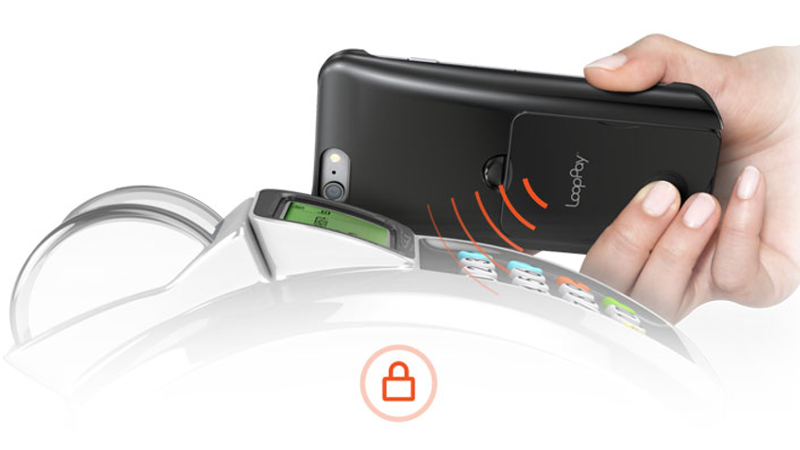
Sources indicate that Samsung is lining up its own mobile payments service to launch next year.
ReCode reports that the South Korean firm is in discussions with a payments startup called LoopPay to develop a system that doesn’t require retailers to install any additional hardware.
Apple Pay, which launched earlier this year, and Google Wallet both require extra NFC equipment in order to work in stores.
LoopPay enables consumers to make purchases using either a key fob, electronic card or a specially-designed smartphone case in conjunction with already existing card machines. The company uses its own Magnetic Secure Transmission (MST) technology to enable transactions to take place safely without the need to swipe a payment card.
A prototype of LoopPay’s payment system has reportedly been developed for use on Samsung smartphones and is believed to utilize the fingerprint identification technology included in the firm’s latest Galaxy release. Apple Pay also uses a similar process to secure its transactions.
LoopPay also plans additional security measures in the future, including the implementation of a process known as tokenization. This would substitute a consumer’s information with a unique placeholder, meaning that a retailer never receives or stores a user’s payment data.
Samsung’s platform would largely mimic a traditional card swipe, which could greatly increase the service’s popularity by ensuring it works in as many locations as possible.
The partnership would also provide a major boost to LoopPay, giving the Burlington, Massachusetts-based startup some mainstream credibility and massively increasing its userbase.
Both LoopPay and Samsung have refused to comment on the speculation and the latest rumors indicate that a collaboration between the two firms is far from being finalized.
Published under license from ITProPortal.com, a Net Communities Ltd Publication. All rights reserved.
-

Hush smart earbuds promise the perfect night's sleep
Publié: décembre 16, 2014, 7:00pm CET par Barclay Ballard
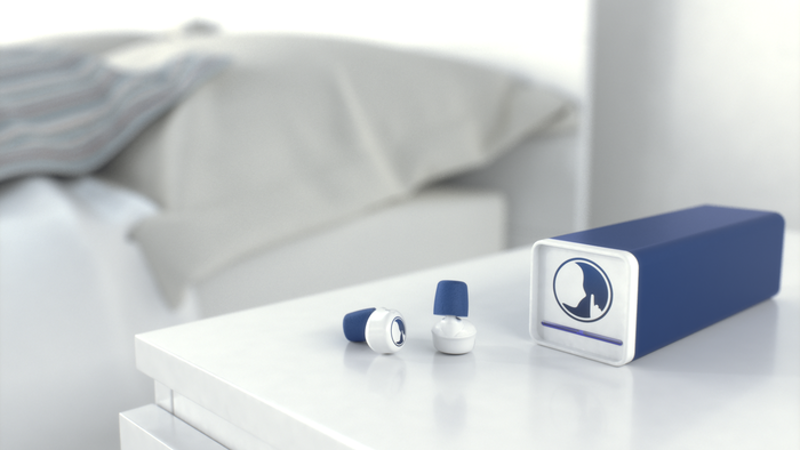
A new Kickstarter project promises a better night’s sleep using smart earbuds and noise-canceling technology.
Hush can provide a silent environment no matter how much noise is taking place around you, by actively recording and playing opposite sound waves in order to cancel out any potential disturbances.
The smart earbuds also offer a range of soothing recordings to help the user get to sleep in whichever way suits them best. The device currently boasts 10 different sounds including white noise and rainfall.
However, the team of engineers behind Hush, Daniel "Ewok" Lee, Daniel Synn, and Daniel "Chesong" Lee, are well aware that despite craving a peaceful night’s sleep there are times when you need to be woken up. With that in mind, Hush comes with an accompanying smartphone app, enabling the user to select which notifications are allowed to interrupt their sleep. The alerts and any set alarms will play through the smart earbuds, meaning only the user is disturbed, allowing your partner or roommate to continue sleeping.
The earplugs are capable of playing white noise or any of the other sounds for a full 10 hours before needing to be recharged. The device also comes with a carry case that charges your device automatically and can hold 10 full charges before it needs to be plugged in.
Hush can also play binaural beats, which means that one ear receives noise of a certain pitch, while the other receives a slightly higher sound. Depending on the difference, this can encourage various brain states, making you feel relaxed and calm or alert and awake.
Anyone struggling to get to sleep may want to check out the Hush Kickstarter page, which has already beaten its $100,000 fundraising goal. A pair of the smart earbuds can currently be purchased for $115, and are expected to ship in May 2015.
Published under license from ITProPortal.com, a Net Communities Ltd Publication. All rights reserved.
-

Raspberry Pi to blast off into space
Publié: décembre 12, 2014, 5:57pm CET par Barclay Ballard

Two Raspberry Pi computers are going to be sent into space as part of a competition to get children inspired by coding and space exploration.
The Astro Pi project will take place from the middle of January and will see the devices sent to the International Space Station (ISS), containing code written by primary and secondary school children.
According to the Raspberry Pi Foundation blog, the winning code will be run by the ISS crew and the results sent back to Earth.
"[Astronaut] Tim Peake plans to deploy the Astro Pi computers in a number of different locations on board the ISS," the Foundation wrote.
"He will then load up the winning code whilst in orbit, set them running, collect the data generated and then download this to Earth where it will be distributed to the winning teams".
Since launching in 2012, the Raspberry Pi has become a runaway success, selling nearly four million units. Business secretary Vince Cable believes the budget computer could help train the next generation of big data analysts.
"So much technology relies on big data but not enough people are being trained in this field. This challenge helps the next generation to have fun whilst learning the skills that industry needs", he said.
"Creating tomorrow’s engineers is part of our industrial strategy that gives a long-term commitment to world-class skills".
Competition entrants have to submit their ideas for apps that could aid space research, with the best ideas ultimately being sent to the ISS.
Raspberry Pi Foundation founder Eben Upton added that engaging young people with coding has always been one of the organization main aims, as it has the potential to benefit "the whole Science, Technology, Engineering and Mathematics spectrum".
With space travel a particularly hot topic currently, Upton also teased that the Raspberry Pi could go even further afield than the ISS, suggesting that a trip to Mars could even be on the horizon.
Published under license from ITProPortal.com, a Net Communities Ltd Publication. All rights reserved.
-

Ofcom finds social network use declining most in the UK
Publié: décembre 12, 2014, 8:59am CET par Barclay Ballard
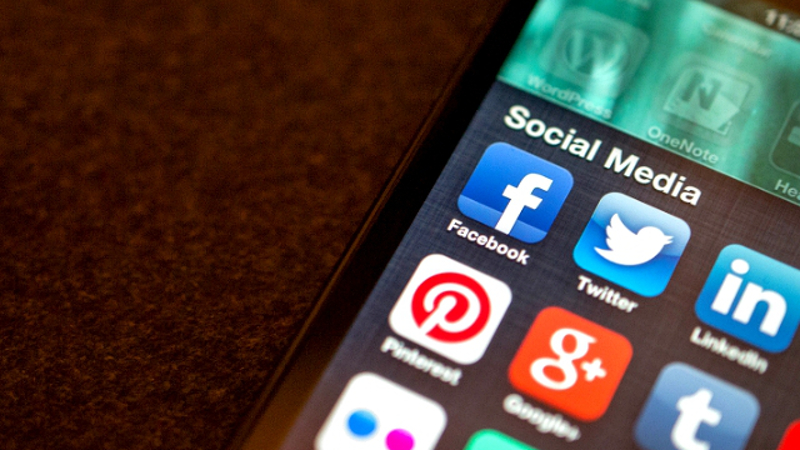
Media regulator Ofcom has found that the use of social networks is on the decline across a number of countries, but most prominently in the UK.
The International Communications Market Report 2014 found that the number of UK weekly visitors to social networks fell from 65 percent to 56 percent between September 2013 and October 2014.
Other nations, including the US, China and Japan, experienced similar decreases but on a much more marginal scale. In the United States, for example, numbers fell from 56 percent to 54 percent.
Demonstrating worldwide fluctuations in social media use, the report found that other European nations and Australia saw social network use increase over the same period, with Italy’s usage rising from 60 percent to 75 percent.
Ofcom suggests that the reason for the decline in popularity of traditional social networks could be down to the growth of social media apps and services, which are not focused on networks of connections. Online video sites, as well as messaging services like WhatsApp and WeChat, the latter of which is particularly popular in Asia, are likely to have contributed to this trend.
Social networks have clearly taken note of the growth in messaging apps, most notably with Facebook’s $19 billion purchase of WhatsApp earlier in the year.
Despite the fall in usage in some parts of the world, the Ofcom report highlighted how popular social networking remains, particularly across mobile devices. It was the number one mobile Internet activity across all the nations surveyed outside of Japan and China.
Published under license from ITProPortal.com, a Net Communities Ltd Publication. All rights reserved.
-

German and UK Internet users most likely to quit web services over privacy concerns
Publié: décembre 11, 2014, 9:24am CET par Barclay Ballard

Internet users from the UK and Germany are more likely to stop using or delete an account for an online service than those from the United States, according to research into data privacy concerns.
The report by German software firm Open-Xchange, called Crossing the Line, investigated how online behavior has been affected by Edward Snowden’s revelations regarding government surveillance programs.
Surveying 3,000 web users from the US, UK, and Germany, the study found that 35.5 percent of German respondents have stopped using an online service, compared with 18 percent in the UK and just 13 percent in the US.
Rafael Laguna, CEO of Open-Xchange, believes that recent high-profile events have changes how some users view going online. "The last 18 months has been a pivotal time for the future of the Internet," he said. "Suspicions that many of us have long held about the privacy of our data were confirmed with the revelations of Edward Snowden. It brought the discussion about data privacy to the top of the agenda. But a year and a half later we’re no closer to resolving the issues raised, despite much posturing from the big Internet companies and bureaucrats.
"Services like social networks, messaging apps and cloud storage have become part of the fabric of our daily lives. But by continuing to pursue exploitative, dishonest business models, we will see more and more people switch off from these online services".
The report also found that Facebook was the service that respondents were most likely to quit, with 17 percent of Germans, nine percent of British and six percent of US Internet users leaving the social network. Some other highly ranked user concerns include what happens to personal data after it is collected and the security of emails and private messages.
The report concluded that online businesses need to provide greater transparency in order to gain users’ trust, providing clear and concise details of whether personal data is going to be abused or shared with third-party firms.
Published under license from ITProPortal.com, a Net Communities Ltd Publication. All rights reserved.
-

Blackphone launching a privacy-focused app store next year
Publié: décembre 10, 2014, 4:34pm CET par Barclay Ballard

Blackphone, the handset that claims to be able to protect users against surveillance and other security threats, is set to launch its own app store.
The service will be available from January 2015 and will offer privacy-focused apps and software that have been selected to provide the highest level of security available.
All of the apps are compatible with Blackphone’s PrivatOS operating system, which is a modified version of Google’s Android KitKat platform. PrivatOS also comes with a number of pre-installed apps such as the Silent Circle package, which provides encrypted communication, anonymous web browsing and cloud storage solutions by SpiderOak.
Blackphone users are also able to wipe their device or recover any data remotely.
The latest update to the operating system, PrivatOS 1.1, which is also set to launch early next year, aims to be even more secure than its predecessor. Users who download the update will be able to create separate spaces or compartments to hold different apps or files, as part of a new feature called "Spaces".
"With most smartphones, separating work and play means compromising either privacy or convenience: either work apps and data live in the same place as personal games and social media apps, or users carry two devices to guarantee privacy and separation," the company wrote online.
"Spaces can separate work life from personal life, a 'parents only' space from a kid-friendly one, or any other separation users can dream up -- no compromises needed".
Despite Blackphone’s security claims, some industry experts have questioned how much protection the handset can offer users. While the device’s lack of pre-installed apps from Google means users are not sharing data unwittingly with the search engine giant, government surveillance programs like the recent PRISM scandal are unlikely to be thwarted by the phone’s security features.
Despite this, the launch of a dedicated app store should at least give Blackphone owners a wider choice of software for the handset.
Published under license from ITProPortal.com, a Net Communities Ltd Publication. All rights reserved.
-

Iran planning to end Internet anonymity
Publié: décembre 9, 2014, 12:41pm CET par Barclay Ballard

The Iranian government is reportedly working on a new system to block Internet anonymity.
The Middle Eastern nation, which has a long history with online censorship, will be able to identify any individual who goes online in the country according to the AFP.
The country’s minister of telecommunications Mahmoud Vaezi confirmed the development in an interview with the Iranian Students’ News Agency.
"Because of our efforts, in future when people want to use the Internet they will be identified, and there will be no web surfer whose identity we do not know", he said.
Iran already blocks a number of websites on political or religious grounds including Google, YouTube, Twitter and Facebook, alongside communication apps such as WhatsApp, Viber and Tango. It is believed that by preventing anonymous browsing, it hopes to deter individuals from posting contentious content.
There are also plans to implement a smart filtering system over the next 10 months that will identify and block parts of websites that the Iranian government deems to be criminal.
The Iranian authorities have also been suspected of Internet censorship attempts in previous years.
In 2012, the government had to deny reports that it was about to implement a service that would require user identification to gain online access in public areas, such as Internet cafes, a method used by nearly half of the Iranian population to get online.
In the past, Iran has also had to refute allegations that it hosts and aids hackers attacking infrastructure and services believed to be supporting the US and Israel.
Published under license from ITProPortal.com, a Net Communities Ltd Publication. All rights reserved.
-

Fewer people now watching traditional TV due to online streaming growth
Publié: décembre 5, 2014, 6:53pm CET par Barclay Ballard

The number of people watching television is continuing to plummet as many migrate towards online streaming.
The latest report by Nielsen suggests that traditional content providers are being heavily impacted by new, more consumer-centric services.
The number of individuals watching TV, for example, decreased by 4 percent last quarter when compared to a year ago. By contrast those viewing online streaming services grew by 60 percent. The figures reinforce the view of Netflix CEO Reed Hastings, who last week claimed that traditional TV broadcasts will be dead by 2030.
Nielsen revealed that in America, more than 141 hours of traditional TV was watched per month last quarter, compared with 11 hours viewed via online streaming. While this may seem like TV still has the upper hand, the drop in viewership coupled with the fact that online streaming is going from strength-to-strength, suggests that broadcast media needs to undergoing significant changes in order to survive.
It is also worth bearing in mind that the report does not take into account video streaming occurring on mobile devices, video game consoles or set-top boxes, meaning the figures are likely to be skewed downwards. It means that younger viewers, in particular, who use many of the aforementioned devices to consume their media are probably underrepresented in the figures.
In addition to the number of viewers, the report also highlighted that the amount of video streaming content being viewed by all adults has increased by more than 50 percent against the same period twelve months ago.
In another blow to traditional broadcasters, Nielsen also announced that pay-TV subscribers fell by more than 2.2 million compared to last year.
Image Credit:Quinn Dombrowski
Published under license from ITProPortal.com, a Net Communities Ltd Publication. All rights reserved.
-

New UK tax laws target Google, Amazon and Apple
Publié: décembre 5, 2014, 10:43am CET par Barclay Ballard

George Osborne has announced a new tax proposal aimed at multinational firms like Google, Amazon and Apple, normally associated with shifting profits to avoid paying UK tax.
The measure, which has been dubbed the "Google tax", was announced during the chancellor’s autumn statement.
Mr Osborne explained that the scheme, which comes into effect on April 2015, is intended to "make sure that big multinational business pay their fair share".
"Some of the largest companies in the world, including those in the tech sector, use elaborate structures to avoid paying taxes", he added.
"Today I am introducing a 25 percent tax on profits generated by multinationals from economic activity here in the UK which they then artificially shift out of the country".
According to government estimates, the tax is expected to raise more than £1 billon from companies accused of profit shifting.
According to the BBC, Google has been labeled "devious" and "unethical" in its tax payments, but the measures used to avoid tax payments are currently legal.
The Office for Budget Responsibility (OBR) has questioned how effective Mr Osborne’s new measures will be, highlighting that it is difficult to predict how companies will respond to the tax laws.
"The behavior change is likely to be volatile and large due to the characteristics of the companies targeted by this measure", the OBR explained.
Preventing companies from avoiding local tax laws has been a major headache for a number of countries, not just the UK. Earlier this year, the OECD group of nations announced plans to implement a country-by-country model requiring businesses to declare the tax paid within each region.
Published under license from ITProPortal.com, a Net Communities Ltd Publication. All rights reserved.
-

Social networks do not represent the real world
Publié: décembre 1, 2014, 10:10am CET par Barclay Ballard
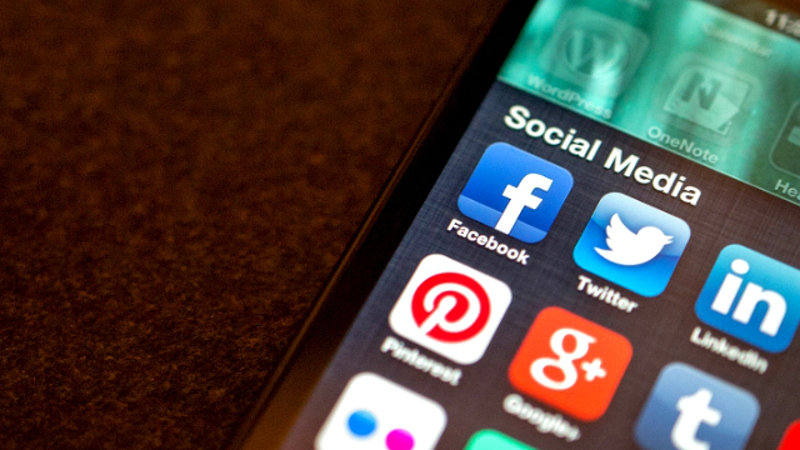
Researchers have warned that big data trends discerned from social networks, like Twitter and Facebook, misrepresent the real world because they use biased information.
Computer scientists at McGill University, Montreal and Carnegie Mellon University in Pittsburgh, have discovered that social media is often guilty of "population bias", as large sections of society are not represented by the sites.
Only five percent of over 65s use Twitter, for example, while Pinterest’s dominant audience is females aged 25 to 34. Even Facebook, which possess a relatively broad demographic cannot provide entirely reliable data, as there is no "dislike" button.
Dr Derek Ruths, assistant professor at McGill’s School of Computer Science, believes this misrepresentation could have a significant effect on the real world, with a huge number of research papers based on this erroneous data.
"A common assumption underlying many large-scale social media-based studies of human behavior is that a large-enough sample of users will drown out noise introduced by peculiarities of the platform’s population," he said. "These sampling biases are rarely corrected for, if even acknowledged".
A website’s design can also influence people’s decisions by leading them to various links, for example, meaning social networks are also often guilty of "interest bias".
Previous studies have been used to predict fluctuations in the stock market, the performance of Hollywood films or to justify government spending, but the latest research suggests that just because something is labeled as "big data", doesn’t mean it should be followed blindly.
Published under license from ITProPortal.com, a Net Communities Ltd Publication. All rights reserved.
-

When iPads fall, Windows tablets rise
Publié: novembre 27, 2014, 6:03pm CET par Barclay Ballard
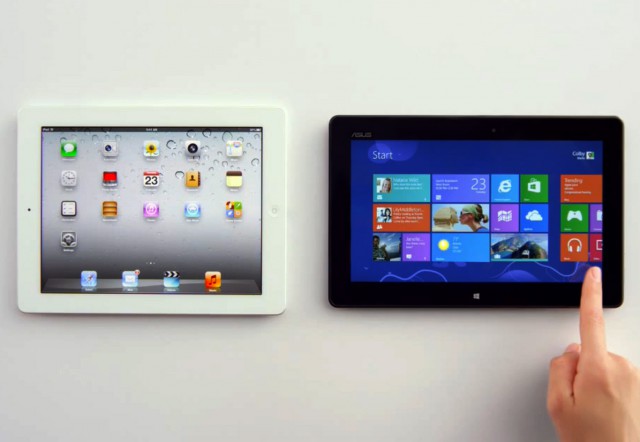
The tablet market could be slowing down after years of growth, according to industry estimates, with Apple's iPad set to be hardest hit.
Research firm IDC projects that total tablet shipments globally are set to increase by only 7.2 percent this year, compared with 52.5 percent growth in 2013.
The downturn is said to reflect a growing reliance on PCs and smartphones, with most consumers and businesses still preferring to run the full-version of software packages on PCs.
Tablet owners are also keeping a hold of their devices for longer than expected, with many consumers keeping their tablet for three years or more. With the majority of new apps compatible with older hardware, there is often little reason to upgrade.
The IDC figures also take into account hybrid tablet devices that can function as laptops by adding an external keyboard. Shipments of these devices are only expected to grow by four percent.
Shipments of Apple’s iPad are actually set to fall this year, with predictions suggesting a 12.7 percent decrease in the number of units when compared with 2013. Apple CEO Tim Cook is looking to reverse this trend, with industry sources indicating that an enterprise partnership with IBM could be in the works to provide businesses with cloud-optimized mobile devices.
Compounding Apple's woes, shipments of Windows tablets are expected to grow by 67.3 per cent next year, totaling 10.9 million units, with Android shipments also increasing, this time by 16 percent.
IDC predicts that the market slowdown will continue until 2018, but did admit that there were a number of industry unknowns that could yet have an unforeseen impact on tablet sales.
Published under license from ITProPortal.com, a Net Communities Ltd Publication. All rights reserved.
-

PlayStation games can run on Android Wear smartwatches
Publié: novembre 27, 2014, 8:44am CET par Barclay Ballard

With the latest smartwatches boasting a significant amount of processing power, it was only a matter of time before fans of classic video games starting emulating older titles to run on them.
Now, one particular retro enthusiast has managed to run PlayStation One games on their Android Wear device.
While the individual responsible for getting the emulation to work, known as EpicLPer, claims that it was a relatively simple process, the watch would have had to have been rooted and several unauthorized apps installed.
With Android Wear boasting a Snapdragon 400 processor and 4GB of internal storage, users simply then have to install a PSOne emulator and their video games of choice.
Other smartwatch owners have also recently shown that Flappy Bird and Minecraft can be played via wearable tech gadgets.
Gamers can also connect a MOGA controller to their Android Wear smartwatch, which judging by the below video, might be a good idea.
Using touch screen controls across the device’s small display means almost half of the game is obscured any time you press a button -- but practicalities normally take a back seat when it comes to retro gaming emulation.
In the past, individuals have modified calculators and even oscilloscopes (basically anything with a screen) in order to play video games.
Of course, a smartphone will offer a better emulation experience than a smartwatch in most cases, but it is still impressive to see how powerful these tiny wearables are becoming.
Published under license from ITProPortal.com, a Net Communities Ltd Publication. All rights reserved.
-

BitTorrent users more likely to pay for content, according to survey
Publié: novembre 25, 2014, 9:19am CET par Barclay Ballard

One of the arguments often put forward in favor of online piracy is that those who illegally download content are more likely to purchase that content at a later date. Well now BitTorrent has some figures to back-up that assertion.
Following a survey of 2,500 of its users, the peer-to-peer network found that file-sharers are more engaged than the average consumer.
BitTorrent users are also 170 percent more likely to have purchased digital music over the last month when compared with traditional consumers, with half of the respondents regularly paying for music every month.
Utilizing figures from the US music industry trade group, the RIAA, BitTorrent also claimed that its users are eight times as likely to pay for a subscription music streaming service, such as Spotify. 16 percent of BitTorrent users held an account at one of these platforms, compared with two percent of the general public.
Perhaps more surprisingly, torrent users were also more likely to purchase physical media as well. 45 percent and 10 percent of those surveyed had bought CDs and vinyl respectively in the last 12 months, suggesting that the company’s own BitTorrent bundles could increase in popularity.
"The results confirm what we knew already, that our users are super fans. They are consumers of content and are eager to reward artists for their work", Christian Averill, BitTorrent’s director of communications, said in an interview with Torrent Freak.
"BitTorrent Bundle was started based on this premise and we have more than 10,000 artists now signed up, with more to come. With 90 percent of purchase going to the content creators, BitTorrent Bundle is the most artist friendly, direct-to-fan distribution platform on the market".
Some may criticize the survey for its small sample size, but it certainly paints torrent users in a positive light. It also suggests that are ways for content providers to use peer-to-peer networks legitimately to target consumers that are more receptive to purchasing films and music.
Photo Credit: CREATISTA/Shutterstock
Published under license from ITProPortal.com, a Net Communities Ltd Publication. All rights reserved.
-

3 billion people will be online by 2015
Publié: novembre 24, 2014, 7:49pm CET par Barclay Ballard

More than three billion people will have Internet access by next year, according to a new study.
Estimates by eMarketer indicate that 42.4 percent of the global population will be online in 2015, an increase of 6.2 percent compared with this year.
By 2018 this figure will have risen to close to 50 percent, with 3.6 billion people able to access the Internet at least once a month.
Senior forecasting analyst at eMarketer, Monica Peart, explained that most of the growth will come from emerging markets and the increasing availability of smartphones.
"Inexpensive mobile phones and mobile broadband connections are driving Internet access and usage in countries where fixed Internet has been out of reach for consumers, whether that’s due to lack of infrastructure or affordability," she said.
"While highly developed nations are nearly saturated in terms of Internet users, there’s significant room for growth in emerging markets; for example, India and Indonesia will each see double-digit growth in each year between now and 2018".
Major technology brands are now in a race to launch the Internet-enabling infrastructure that will allow these nations to get online more easily. Aside from any altruistic motives, establishing connections in developing countries could be a major revenue source for these firms.
Google has already launched its Project Loon initiative, which uses high altitude balloons to create an aerial wireless network capable of providing high speed Internet access.
Facebook, in partnership with Internet.org, also recently began enabling smartphone owners in Africa to view a selection of websites, free of any data charges, via a specially designed app.
Published under license from ITProPortal.com, a Net Communities Ltd Publication. All rights reserved.
-

Blinkbox now offers offline TV and movie viewing on iPad
Publié: novembre 24, 2014, 11:20am CET par Barclay Ballard

The online streaming service Blinkbox now allows customers to download films and TV shows to watch offline.
Currently, the service is only available to iPad owners running iOS 6 or later, but it is expected to come to Android devices at a later date.
In order to take advantage of the new feature, users will still need to buy or rent the title via a web browser, before they use the app. Once that’s done however, Blinkbox users can watch their favorite movies and TV programs wherever they are.
Blinkbox was originally launched back in 2007 and has deals in place with more than 50 of the world’s largest content providers including HBO, BBC Worldwide, Disney, Warner Bros., Universal Studios, Paramount Pictures, Sony Pictures Entertainment, and 21st Century Fox.
In 2011, Tesco acquired an 80 percent stake in the firm, which enables users to stream content to their PCs, video game consoles, tablets and smart TVs.
The decision to enable offline use may have been taken as a response to the intensifying competition in the online streaming market.
Netflix, Amazon Prime Instant Video and the Sky-owned Now TV all provide subscription services competing for a similar market position as Blinkbox.
While the service began life solely as a TV and movie provider, it has recently launched its own ebooks service called Blinkbox Books, alongside a music streaming platform, Blinkbox Music.
Published under license from ITProPortal.com, a Net Communities Ltd Publication. All rights reserved.
-

UK mobile broadband to get faster and cheaper thanks to moves by Ofcom
Publié: novembre 20, 2014, 11:20am CET par Barclay Ballard

Ofcom has announced it will soon make more frequencies available to mobile broadband, resulting in increased speeds and a cheaper service.
By using the 700MHz frequency band, currently in use by wireless microphones and digital terrestrial TV broadcasts, consumers in rural areas should also receive improved coverage.
The communications regulator said the service should be ready for launch by the start of 2020, but added that it could be available as soon as 2018.
Telecoms expert Dominic Baliszewski said that the increased capacity and speeds provided by the new frequencies will give mobile data services the potential to match fixed line broadband.
"The real question is whether mobile broadband will ever replace fixed line broadband," he said. "With 4G customers already experiencing an average speed of 15Mb, this is already good enough to serve most people’s home broadband needs. The limiting factors at present are availability, price and constraints on download limits -- both of which will be addressed, at least in part, by the freeing up of the 700MHz band".
Data being transmitted across the new frequency band is better at passing through walls and traveling longer distances, meaning rural customers, in particular, could benefit.
Ofcom’s chief executive Ed Richards believes the development could bring wide-ranging benefits to the entire UK population.
"This decision ensures that we are making the raw materials available with which investors and companies can build the services which will support the digital economy of the future," he added. "More spectrum will be available for mobile broadband where demand is especially high, but the UK will retain a competitive terrestrial television platform as well".
Published under license from ITProPortal.com, a Net Communities Ltd Publication. All rights reserved.
-

New report claims 81% of Tor users can be identified
Publié: novembre 19, 2014, 9:06am CET par Barclay Ballard

A new report claims that more than 81 percent of Tor users are identifiable using a method that threatens Internet anonymity.
The study, titled "On the Effectiveness of Traffic Analysis Against Anonymity Networks Using Flow Records", claims that a technique known as traffic confirmation can be used to identify users.
It requires the ability to monitor large amounts of data coming in and out of Tor nodes to determine the IP address of the individual being tracked. According to the report, the technique has been largely successful.
"In experiments that involved data from public Tor relays, using both open source Netflow emulation packages and our institutional Cisco router that monitored traffic using Netflow framework, we were able to correctly identify the source of anonymous traffic in about 81.4 percent of our experiments, with about 6.4 percent false positives".
The Tor Project has responded to the claims via a blog post in which it explains that the network has never been designed to combat a technique such as traffic confirmation.
"The Tor design doesn’t try to protect against an attacker who can see or measure traffic going into the Tor network and also traffic coming out of the Tor network. That’s because if you can see both flows, some simple statistics let you decide whether they match up".
Tor also sought to reassure users that whether they can be identified or not is dependent on "how much of the Internet the adversary is able to measure or control".
The blog post goes on to praise the fact that additional research is being carried out regarding traffic confirmation attacks, but says users are still able to trust the network, adding that there is no need to "freak out".
Published under license from ITProPortal.com, a Net Communities Ltd Publication. All rights reserved.
-

Jolla teases 'something BIG' is coming
Publié: novembre 18, 2014, 2:31pm CET par Barclay Ballard

Finnish firm Jolla looks set to release its second smartphone after teasing the release of "something BIG" on its website.
The company, which launched its first foray into the mobile handset market last year, revealed a countdown to a mystery announcement at 11:00 GMT on 19 November.
Speculation has mounted that the firm is set to release a follow-up smartphone, but apart from a zoomed-in image of the corner of the device, details are thin on the ground.
The teaser’s emphasis on the word "BIG" does indicate that the yet-to-be revealed device could be a larger handset or even a tablet.
The first Jolla smartphone was launched in November 2013 and boasted a 4.5in display, 16GB of internal storage and an 8-megapixel back-facing camera. The device also utilized the company’s own Sailfish operating system, which is Linux-based and capable of running Android applications via a proprietary capability layer.
It is predicted that the new device will still continue to use Sailfish, but the hardware is likely to differ from last year’s Jolla handset.
While the first Jolla release didn’t have the scale of some of the larger smartphone launches like the iPhone 6 or Samsung Galaxy series, the company is highly regarded, with it being largely made up of former Nokia employees.
The full details regarding the Jolla announcement should be available Wednesday.
Published under license from ITProPortal.com, a Net Communities Ltd Publication. All rights reserved.
-

Gartner: How Internet of Things will disrupt the world
Publié: novembre 17, 2014, 12:13pm CET par Barclay Ballard

Gartner research indicates that the rapid growth in the number of Internet-connected devices will become a powerful force for business transformation and will have a disruptive impact across all industries and all areas of society. Forecasts predict that 4.9 billion connected things will be in use by 2015, an increase of 30 percent compared to today, with the figure set to reach 25 billion by 2020.
Jim Tully, vice president and analyst at Gartner, explains how companies need to embrace IoT if they want to survive in the changing business landscape. "The digital shift instigated by the Nexus of Forces (cloud, mobile, social and information), and boosted by IoT threatens many existing businesses. They have no choice but to pursue IoT, like they’ve done with the consumerization of IT".
In order to accommodate the influx of new connected devices, IT leaders will have to incorporate enhanced digital security architecture to manage new platforms, variations on IT/IoT integrations and changing industry standards.
"Organizations must straddle the tensions of all the information available from smart things by balancing their desire to collect and analyses it with the risk of its loss or misuse", said Gartner vice president Steve Prentice.
However, by creating new business models and value propositions, CIOs can turn these challenges into potential opportunities. Gartner estimates that IoT will support total services spending of $69.5 billion in 2015 and $263 billion by 2020.
Manufacturing, utilities and transportation will be the top three industry sectors for IoT adoption in 2015. Many ordinary objects are also expected to be redesigned with digital sensing and communication capabilities, ranging from intelligent rubbish bins that let local councils know when they are full to connected LED lamps.
"The number of connected intelligent device will continue to grow exponentially, giving 'smart things' the ability to sense, interpret, communicate and negotiate, and effectively have a digital 'voice'," Mr Prentice said. "CIOs must look for opportunities to create new services, usage scenarios and business models based on this growth".
Image Credit: PlusONE / Shutterstock
Published under license from ITProPortal.com, a Net Communities Ltd Publication. All rights reserved.
-

Death of the app not happening any time soon say analysts
Publié: novembre 14, 2014, 11:10am CET par Barclay Ballard
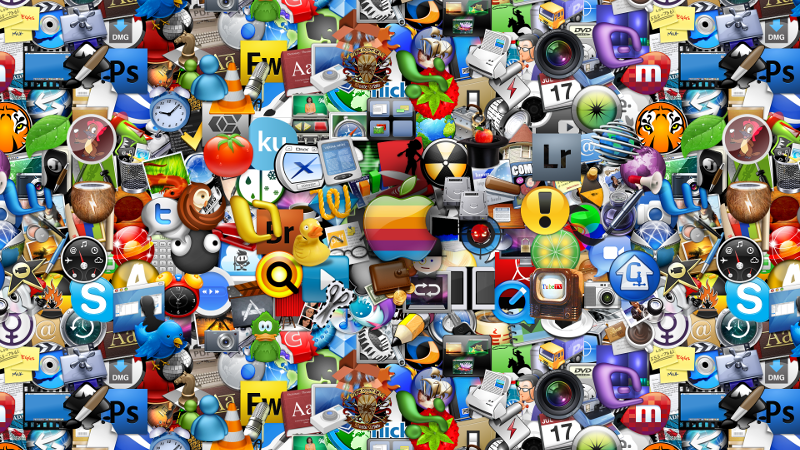
Analytics company App Annie claims that suggestions that the popularity of smartphone apps is on the wane are greatly exaggerated.
Some have predicted that the number of apps being developed and downloaded will level off as consumer appetite reaches saturation point.
Both Apple’s App Store and Google’s Play Store have 1.3 million apps being actively developed and downloaded, and App Annie’s vice president of communications Marcos Sanchez is confident this number will continue to grow.
"A load of other firms like Deloitte have said things like 'oh, no more apps are going to happen' -- what a load of shit. I’ve heard this all before. The number of apps can and will grow and swell".
Sanchez likens the growth of the app market to the initial stages of the worldwide web where rapid expansion has continued largely unchecked.
"The reality is that apps might not be quite as prolific as websites, but you can have niche apps that have 1,000 users and that’s fine because they make a couple of bucks off each user a month," he said.
"There will be folks who supplement their income with apps, a much smaller group of folks who can make a modest living and then there’ll be a sliver of the top 10 companies who are pulling down a billion dollars".
Instead of hoping that the smartphone app bubble bursts, Sanchez suggests that businesses develop apps of their own before they’re left behind.
"Mobile apps are no longer a luxury, but a necessity", he said. "Even for brands like Victoria’s Secret, which has two apps already, they’ve been very clever about it: not selling bras but extending their brand to the teens to 20s market".
Smartphones are increasingly the first port of call for consumers, meaning that the success or failure of a business may rest on the quality of its app.
Published under license from ITProPortal.com, a Net Communities Ltd Publication. All rights reserved.
-

Texting drivers are fully aware of the dangers
Publié: novembre 6, 2014, 2:19pm CET par Barclay Ballard

A new survey suggests that the vast majority of drivers text while behind the wheel, despite being fully aware of the dangers involved.
The research indicates that 98 percent of motorists who own a mobile phone and text regularly are aware of the risks, yet 75 percent still admit to texting while driving.
Over a quarter of the drivers who sent messages while driving believed that they "can easily do several things at once, even while driving".
The survey is part of an anti-texting and driving campaign run by telecoms firm AT&T, which requested the views of 1,004 US phone owners who drive almost every day and text at least once a day. AT&T has also expanded the availability of its DriveMode app to iPhone users to help drivers act responsibly. The app silences text message alerts and is automatically activated when a person is moving 15 miles per hour or faster.
A number of other reasons for texting on the move were given, including wanting to remain connected to friends or simply using the phone out of habit.
David Greenfield, founder of the Center for Internet and Technology Addiction, helped to design the survey and said that it showed a discrepancy between people's attitudes and behaviors.
He has referred to smartphones as "the world's smartest slot machines," because they can have a similar effect on the brain as gambling or drug use. Levels of dopamine, a chemical released by the brain associated with pleasure, can increase as a user anticipates a message, heightening the distraction.
Greenfield suggested that people should not use their phones at all whilst driving, and added that public education and stronger laws against texting and driving need to be implemented in order to change people's behavior.
Image Credit: Paul Oka
Published under license from ITProPortal.com, a Net Communities Ltd Publication. All rights reserved.
-

Rare Apple-1 sold by Steve Jobs is going to auction
Publié: novembre 5, 2014, 4:11pm CET par Barclay Ballard

A working Apple-1 computer, sold by Steve Jobs out of his parents' garage in 1976, is to be auctioned in December, with estimates suggesting it will sell for hundreds of thousands of dollars.
Earlier this week, Christie's claimed that the machine could reach more than half a million dollars, with an auction last month seeing another Apple-1 device sell for $905,000.
The Ricketts Apple-1, named after its original owner Charles Ricketts, is fully operational, having been tested by expert Corey Cohen last month.
The computer is accompanied by the canceled check from the original garage purchase on 27 July, 1976 made out to Mr Ricketts for $600. The device is the only known Apple-1 currently in existence that was sold directly from Jobs' family home.
Christie's Andrew McVinish said that the Apple-1 is a landmark device for technology fans.
"When you see a child playing with an iPad or iPhone, not too many people know that it all started with the Apple-1," he said. "So to be able to own a machine that started the digital revolution is a very powerful attraction".
The device is currently owned by Robert Luther, a collector who purchased the computer from a police auction in 2004.
The Apple-1 is extremely rare, with less than 50 original models believed to have survived and only six known to be in working condition. The computer was created by Apple founders Steve Jobs and Steve Wozniak in 1976 and priced at $666.66, reportedly due to Wozniak's preference for repeating digits.
The Apple-2 was introduced in April 1977 and included several expansion slots, a plastic case and an integrated keyboard. The original Apple-1 was discontinued in October the same year, meaning only an estimated 200 were ever produced.
Published under license from ITProPortal.com, a Net Communities Ltd Publication. All rights reserved.
-

Tinder CEO Sean Rad steps down as sexual harassment fallout continues
Publié: novembre 5, 2014, 9:11am CET par Barclay Ballard
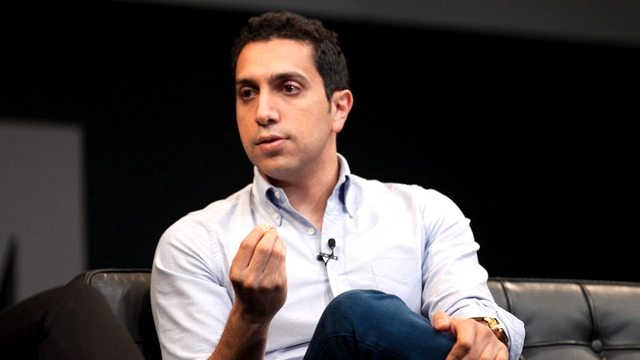
Tinder CEO Sean Rad will be stepping down from his position to become president of the dating app as it searches for a replacement.
According to Forbes, Rad will remain as CEO until the firm can find "an Eric Schmidt-like person" to succeed him.
Earlier this year, Tinder was rocked by a sexual harassment scandal, with Whitney Wolfe accusing co-founders Rad and Justin Mateen of subjecting her to sexist abuse. The suit was settled out-of-court in September, but insider sources suggest that the case is partly responsible for Rad's change of role.
According to reports, Rad was not ready to give up his position as CEO, considering the sexual harassment case to be dealt with.
"The board thought the best path was to bring in a CEO, thinking if we opened up the role it would attract better talent," he said. "I strongly disagreed".
However, it seems that Tinder's owner IAC has sought to make a clean break following the messy legal battle.
A company insider is reported to have said that "the lawsuit gave [IAC] an out," providing the opportunity to remove Rad.
The Tinder co-founder will remain heavily involved in the search for his replacement, and is keen to stress that the dating app remains on track.
Its first-ever revenue generator, Tinder Plus, is set to launch "imminently," as a premium service that can be used to add extra features to the otherwise free app. Tinder Plus will include a travel feature, enabling users to swipe through matches in other cities, as well as an "undo" option.
In the Forbes interview, Rad also goes on to detail a number of other ambitious projects that he has planned for the Tinder platform, but it remains to be seen if he will get the opportunity to implement them following his enforced departure as CEO.
Image Credit: JD Lasica
Published under license from ITProPortal.com, a Net Communities Ltd Publication. All rights reserved.
-

Wearable tech can improve communication between humans and dogs
Publié: novembre 4, 2014, 10:07am CET par Barclay Ballard

US scientists have developed a piece of wearable technology that could improve communication between dogs and humans.
The harness, which is fitted with sensors to monitor a dog's posture and vital signs, could also be used to help with training or to gather data.
Dr David Roberts, assistant professor of computer science at North Carolina State University, where the prototype was developed, said that by monitoring the dog's body language, owners could better understand their pets.
"We can determine when they're sitting, standing, running, even when they're out of sight," he told the BBC.
Information from heart-rate and body-temperature sensors can also reveal whether the dog is excited or stressed.
Sean Mealin, who also assisted the project's development as a PhD student at NC State, said that revealing the dog's emotional state could be particularly useful.
"This can help handlers identify and mitigate stress for the dogs," he said. "It's an important issue. Particularly because guide dogs are bred and trained not to display signs of stress in their behavior".
The wearable tech could also help reinforce training methods, as motors located on the harness are capable of nudging the dog to emphasize a spoken command or alert the animal if it is a long way from its owner.
In addition, the device could be supplemented with additional sensors such as microphones and cameras to help collect information from disaster areas.
Researchers at the university have confirmed that there is still work to be done to improve the device's sensors and reduce the size of the harness, but there is hope that the product could see use in animal shelters and hospitals soon.
Published under license from ITProPortal.com, a Net Communities Ltd Publication. All rights reserved.
-

Christian Bale is Steve Jobs in upcoming biopic
Publié: octobre 24, 2014, 8:39am CEST par Barclay Ballard

Christian Bale has been confirmed to play Apple co-founder Steve Jobs in an upcoming feature film based on Walter Isaacson's biography of the late technology icon.
Oscar winning screenwriter Aaron Sorkin revealed the news during a Bloomberg television interview with Emily Chang yesterday.
Sorkin added that Bale did not have to audition, being the project's number one candidate for the role.
"We needed the best actor on board in a certain age range and that's Chris Bale," Sorkin said. "He didn't have to audition. Well, there was a meeting".
Bale, who won the Academy Award for Best Supporting Actor for his work in "The Fighter," has long been rumored to be involved. Back in March, David Fincher, who is no longer attached to the film, indicated the main role should go to Bale, while earlier this month, unconfirmed reports suggested that Bale was in talks to join the project under Slumdog Millionaire director Danny Boyle.
Sorkin also implied that the role would be a challenging one, but had every confidence that Bale would succeed.
"He has more words to say in this movie than most people have in three movies combined," Sorkin said. "There isn't a scene or a frame that he's not in. So it's an extremely difficult part and he is gonna crush it".
Principle shooting for the film should begin within the next few months, but there is no definite timetable in place yet.
Sorkin and the rest of the film's crew will be hoping that the project fares better than last year's "Jobs," which cast Ashton Kutcher in the title role and received largely negative reviews.
Aaron Sorkin's interview with Bloomberg's Emily Chang will be aired in full in an upcoming edition of "Studio 1.0".
Photo credit: cinemafestival/Shutterstock
Published under license from ITProPortal.com, a Net Communities Ltd Publication. All rights reserved.
-

Oculus Rift owners will be able to go to the moon
Publié: octobre 23, 2014, 9:19am CEST par Barclay Ballard

US scientists have developed a robot that will allow Oculus Rift owners to see the surface of the Moon as if they were really there.
Researchers at Carnegie Mellon University have developed the project to compete for the Google Lunar XPrize, which is offering $30 million to a team that can send video back from the Moon.
Carnegie Mellon has collaborated with Astrobotic Technology, an off-shoot of the university, to secure a deal with SpaceX, Elon Musk's private space company, to launch the robot in 2016 using its Falcon 9 rocket.
Daniel Shafrir, the project's team leader, said that their idea was based on a simple premise.
"We weren't just going to go to the Moon. We are going to bring the Moon back," he said.
The telepresence robot, which has been named Andy after university founder Andrew Carnegie, is controlled via an Oculus Rift headset, with the movements of the operator's head being tracked and sent to Andy's camera to mimic the user.
"Imagine the feeling of looking out and seeing rocks and craters billions of years old. Turn your head to the right and you see the dark expanse of space. Turn your head to the left and you see home, Earth," Mr Shafrir told the BBC.
The team leader added that the project became a "day and night hackathon," as scientist tackled coding challenges and the fact that the Oculus software can only receive one live video stream at a time.
There's no guarantee that the Oculus-driven robot will secure Google's prize, with 18 other teams competing, but that hasn't dulled the ambition of the Carnegie Mellon project.
Mr Shafrir said the goal is to ultimately have "hundreds of robots on the Moon".
"With an Oculus headset in every classroom, allowing kids to experience what, to this date, has only been experienced by 12 human beings".
Published under license from ITProPortal.com, a Net Communities Ltd Publication. All rights reserved.
-

Staples is the latest US store to suffer a credit card data breach
Publié: octobre 22, 2014, 11:45am CEST par Barclay Ballard

The office supply store Staples has announced that it is investigating a possible breach of payment card data, making it the latest US store to be targeted.
The retailer has notified the relevant authorities, but has not disclosed details of the data breach publicly.
In a statement issued earlier in the week, company spokesman Mark Cautela confirmed the news.
"Staples is in the process of investigating a potential issue involving credit card data and has contacted law enforcement," he said.
The vulnerability was discovered following a blog post by security reporter Brian Krebs which highlighted a pattern of payment card fraud identified by several banks. It suggested that multiple Staples stores in the north-east of the country had been the victim of a data breach.
"We take the protection of customer information very seriously, and are working to resolve the situation," Cautela told Reuters. "If Staples discovers an issue, it is important to note that customers are not responsible for any fraudulent activity on their credit cards that is reported on a timely basis".
Other US stores have also been the victims of cyber attacks recently, with customer payment cards stolen from Kmart stores earlier this month. Restaurant chain Dairy Queen also confirmed that card information may have been compromised for its customers across 46 US states.
With in-store transactions increasingly moving away from cash towards card and electronic payments, they could prove a lucrative breeding ground for digital thieves. Apple Pay, which launched earlier this week, will be hoping that its security systems stand firm against this increased scrutiny.
Image Credit: Mike Mozart
Published under license from ITProPortal.com, a Net Communities Ltd Publication. All rights reserved.
-

Xiaomi price drop suggests new flagship devices are on their way
Publié: octobre 22, 2014, 9:14am CEST par Barclay Ballard
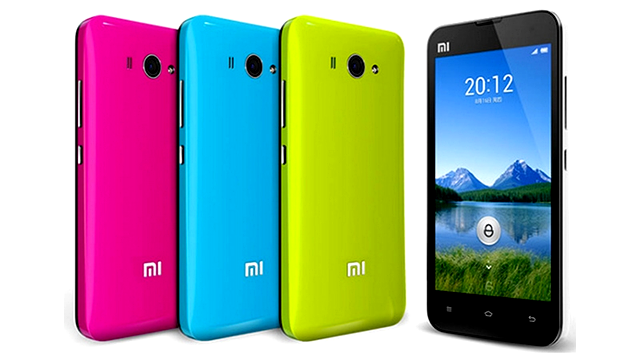
Chinese smartphone manufacturer Xiaomi looks set to implement a price reduction drive across a number of its devices, increasing speculation that new flagship models will be released in the not-too-distant future.
According to a report by GizChina, citing Xiaomi's e-commerce webpage Tmall, several of the firm's products, including its Mi 4 smartphone and Mi Pad tablet have received new price tags.
Currently, the Xiaomi Mi 4 is priced at 1,999 Yuan ($327), but the Tmall listing suggests that this will drop to 1,799 Yuan ($294). However, the new prices are yet to be made official and are hidden within the web portal.
It is unclear what the price drop means for the Indian market, where the Mi 4 is not scheduled for release until early 2015. It is expected that the reduction will be passed on to consumers in the Asian country, meaning a retail price of around 18,000 rupees ($294).
Accompanying the news of Xiaomi's price reduction is a report suggesting the firm will update its existing smartphone range to Google's Android One initiative. Android One is a standard created by the search engine firm, providing software close to stock Android and security updates from Google itself.
A number of Indian smartphone brands including Micromax, Spice and Karbonn offer budget smartphones under the Android One banner. Prices for these handsets start from as little as 6,300 rupees ($102), almost matching the price tag of the Xiaomi Redmi 1S smartphone which launched in India last month for 6,000 rupees ($98).
Published under license from ITProPortal.com, a Net Communities Ltd Publication. All rights reserved.
-

Vatican Library’s digital archives now available online
Publié: octobre 22, 2014, 4:16am CEST par Barclay Ballard

The Vatican Apostolic Library has announced that more than 4,000 ancient manuscripts will now be available online as part of a digital archive.
Global IT service provider NTT DATA has developed the service, which displays high definition digital reproductions of the texts at the library's website.
A special viewer built by the firm's digital archive solution technology, AMLAD, enables manuscripts to be examined across a variety of devices, including tablets.
The four-year project was initially launched in March of this year, with NTT DATA tasked with establishing the necessary infrastructure for the long-term storage, safekeeping and viewing of digital specimens. The company also hopes to provide an efficient search function for the library's digital artefacts by the end of the year.
Toshio Iwamoto, president and CEO of NTT, said that the firm was extremely excited to bring the collection to a wider audience.
"We will continue to leverage our IT solution technologies to help advance research in diverse academic disciplines and satisfy people's curiosity about these irreplaceable manuscripts", he said.
Prefect of the Vatican Apostolic Library, Monsignor Cesare Pasini added that the Vatican gladly adopts the use of innovative technologies in order to make "these treasures of humankind more widely known, in a profound spirit of universality".
The digital archives can also be accessed via a portal site managed by Digita Vaticana, a foundation raising funds for the library's preservation projects.
Formally established in 1475, the Vatican Library is one of the oldest in the world and currently contains 75,000 codices, 1.1 million printed books and an estimated 8,500 incunabula.
The Vatican Secret Archives were separated from the library at the start of the 17th century and are believed to contain an additional 150,000 items.
Published under license from ITProPortal.com, a Net Communities Ltd Publication. All rights reserved.
Image Credit: cesc_assawin / Shutterstock
-

Kazam's Tornado 348 is the world's thinnest smartphone
Publié: octobre 18, 2014, 12:52am CEST par Barclay Ballard

British phone manufacturer Kazam is launching its new flagship Android 4.4 KitKat smartphone, which will also become the world's thinnest handset.
At just 5.15mm thin, the Kazam Tornado 348 technically already holds the title, but will have to wait to receive the Guinness World Record, currently held by the Gionee Elife S5.5.
Despite only being founded last year, Kazam has already assembled an impressive, if small, selection of affordable Android and Windows Phone-based handsets. The Tornado largely follows in the footsteps of the firm's other devices, such as the Trooper X4.5, but does up the ante when it comes to design features.
Aside from its slender frame, the Tornado boasts an aluminum covering around the side of the phone, while the front and back are coated in Gorilla Glass. The handset also features a 4.8-inch HD display along with a 5-megapixel front-facing camera and an 8-megapixel one on the back.
The phone's internal specs are also pretty impressive, with a 1.7GHz octa-core MediaTek processor delivering 1GB of RAM, accompanied by 32GB of storage and a 2050mAh battery.
Kazam is also providing a deal to entice clumsier smartphone users to purchase the flagship device. The company is offering a two-year warranty on the phone and if users break the glass on the front or back of the handset in the first year of ownership, it'll be repaired free-of-charge.
Consumers looking for an alternative to the latest Samsung or Apple release may want to check out the Kazam Tornado 348 when it receives its European launch sometime around mid-November, for an estimated £249.
Published under license from ITProPortal.com, a Net Communities Ltd Publication. All rights reserved.
-

Apple is the top target for phishing attacks
Publié: octobre 9, 2014, 11:00am CEST par Barclay Ballard
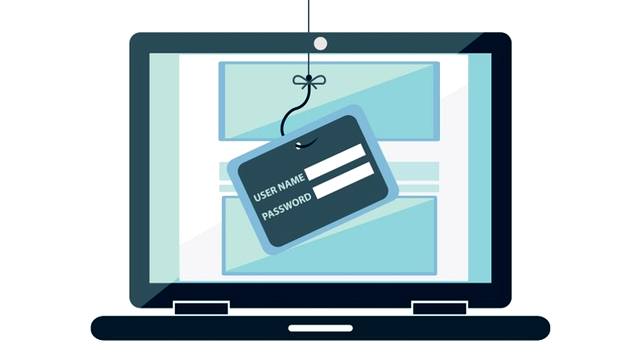
Apple is now the most-phished brand according to the latest report from the Anti-Phishing Work Group (APWG).
Based on data from the first half of 2014, 17.7 percent of all phishing attacks were aimed at the Cupertino-based firm, with PayPal in second and Chinese shopping site Taobao claiming third place.
In an interview with TechNewsWorld, the APWG's Rod Rasmussen claimed that the ability to access various information streams with an Apple ID is the reason for the increased number of attacks.
"They can be used to lock a user out of their phone and ransom it back to them for money," Rasmussen said. "There are lots of different attack vectors, which adds up to why Apple is being phished as heavily as it is".
Rasmussen also speculated that the recent nude celebrity photo leaks were probably the result of hacking Apple IDs.
The report also indicates that a wider variety of companies are now being targeted by phishing attacks. APWG found that 756 institutions had been targeted by phishers in the first half of the year, with almost half of those not experiencing phishing in the previous six months.
It is likely that phishers are selecting new targets in the hope of finding vulnerable new user bases that are not ready to defend themselves.
It can require multiple defensive strategies in order to prevent phishing attacks, with the combination of behavioral analysis and big data proving particularly effective.
Idan Tendler, CEO of Fortscale said that intruders often reveal themselves through their malicious behavior. "The only way to identify these suspicious users is by profiling their behavior, by analyzing system logs that document their behavior," he said.
By creating normal behavior profiles, companies can more easily identify intruders within their network and ultimately reduce the number of successful phishing attacks.
Published under license from ITProPortal.com, a Net Communities Ltd Publication. All rights reserved.
-

The Internet of Things will kill someone before 2015
Publié: octobre 7, 2014, 8:37am CEST par Barclay Ballard

The world's first death caused by the Internet of Things (IoT) is expected to occur before the end of the year, according to a report by The European Police Office (Europol).
The greatest risk is likely to come from hackers targeting crucial health and safety equipment as more and more devices become susceptible to remote hacking.
As an increasing number of devices become connected, hackers may begin selecting targets based on monetary gain or inflicting personal harm. According to Russia Today, Internet connected medical devices are predicted to be the source of the first IoT murder, with heart implants, insulin pumps and numerous other devices susceptible.
Outside of medical devices, web connected homes and cars could also prove a threat to the user's personal safety if hacked. Europol has claimed that such an attack is becoming inevitable, with reports of IoT vulnerabilities already surfacing.
The Independent claims that as many as 300 monitors used to analyze high-risk pregnancies in the US have been slowed down due to malware. Former US vice-president Dick Cheney also disabled the wireless connectivity of his implanted defibrillator as a result of health concerns.
While a relatively small part of the technology industry, the Internet of Things market is expected to experience massive growth over the next few years. There are currently 10 billion Internet-enabled devices in existence, with smart home appliances such as the Nest thermostat currently among the most popular.
As the number of connected devices grows, the potential for crime also increases. Last week, Europol held a conference investigating the key policies that European police agencies could implement to combat this new form of cybercrime.
Photo Credit: Ipatov/Shutterstock
Published under license from ITProPortal.com, a Net Communities Ltd Publication. All rights reserved.
-

Touch ID on iPhone 6: Still hackable
Publié: septembre 29, 2014, 1:45pm CEST par Barclay Ballard

Apple's recently released iPhone 6 is susceptible to the same fingerprint forging attack as the iPhone 5s, according to the latest security research.
Mark Rogers, principal security researcher for mobile security firm Lookout, used techniques which are well-known to police officials and prototypers to access the device.
The process involves lifting latent prints from the iPhone before creating a mould using a custom circuit-board kit. Then using glue, sometimes mixed with glycerol, Rogers was able to create a replica print that allowed him to trick the Touch ID sensor.
However, his experiments did suggest that Apple had improved the sensor, as it rejected fewer legitimate prints and slightly more fake ones than the iPhone 5s version, with Rogers suggesting that it wasn't easy to trick the iPhone 6's security systems.
"The process with both of them is exactly the same", he said. "I would not call it a walk in the park, because it took me roughly eight hours to do. Yet someone who is not doing this for research could probably complete the process in two or three hours."
The security flaw highlights the major weakness of Touch ID, namely that the information required to access the phone, the user's fingerprints, are left all over the device. With that being said, the fact that Apple limits the number of attempts to five means that that the feature is relatively secure.
"I was aided by the fact that I had unlimited attempts, and it took quite a few attempts to get any usable print", Rogers said. "It is not something that I would expect a street criminal to use".
However, with the company set to push its own payment service, Apple Pay, stealing an iPhone may become a far more lucrative proposition for thieves, which could cause more users to scrutinize the level of protection offered by Touch ID.
"We are talking about putting a lot of financial transactions though the iPhone, and that money will incentivize criminals to refine the process, and that could open up a scenario where there is risk to the consumers", Rogers added.
Published under license from ITProPortal.com, a Net Communities Ltd Publication. All rights reserved.
-

IBM and Bancroft team up for a specialized cloud-based education program
Publié: septembre 27, 2014, 2:19pm CEST par Barclay Ballard

IBM has announced a partnership with Bancroft, a provider of specialized services for individuals with intellectual and developmental disabilities, which will supply a cloud-based educational program.
The collaboration will enable staff and students to access more than 300 educational and clinical applications securely via an iPad.
The program will continue Bancroft's recent iPad project which provides instructional and assistive technology apps to its special education team. The program helps educators engage with students in basic subjects like math and English, while also aiding disabled pupils overcome physical challenges.
Bancroft is utilizing IBM Maas360, a mobile management and security offering that is part of IBM's MobileFirst portfolio, in order to manage app updates for the iPads. The cloud-based infrastructure also grants teachers and therapists greater flexibility by allowing them the option of updating and customizing the curriculum being offered.
Beth Greer, a special education teacher at Bancroft, stressed the importance of her company's partnership with IBM.
"iPads and apps are truly revolutionary tools for the Bancroft community," she said. "Given the number of apps we use, successful app management is essential to our program's success. We simply could not manage and securely deploy our iPad program without IBM".
IBM Maas360 also gives staff a greater sense of security, allowing them to remotely lock and wipe data if a device is lost or compromised.
Michael King, vice president of IBM's global education industry, believes that his firm's cloud platform allows Bancroft's staff to focus on education rather than software upgrades and IT issues.
"Bancroft's use of cloud-based mobile technology is enabling growth in individuals who have been challenged to speak or write before, which is truly transformational," he said.
Published under license from ITProPortal.com, a Net Communities Ltd Publication. All rights reserved.
-

Ordnance Survey maps the UK in Minecraft
Publié: septembre 25, 2014, 9:07am CEST par Barclay Ballard

A map of the UK made entirely of Minecraft blocks has had an upgrade to include local roads, railways even people's houses.
Ordnance Survey, the creators of the map, has recreated 224,000 sq. km of Britain using 83 billion blocks, an increase on the 22 billion used for the original map. It means that each block now represents 25m of real-world Britain.
The organization said that an interactive version of the map would be available from its website to enable users to locate their own homes.
Since its release in 2011, Minecraft has become a hugely popular video game, where users create worlds built of blocks that can be mined for raw materials.
The original Minecraft UK map was created by intern Joseph Braybrook over two weeks in September 2013. Mr Braybrook has now updated the map after joining the Ordnance Survey through a graduate recruitment scheme.
Mr Braybrook said that increasing the scale of the map had made it more detailed and given it a "more expansive appearance that is closer to real life".
Ordnance Survey announced that the one-gigabyte map would be made available for download free-of-charge for users to play on. The original version has already been downloaded more than 100,000 times.
The increased resolution of the new map should allow Minecraft players to do much more than was possible with the first map.
"I've attempted to re-create Great Britain to be more realistic, while maintaining the gameplay elements people love from the game," Mr Braybrook told the BBC.
It is thought that the map is the biggest Minecraft map in existence that uses real-world geographical data.
Published under license from ITProPortal.com, a Net Communities Ltd Publication. All rights reserved.
-

Microsoft lights up Seattle music festival with experimental dance Cube
Publié: septembre 25, 2014, 8:52am CEST par Barclay Ballard
Microsoft has created a four-foot high interactive art installation for Seattle's Decibel music and arts festival.
The Microsoft Cube is essentially a projection system that uses five PCs, five projectors and four Kinect sensors to create a dance party that invites onlookers to become part of the art display.
The installation will be visible for the duration of the festival, which runs until 28 September, located in the Seattle Center between the Trimpin sculpture and Sky Church.
Participants are invited to stand in front of the structure and the Cube will react, tracing the movements of those around it. The Kinect sensors can register up to three people on each side, and the Cube also acts as a portal, allowing users to be connected to those on the other side.
Michael Megalli, senior director of brand strategy at Microsoft, described the Cube as residing in the "intersection of art and technology" and claimed it reflected a more creative culture at the firm.
Microsoft CEO Satya Nadella has encouraged employees to be more experimental with their projects, taking them outside their usual remit. The Cube itself was developed over many months as various internal teams brought their own expertise and passion to the project.
The company also collaborated with WorldStage, an event technology firm, in order to finalize the structure's screens, which are made from projection material and clear acrylic.
Microsoft has yet to confirm what, if anything, the Cube will be used for in the future, but it seems that the company has plenty of ideas it is considering.
"It could be a stage for performance, a blackboard for education, a display case for museum artefacts," explains Megalli. "It could be a communications device to bring people together in unexpected ways".
Published under license from ITProPortal.com, a Net Communities Ltd Publication. All rights reserved.
-

Immersion software adds rumbles and shakes to phone videos
Publié: septembre 25, 2014, 1:40am CEST par Barclay Ballard

Immersion, a company that specializes in adding an extra dimension to touch screen displays, has created new software to add a layer of feeling to smartphone videos.
With mobile devices becoming the primary video platform for many users, the company hopes to solve the problem of providing excitement on a small screen.
The California-based firm has developed TouchSense Engage to add rumbles, shakes and taps to TV shows and video adverts playing on smartphones and tablets. The technology could make sports highlights or action movie explosions more realistic.
The software is currently being employed in ads for the Homeland series on Showtime and Slate magazine's mobile apps. In both instances, the Immersion effects are only available to users with Android smartphones.
Jason Patton, Immersion's content and media vice president, said that the enhancement to mobile video was the natural next step for the industry.
"I've been on the cutting edge of video on demand, high definition, bringing video to the Internet, and I view this as the next progression, which is bringing haptics -- the sense of touch -- to the video entertainment experience".
TouchSense Engage works by using a phone's internal motor to create different kinds of taps, often referred to as haptics, as the user touches the screen. The software is already employed by firms like LG, Samsung and Sony to give users the sense of playing a real keyboard or strumming a guitar.
Haptics are expected to make more of an impact in the mobile industry this year with the Apple Watch already confirmed to use the effect to send notifications. They also have the added benefit of being less of a disturbance to others when compared with audio effects.
Patton also confirmed that his company wants greater involvement with movie studios and advertisers to ensure that the added effects are not an afterthought.
"Our entry into the space has been advertising," he said. "But our long-term play is not only advertising. We're looking at short-form video, long-form video, user-generated, sports content. There's a whole host of applications".
Published under license from ITProPortal.com, a Net Communities Ltd Publication. All rights reserved.
-

MediaTek Labs looking to boost the Internet of Things
Publié: septembre 23, 2014, 8:48pm CEST par Barclay Ballard
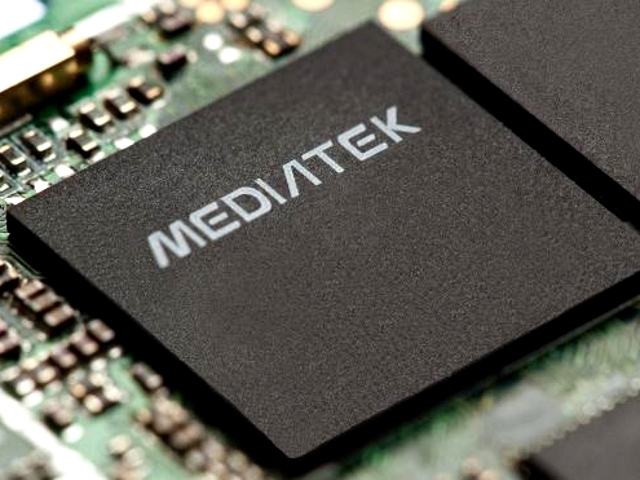
MediaTek is hoping to help kickstart the global wearable and Internet of Things (IoT) market through its new MediaTek Labs initiative.
The new program aims to help developers of any background or skill level to create devices and apps, by providing software and hardware development kits (SDKs/HDKs), technical documentation, as well as technical and business support.
Marc Naddell, vice president of MediaTek Labs, believes that the project could drive the next wave of consumer gadgets by empowering developers from varying backgrounds to create wearable and IoT devices.
"With the launch of MediaTek Labs we're opening up a new world of possibilities for everyone -- from hobbyists and students through to professional developers and designers -- to unleash their creativity and innovation".
As part of the developer program, MediaTek will also be launching the LinkIt Development Platform, which is based on the MediaTek Aster (MT2502) chipset. The LinkIt platform makes creating prototype devices more affordable by providing MediaTek's reference design development model.
Alongside the company's Aster chipset, the platform includes the LinkIt OS, as well as HDKs such as LinkIt One, and SDKs that should allow developers to get the most out of their prototype devices.
The MediaTek Labs website will also provide additional support services, including comprehensive FAQs and discussion forums alongside free technical support. A Solutions Catalog will also be offered, where developers can share information on their devices and apps.
Eric Pan, founder and CEO of Seeed Studio, co-designers of the project's initial hardware development kit, said that he hoped developers would see the platform as an alternative route into the Internet of Things market.
"While makers still use their traditional industrial components for new connected IoT devices, with the LinkIt ONE hardware kit as part of MediaTek LinkIt Developer Platform, we're excited to help Makers bring prototypes to market faster and more easily".
Published under license from ITProPortal.com, a Net Communities Ltd Publication. All rights reserved.
-

Amazon Kindle's new old bug could expose your account credentials
Publié: septembre 17, 2014, 3:42pm CEST par Barclay Ballard

A security flaw in Amazon's Kindle software could allow hackers to access your Amazon account details.
Benjamin Daniel Musser, a security researcher, discovered the issue, which arises when downloading e-books from websites other than Amazon itself.
The "Manage Your Kindle" page contains a security hole that can be exploited by attackers hiding malicious lines of code within e-books. Once the Kindle Library has been loaded with a corrupted e-book (usually with a subject containing: <script src="https://www.example.org/script.js"), the hacker can access the user's cookies and, hence, their account credentials.
Detailing the problem in a blog post, Musser discovered the issue back in October 2013 and before reporting it to Amazon. The web giant did correct the security flaw initially, but it has since resurfaced following a "Manage Your Kindle" update. However, if users only download from trusted websites or Amazon itself, then the issue should be avoidable.
That being said, another Amazon-owned service, Audible, has had a security issue of its own recently. The audiobook service, which was acquired by Amazon in 2008, apparently allowed customers to use fake email addresses and credit card numbers in order to download files.
The service only checks payment details after a book has been downloaded, allowing users to renew their fake membership to receive more credits.
A spokesperson for the firm has moved to downplay the illegal transactions, claiming that purchases made with a fake card were "closed quickly" and that the company takes credit card fraud "very seriously".
Published under license from ITProPortal.com, a Net Communities Ltd Publication. All rights reserved.
-

3 million comments prove people care about net neutrality
Publié: septembre 17, 2014, 1:47pm CEST par Barclay Ballard

More than three million comments, from consumers, businesses and other organizations, have been submitted in response to the controversial US debate over net neutrality.
The controversy has arisen over whether Internet service providers, such as Comcast and Verizon, should be allowed to introduce fast lanes, delivering paid-for traffic to users more quickly.
The debate, which closed on 15 September, saw the US regulator, the Federal Communications Commission (FCC), clash with net advocate groups and content providers. The FCC has had to reconsider its rules on net neutrality, following a January court case that ruled that ISPs could charge for bandwidth-heavy services like Netflix.
The net watchdog has since agreed to ISPs charging for different levels of online access, dependent on them meeting a new standard of "commercial reasonableness," judged on a case-by-case basis.
While many online groups feel the Internet should be reclassified as a utility due to its importance, ISPs argue that it cannot meet future bandwidth demands without making money from existing services.
Matthew Howett, an analyst from independent consultancy firm Ovum, believes the debate will be centred on what can be considered "commercially reasonable".
"The possibility of 'fast lanes' remains a distinct possibility... but on the assumption that a 'basic' lane remains unaffected in an attempt to avoid a situation of 'haves' and 'have-nots'".
Several major Internet brands including Netflix and Twitter took part in an online slowdown protest last week, with many brands also sending the FCC written disapproval over the changes.
The FCC will review all submissions provided during the debate before deciding on any changes, which are expected to be implemented before the end of 2014.
Published under license from ITProPortal.com, a Net Communities Ltd Publication. All rights reserved.
-

How Transport for London has embraced new technology over the years
Publié: septembre 17, 2014, 9:40am CEST par Barclay Ballard

Transport for London (TfL) has announced that a new contactless payment system is in operation across all London transport services, allowing customers to pay their fare with bank cards, smartphones, or even wearable technology.
While some commuters may be concerned that the news marks the beginning of the end for the Oyster card, transport in the capital has never stood still when it comes to technological improvements.
The world's first underground railway
London Underground, the mode of transport perhaps most associated with these enhancements, celebrated its 150th birthday last year, and lays claim to being the world's first underground railway.
Starting off as a single route between Paddington and Farringdon Street, the "Tube" now covers 270 stations and 11 lines. In 1900, the Central Line was opened and charged a flat rate of two pence between any two stations, giving present-day fare payers another thing to get angry about.
In 1908, the Underground's first electric ticket machine was introduced, suggesting that the recent outcry over the closure of manned ticket offices has been a long time coming.
Technical innovations were frequent during the tube's early years, with Earl's Court station introducing the first escalator in 1911. Presumably, the station also witnessed the first commuter to lash out in anger at those not standing on the right-hand side.
Other notable enhancements that make the daily commute a bit more bearable include the introduction of automatic doors in 1929 and dot matrix destination indicators in 1983. Perhaps the most overdue addition to the Tube system came in the form of the first air-conditioned, walk through train, which was only launched on the Metropolitan line in 2010.
London's iconic red buses go green
The city's transport innovations, however, have not been restricted to the Underground.
Green technology has been embraced by London's bus network, following the introduction of hybrid buses in 2006. The buses, which reduce carbon dioxide emissions by approximately 40 percent, are also set to increase in number from the 800 or so currently in service.
Mayor of London, Boris Johnson, has also introduced wireless charging on the hybrid buses, alongside the proposal for all single decker vehicles to produce zero carbon emissions.
Articulated or "bendy" buses, which saw use between 2001 and 2011, were perhaps less successful. Aside from widespread rumors that they could burst into flames at any minutes, which lead to them being nicknamed "chariots of fire," they did pose a genuine risk to London's commuters. During the period when they made up five percent of the capital's fleet, they accounted for an estimated 20 percent of all bus-related deaths, leading to their eventual replacement.
There has also been a push to get more of the capital's commuters connected, with recent Wi-Fi trials across two London bus routes adding to the 144 Underground stations already enjoying online connectivity.
Even crossing the Thames has seen its share of innovation over recent years. The Emirates Air Line (or Thames cable car) opened in 2012 and offers spectacular views of the city, for those willing to brave the 90 meter ascent.
End of the line for Oyster?
However, the biggest technological change, in recent memory at least, to the capital's transport system may now be on the way out.
The introduction of the Oyster card in 2003, across the London transport system, has had a major impact on the way people travel in the capital. Approximately 80 percent of all journeys are now carried out via Oyster and despite some controversies over unwarranted penalties and minor security issues, the smartcard payment system has largely been a success.
If, as expected, the introduction of a new contactless payment system means the death of the Oyster card, it will simply be the next stage of development for London's transport system.
Getting around in the capital has come a long way since Isambard Kingdom Brunel and his father built the Thames Tunnel back in 1843, and with technology developing at rapid rate, who knows what route London transport is likely to take next?
Published under license from ITProPortal.com, a Net Communities Ltd Publication. All rights reserved.
-

Ant-sized chip could pave the way for the 'next wave of wireless devices'
Publié: septembre 16, 2014, 6:04pm CEST par Barclay Ballard

Engineers at Stanford University have developed a radio the size of ant that they claim could make a big impact on the fledgling Internet of Things (IoT) market.
The computer chip, which is just a few millimeters across, is powered by harvesting radio signals and so requires no external power.
Small enough to fit onto appliances ranging from a light bulb to a refrigerator, the radio can send and receive transmissions that will allow separate devices to communicate with each other wirelessly. The developers hope that the chip will find a variety of uses as manufacturers begin to embrace the Internet of Things, in which everyday objects are given network connectivity.
Amin Arbabian, assistant professor of electrical engineering at Stanford believes that the radio could pave the way for the "next wave of wireless devices".
While there are products already in development that also offer a similar level of connectivity, such as Apple's HomeKit and Google's Nest thermostat, the Stanford radio does have some advantages over its better-known competitors.
At just a few millimeters in size, the production cost for each chip is minimal, reaching no more than few cents. As a result, it is very easy to scale the product, incorporating thousands of radios in a very dense infrastructure.
The device, which was co-developed by the University of California, also does not require a battery, which means that, essentially, the radio does not have a life-span. As long as transmissions are coming in, the chip will continue to function.
The Internet of Things sector is predicted to experience massive growth in the next few years, but is still relatively unknown. If Stanford's low-cost, battery-free radio can get a head-start on its rivals, it could be a major player in the development of the industry.
Published under license from ITProPortal.com, a Net Communities Ltd Publication. All rights reserved.
-

Google transforms old oil fields in to a $145m solar project
Publié: septembre 16, 2014, 10:49am CEST par Barclay Ballard

Google has announced it is investing $145 million into its latest renewable energy project.
The search engine giant is helping to finance the 82 megawatt solar power plan, which will be the company's 17th renewable energy project, alongside SunEdison.
The partnership means that Google will have supported clean energy through spending in excess of $1.5 billion across three continents for a capacity of more than 2.5 gigawatts.
Nick Coons, Google's renewable energy principle, explained why the project would focus on the Regulus solar development in Kern County, California.
"Over the years, this particular site in California has gone from 30 oil wells to five as it was exhausted of profitable fossil fuel reserves," he wrote in a blog post. "The land sat for some time and today we're ready to spiff things up".
In 2013, Google's various long-term renewable energy agreements generated approximately 870,000 megawatt-hours, equating to 23 percent of its total consumption needs. Added to those contracts, the green energy it sources from the grid and its own projects, Google claims to source roughly 35 percent of its electricity from renewable sources.
While the company's five largest power purchase agreements have focused on wind power, the Regulus project demonstrates that Google is not neglecting other avenues of renewable energy. The deal will ultimately form SunEdison's largest solar project in North America and span 737 acres, including more than 248,000 monocrystalline photovoltaic modules.
The system is actually owned by TerraForm Power, which will sell the energy output to SunEdison through a 20-year power purchase agreement. Additional financing has also been provided by the Prudential Capital Group and Santander Bank.
Published under license from ITProPortal.com, a Net Communities Ltd Publication. All rights reserved.
-

Western Digital to launch 10TB hard drive
Publié: septembre 12, 2014, 12:02pm CEST par Barclay Ballard
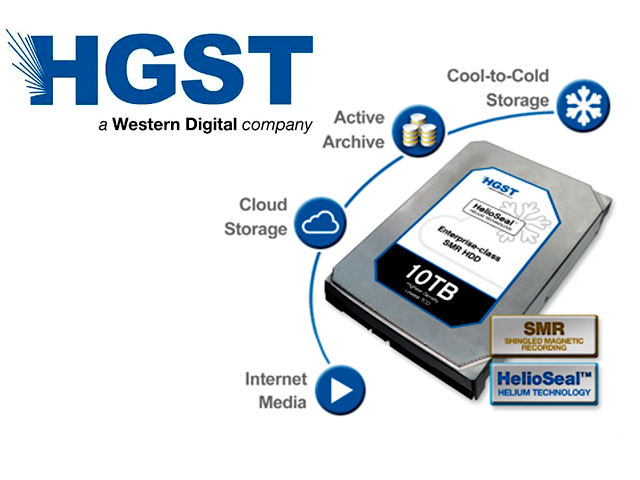
Western Digital's HGST unit has announced plans to launch the first 10 terabyte hard drive, the largest capacity drive released so far.
The firm also announced it will be shipping its 8TB Ultrastar He8 drive shortly, which uses pressurized helium to fit two extra disks into the drive, but still relies on perpendicular magnetic recording (PMR) technology.
The planned 10TB drive, however, will instead utilize shingled magnetic recording (SMR), a technology that overlaps data tracks like roof shingles.
While the new drive is being sampled by select customers, it is unlikely that consumers will be seeing 10TB hard drives for their desktop or laptop PCs any time soon. SMR drives are generally better suited to continuous writing and erasing date, such as log files, a constant stream of images, or handling big data stores like Hadoop, rather than more traditional applications.
That being said, the new 10TB drive still pushes the potential density of storage media up to 3 trillion bits per square inch of disk platter, up from the 200 gigabits per inch capable with PMR technology. This means that the increased storage capacity could come in use for customers who have to keep large quantities of "cold" data, such as the millions of images posted by Facebook users each day.
HGST confirmed that the 10TB drive would be compatible with cloud and cold storage options, but did not confirm a release date for the product.
Published under license from ITProPortal.com, a Net Communities Ltd Publication. All rights reserved.
-

HP offers UK SMEs a way to prove security credentials more affordably
Publié: septembre 9, 2014, 3:22pm CEST par Barclay Ballard

HP has strengthened its public sector supply chain by enabling over 600 small/medium enterprises (SMEs) to prove their security credentials with the new Information Assurance for SMEs (IASME) security standard.
The IASME should allow SMEs to compete for public sector contracts by offering a more affordable route to compliance with ISO/IEC 27001:2013, the information security standard which was published last year.
Stuart Bladen, vice president and general manager of HP's UK Public Sector, said that his firm had a major role to play in enabling companies to gain security accreditation.
"As well as ensuring that the IASME standard can be readily implemented in our supply chain, this agreement opens up a market valued at up to £250,000 to the IASME Consortium which will ripple through to a variety of other Worcestershire-based SMEs. It demonstrates the value that SMES can bring to the government, larger IT suppliers and the local business community," he said.
IASME is available either through self-assessment or assessment by an independent auditor, and includes certification against the UK government's Cyber Essentials scheme and cyber liability insurance for UK companies with a turnover of less than £20 million. The standard is also regularly revised to keep up with changes in the information risk ecosystem.
Chief technology officer of HP Enterprise Security Services, Andrzej Kawalec, said that UK SMEs are continuing to spend more and more in order to respond to security breaches.
"At HP, we recognise that our cyber security consulting services must be aligned to the need of organisations of all sizes," he said.
Published under license from ITProPortal.com, a Net Communities Ltd Publication. All rights reserved.
-

IBM and Intel offer new security features to improve confidence in the cloud
Publié: septembre 9, 2014, 8:52am CEST par Barclay Ballard
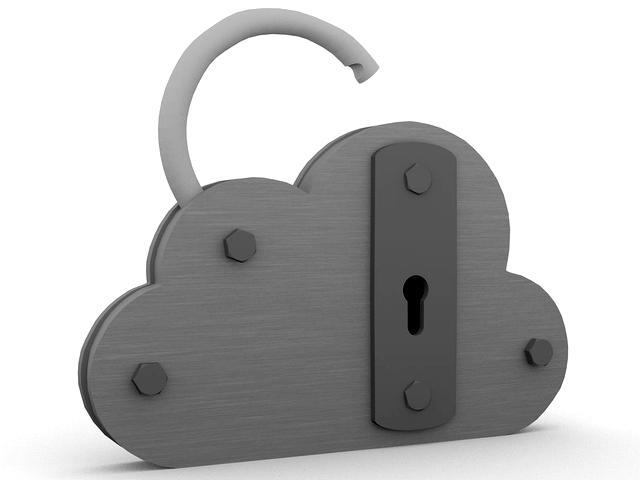
IBM has announced that SoftLayer will be the first cloud platform to offer customers bare metal service that provides monitoring and security down to the microchip level.
Working in combination with Intel's Trusted Execution Technology (TXT), the security platform will help businesses determine if a workload from a known location on SoftLayer infrastructure is running on trusted hardware.
It is hoped that the new security capabilities will help organizations develop solutions around areas such as governance, compliance, audit, application security, privacy, identity and access management and incident response.
Mark Jones, chief technology officer for SoftLayer, said that perceived security flaws were the biggest barrier to cloud adoption.
SoftLayer is the only bare-metal cloud platform offering Intel TXT, leading the industry in enabling customers to build hybrid and cloud environments that can be trusted from end-to-end," he added.
Intel TXT should provide a boost to large enterprise firms subject to compliance and audit regulation, such as health care, financial services and government organizations. The IBM Cloud and SoftLayer infrastructure will enable organization to certify if a cloud computing pool is appropriately secured for workloads with a variety of exposures.
Intel TXT verifies components of a computing system from its operating system to its boot firmware and hardware and can then permit or deny a workload from running on that select server system. The increased security is also activated during boot up, meaning that it doesn't add any performance overhead to applications.
SoftLayer customers need to order bare metal servers with a Trusted Platform module (TPM) installed in order to use Intel TXT. Once deployed with attestation software, Intel TXT will allow clients to build trusted computing pools of IT resources in the cloud with an added level of assurance and control.
Published under license from ITProPortal.com, a Net Communities Ltd Publication. All rights reserved.
-

Using an older browser version? Google wants you to move on
Publié: septembre 4, 2014, 12:00am CEST par Barclay Ballard

Google has begun displaying old versions of its search page to users of out-of-date web browsers.
Over the previous weekend, many people reported seeing the 2013 version of the Google homepage when using an older version of certain browsers.
The issue occurred most frequently when using variants of Opera 12 and Safari 5.1.
In a forum covering topics relating to Google's search service, an employee from the company said the change was made to "encourage" people to upgrade their browser.
Those affected could view search results in a modern format, but could only see the 2013 iteration of the homepage, which lacks some more modern features.
Users attempted to rectify, what they assumed was a browser error, by clearing cookies or disabling extensions, but this had no effect. Some were able to view the 2014 homepage by changing their browser's basic configuration to make Google think it was more up-to-date than it actually was.
According to the BBC, a Google engineer, called "nealem", joined the forum discussion to confirm that the change was deliberate.
"It's working as intended", he said. "We're continually making improvements to Search, so we can only provide limited support for some outdated browsers".
The move is an extension of a policy begun in 2011 when the search engine giant decided to drop Gmail support for older browsers.
Many users have criticized the shift, describing it as "heavy-handed" and "ridiculous". Some claimed that they continued to use older browsers because they often include useful features that are removed more recent versions.
Google did confirm that a member of staff had taken part in the discussion regarding the change, but had no additional comment to make.
-

Say goodbye to invites -- OnePlus One will go up for pre-order
Publié: septembre 3, 2014, 5:00am CEST par Barclay Ballard
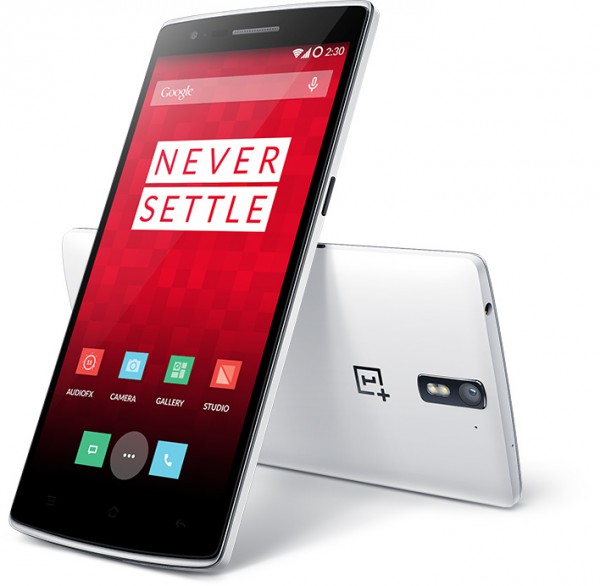
OnePlus has announced that it will soon be launching a pre-order system for its elusive smartphone, the OnePlus One.
The handset, which offers a premium Android experience for just $299 (£230) is currently only available via a random invite system.
This means that anyone wishing to own the handset can only do so if they are invited by a current owner of a OnePlus One phone or by entering contests and promotional events hosted on the OnePlus Forums or social media channels.
However, a company spokesperson announced during a Reddit AMA that the device could become more readily available.
"We are working on a pre-orders system, we were initially aiming for September but it's been slightly delayed, hopefully we'll be ready to launch it in October".
While this is no guarantee that there will be sufficient numbers of handsets to meet the demand, it does look like acquiring the smartphone will, at least, be a simpler process.
While the handset officially launched four months ago, users have found it harder than expected to get their hands on the device.
Aside from the invite-only system, the smartphone's release has also been delayed by a software error and a failure to comply with EU font regulations.
If fans do manage to get their hands on the device, they are likely to be impressed by the top-line specs and affordable price tag. The OnePlus One boasts a 5.5-inch HD display and a Snapdragon 801 CPU for half the price of the Samsung Galaxy S5 and HTC One M8.
Published under license from ITProPortal.com, a Net Communities Ltd Publication. All rights reserved.
-

Samsung will introduce a soundbar to match its curved TVs
Publié: septembre 3, 2014, 2:15am CEST par Barclay Ballard

Samsung is unveiling the world's first TV-matching curved soundbar, the HW-H7500/H7501.
The device is being introduced for this year's IFA event, and is designed to complement the firm's range of curved television sets.
The release is part of Samsung's "Total Curved Solution" and aims to complement the aesthetic design of the TV. The curved soundbar can be wall-mounted and can also be easily installed under the set, replacing the TV stand, without the need to drill separate holes in the wall.
The soundbar has a width of 42mm and a curvature radius of 4,200mm, replicating the Samsung Curved UHD TV. The new product will be compatible with both the 55 and 65 inch curved television sets.
Robert King, vice president of consumer electronics at Samsung UK and Ireland, said that the new device helps the firm meet its aim of providing an immersive experience for consumers.
"As the market leader in curved technology, Samsung strives to create the most complete home entertainment experience -- whether that's watching the latest 4K content on our Curved UHD TVs, immersing yourself in incredible surround sound or listening to the latest music throughout your home", he said.
The curved soundbar will feature 8.1 channel support with two speaker units on each side. Users will be able control the soundbar via their Samsung TV remote controls and wirelessly through TV SoundConnect.
The company also announced the launch of the latest addition to its Wireless Audio Multiroom line, the M3.
Similar to the M5 and M7, the M3 offers a more compact and affordable option for users looking to enjoy the multiroom experience.
There is currently no word on the release date or price range for the curved soundbar or the M3, but further details are expected before the end of the year.
Published under license from ITProPortal.com, a Net Communities Ltd Publication. All rights reserved.
-

Microsoft raises Azure availability, lowers prices
Publié: septembre 1, 2014, 11:24pm CEST par Barclay Ballard

Microsoft has announced service enhancements and a reduced price scheme for its Azure SQL database, as a result of customer feedback.
Microsoft has now promised to deliver a service-level agreement (SLA) of 99.99 percent availability, equivalent to a downtime of just 53 minutes per year.
This will come as a welcome increase from the 99.95 percent previously delivered, particularly given the number of Azure outages that have occurred in recent weeks.
The company has also confirmed price cuts of up to 50 percent compared with existing charges, in order to "help more customers benefit from higher performance and greater business continuity".
Alongside this, the firm has introduced a new low cost performance level called S0, enabling more customers to benefit from features in the Standard Tier. The monthly cost of S0 will be $15 (£9) and will be available from November, when the new price scheme launches.
Eron Kelly, general manager of product marketing for Microsoft SQL Server, said in a blog post that the company would be altering how it charges for the service.
"Azure SQL Database will move to hourly billing for the new service tiers. This will provide customers with greater flexibility to shift between service tiers and performance levels, based on demand patterns, to gain cost-effective, reliable performance", he said.
Kelly also added that his team were working on enabling independent software vendors (ISVs) to manage resources across databases rather than individually.
"For example, some SaaS ISVs may have a separate SQL database for each customer and as the activity of each database varies, they want to manage a pool of resources with a defined budget across these customer databases", he said.
Published under license from ITProPortal.com, a Net Communities Ltd Publication. All rights reserved.
Photo Credit: wavebreakmedia/Shutterstock
-

Edward Snowden claims NSA caused the 2012 Syrian internet outage
Publié: août 14, 2014, 9:59am CEST par Barclay Ballard

Edward Snowden has claimed that the US accidentally took most of Syria off the Internet while attempting to bug the country's online traffic.
Speaking to National Security Agency journalist James Bamford for Wired, the whistleblower claimed that a US intelligence officer told him that the NSA was responsible for Syria's disconnect from the web in late 2012, and not the Assad regime.
The NSA's Tailored Access Office (TAO), Snowden claimed, had been attempting to redirect traffic by exploiting a vulnerability in the router of a "major Internet service provider in Syria". This would have given the NSA access to enclosures in emails which would otherwise have remained inaccessible.
Snowden said that the TAO hackers inadvertently "bricked" the router, before unsuccessfully trying to cover their tracks.
"Fortunately for the NSA, the Syrians were apparently more focused on restoring the nation's Internet than on tracking down the cause of the outage," Bamford wrote. Snowden claims that someone at the agency joked, "If we get caught, we can always point the finger at Israel".
With the Syrian Internet outage lasting nearly three days, cutting off all traffic from the outside world, it is likely that the country's Telecommunications Establishment removed Syrian networks from Internet routing tables to stop further attacks while it discovered the cause of the disruption.
National television blamed terrorists for the outage, which began on 29 November, but outside media agencies speculated that the Assad regime may have instigated it to cut off communications to rebel groups.
The Syrian government had previously used illegally acquired network monitoring gear from Blue Coat to identify dissidents posting online.
Published under license from ITProPortal.com, a Net Communities Ltd Publication. All rights reserved.
-

IBM patent lets enterprises choose the location of their cloud data
Publié: août 12, 2014, 8:51am CEST par Barclay Ballard

IBM has developed a technique that should help enterprise firms manage where their cloud data is stored.
The technology could help businesses to comply with regional legislation regarding cloud content.
According to US patent no. 8,676,593, called "Geographic governance of data over clouds," the service enables companies to choose or change the location of cloud data, allowing them to more easily obey local regulations.
IBM said the invention should help companies overcome the challenge of managing and governing cloud content in accordance with the law in different countries.
The patent's abstract described the service as a, "method implemented in a computer infrastructure including a combination of hardware and software includes: receiving a request from a local computing device to save data on a network including a plurality of data storage locations in a plurality of different geographic regions".
The technology allows businesses to control where their cloud data is stored by acting as a smart routing device. Firms can mark or tag their data and store files in the appropriate location easily.
Sandeep Ramesh, co-inventor of the cloud data location patent, said that the new technology showed how far cloud computing had progressed. "During the early years of cloud computing, it was evident that storing and accessing business data across geographically dispersed cloud computing environments could present logistical and regulatory challenges. Our team of inventors designed a system that will allow businesses to efficiently manage and move data in the cloud, while meeting required compliance mandates in different countries".
Published under license from ITProPortal.com, a Net Communities Ltd Publication. All rights reserved.
-

Microsoft and iFixit launch a new gadget repair site
Publié: août 11, 2014, 8:48am CEST par Barclay Ballard
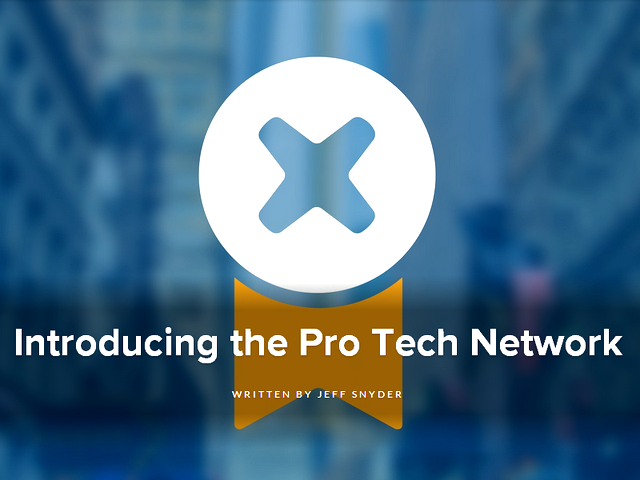
Microsoft and gadget repair website iFixit have announced the launch of Pro Tech Network, a service designed to teach more people how to fix gadgets.
The partnership should help give people the skills they need to fix devices, set up businesses and recycle the valuable materials within electronic products.
The Pro Tech Network will offer in-depth repair manuals, a community to ask questions and share advice and marketing tips.
Josh Henretig, Microsoft's group manager for Environmental Sustainability, believes the service could help cut down on electric waste.
"By providing free online training for people to set up a phone, tablet or PC repair business, we hope to increase the reuse of these devices," he said.
"Some studies have suggested that you would need to use a tablet or phone for tens of years before the usage footprint was larger than the manufacturing footprint. With this in mind, anything that can be done to extend the life of these smaller, low-power devices can have a positive environmental benefit".
iFixit regularly score devices on their "repairability," and so already have knowledge of how hard some products are to fix.
Director of marketing at iFixit, Jeff Snyder, said that his firm was pleased to partner with Microsoft and hoped it could help improve tech skills for many people.
"The explosion of mobile devices means the refurbishment industry will need new knowledge, tools and techniques to meet new challenges. The Pro Tech Network helps people learn to repair PCs, smartphones and tablets – and create businesses with these skills," he said in a blog post.
"Written by iFixit and sponsored by Microsoft, the Pro Tech Network collaboration ensures up-to-date business methods and repair documentation will be free and accessible, even as technology continues to change".
Published under license from ITProPortal.com, a Net Communities Ltd Publication. All rights reserved.
-

Wearable technology is easily tracked
Publié: août 4, 2014, 8:24am CEST par Barclay Ballard
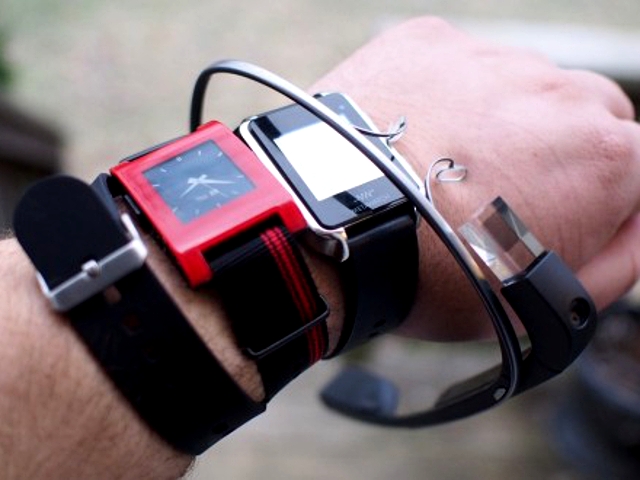
Users of wearable technology can have their information tracked with just $70 worth of hardware, according to a new study.
Research carried out by security firm Symantec used a simple set-up combining a Raspberry Pi computer and a Bluetooth radio module, to scan for signals. The technology was taken to parks and sporting events where it was able to record data being broadcast from gadgets close by.
At no point did the device try to connect to any wearables, but Symantec said the data could be collected because wearables are simple devices that communicate with a smartphone or laptop to pass on information.
Taking their device to public places in Switzerland and Ireland, researchers Mario Barcena, Candid Wueest and Hon Lau found that wearable gadgets were particularly susceptible.
"All the devices we encountered can be easily tracked using the unique hardware address they transmit," the team wrote in a blogpost.
Some of the devices were also vulnerable to being probed remotely to reveal serial numbers or other identifying information. The researchers revealed it would be "trivial" for individuals with computer knowledge to access this data.
The Symantec team said that the ease with which user data could be accessed was a major concern.
"The lack of basic security at this level is a serious omission and raises serious questions about how these services handle information stored on their servers," the report added.
Some apps also did little to secure data when traveling from the user to central servers. It was even possible to manipulate information to gain data about other users and cause databases to execute commands sent by external agents.
"These are serious security lapses that could lead to a major breach of the user database," the team said.
Published under license from ITProPortal.com, a Net Communities Ltd Publication. All rights reserved.
-

Internet.org brings free online access to Africa
Publié: août 1, 2014, 9:36am CEST par Barclay Ballard

Facebook is teaming up with mobile operators in Africa in order to bring the Internet to millions of people without online access.
The project, which is being headed up by an organization called Internet.org , is starting in Zambia and could bring benefits to millions who have no experience of the digital world, while also increasing Facebook's user base.
In an interview with the BBC, Guy Rosen from Internet.org explained that 85 percent of people who aren't connected to the Internet live in places with mobile phone coverage. Despite the widespread use of mobile phones in these areas, a lack of awareness and the relatively high cost of mobile data is preventing people from going online.
In Zambia, mobile operator Airtel has been offering a simple Facebook experience for free on mobile phones. Now it will offer an Internet.org app that will host Facebook along with various other web services, such as Wikipedia, job sites and weather and news updates all without charge.
Users can visit the Internet.org website to access the services, and will receive a warning when straying onto sites where data charges will apply. Only 15 per cent of Zambia's population of 15 million have used the Internet, but it is hoped that the new scheme will boost these figures. If successful, the project will be extended to other parts of Africa.
Airtel will forego revenue from the data in order to fund the scheme, although, perhaps surprisingly, it has been reported that Facebook will not be contributing to the cost of the data.
The scheme fits well with Facebook's long term business strategy, as it looks to grow its audience in Africa and other underdeveloped parts of the world. Already in some places on the continent, the words "Internet" and "Facebook" are said to be interchangeable and the new mobile data project is only going to cement this partnership.
Published under license from ITProPortal.com, a Net Communities Ltd Publication. All rights reserved.
-

Microsoft’s Sharks Cove is a Raspberry Pi-style mini-PC with Windows 8.1
Publié: juillet 30, 2014, 9:50am CEST par Barclay Ballard
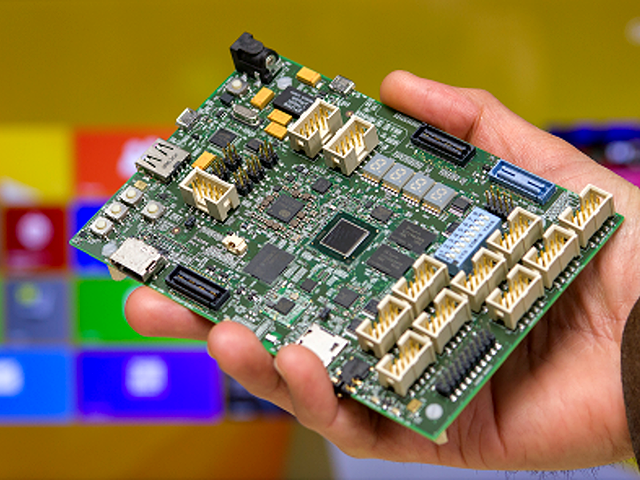
Microsoft is entering the development board market made famous by Raspberry Pi and Arduino.
The firm is collaborating with Intel and hardware manufacturer CircuitCo to develop the $300 board, called Sharks Cove. Available now for pre-order, the project is described as a "development board that you can use to develop hardware and drivers for Windows and Android".
The board contains an Intel Atom Z3735G, a quad-core chip with speeds of 1.33GHz to 1.83GHz. It has 1GB of RAM, 16GB of flash storage, and a MicroSD slot.
Microsoft stated in a blog post that the aim of the board is to help development of software and drivers for mobile devices that run Windows.
"At $299, this is a board that we believe will find a home with Independent Hardware Vendors (IHVs) and hardware enthusiasts alike. That price not only covers the cost of the hardware but also includes a Windows 8.1 image and the utilities necessary to apply it to the Sharks Cove. When you additionally consider that the Windows Driver Kit 8.1 can pair with Visual Studio Express and are both free with a valid MSDN account, the initial outlay for Windows driver developers is a lot less cost prohibitive than it once was".
With a significantly higher price point than alternatives such as the ARM-based Raspberry Pi, which is just $35, the Sharks Cove may have to target a different audience to sustain appeal. Other development boards such as the BeagleBone Black and MinnowBoard also come in at sub-$100.
However the Sharks Cove website suggests that the board will be able to find an audience in the developer marketplace.
"The primary target usage of the Sharks Cove board is for development of subsystems for Intel Atom based Tablets and Mobile devices, but this development board can be used for any Windows or Android based system which uses the Atom processor".
Published under license from ITProPortal.com, a Net Communities Ltd Publication. All rights reserved.
-

Honda's Asimo robot can now run, jump and recognize voices
Publié: juillet 18, 2014, 9:38am CEST par Barclay Ballard

The latest upgrade to Honda's Asimo has given the robot enhanced intelligence, the ability to run 5.6mph and enabled it to perform complex sign language.
Asimo was first introduced in 2000 and is seen as one of the leading attempts at creating a humanoid robot.
As well as giving Asimo enhance artificial intelligence, the most recent upgrades allow it to change its actions depending on what happens around it.
The ultimate goal is for Asimo, which stands for Advanced Step in Innovation Mobility, to provide assistance to various people in need, be it the elderly or those in disaster zones.
The four foot tall robot is not yet available to buy however.
Elements of Asimo's technology have already been successfully used to assist clean-up efforts at Japan's Fukushima nuclear plant.
Asimo's upgrades, which were revealed in Belgium on Wednesday, focus on enabling the robot to better understand the world around it and include the ability to distinguish different voices in a room, even when multiple people are speaking at the same time.
However, some have questioned the viability of Asimo as a helper robot, particular with its current development costs.
"It's great to see the results of research in human-robot interaction that Honda is doing, but the reality is that Asimo needs to be a lot cheaper before it's a household robot," said Andra Keay, managing director of Silicon Valley Robotics and a columnist for Robohub.
Keay thinks simpler robots, such as Jibo, a lamp-like household assistant, will hit the market sooner.
"Perhaps the direction that Jibo has taken is the most appropriate one right now -- minimum viable robot product to get maximal learning from human interaction. We're entering a rich age for deep machine learning from humans".
Published under license from ITProPortal.com, a Net Communities Ltd Publication. All rights reserved.
-

Yahoo's new mapping algorithm lets you take the happy route home
Publié: juillet 11, 2014, 12:24pm CEST par Barclay Ballard

Yahoo has developed a GPS algorithm that allows users to select a route based on how beautiful it is, instead of time or distance.
Yahoo Labs and the University of Torino conducted the Shortest Path to Happiness study in order to offer "emotionally pleasant" routes to users.
To determine which routes were the most "beautiful, quiet and happy," researchers used website UrbanGems, where users are asked to rank photos of London and Boston based on how aesthetically pleasing they are.
Based on votes from over 3,300 members of the site, looking at more than five million images of the two cities, the mapping algorithm generates alternative routes not determined by traditional factors such as distance or time.
"Based on a quantitative validation, we find that, compared to the shortest routes, the recommended ones add just a few extra walking minutes and are indeed perceived to be more beautiful, quiet, and happy," the study claims.
Yahoo's research is in sharp contrast to most mapping services, which focus only on the shortest routes.
For example, Google recently updated its Maps service to allow users to more accurately measure the distance between two or more locations.
While Yahoo's alternative routes are currently only available in Boston and London, the company stated that it would be looking to extend it to other US and European cities.
The firm did not confirm whether the new mapping algorithm would feature in any of its products, but the report did refer to its potential use in a smartphone app.
Published under license from ITProPortal.com, a Net Communities Ltd Publication. All rights reserved.
-

GCHQ faces legal action from ISPs over alleged spying and network attacks
Publié: juillet 4, 2014, 2:49pm CEST par Barclay Ballard

Seven internet service providers (ISPs) have filed a legal complaint against the UK's intelligence agency GCHQ.
Since a series of high-profile allegations made last year by US whistleblower Edward Snowden, government agencies have had to face claims of spying and intrusion but this is the first time GCHQ has faced legal action.
ISPs from the UK, US, Netherlands and South Korea are behind the complaint, alongside campaigners Privacy International.
A series of articles in Der Spiegel and the Intercept outline the claims which suggest that the GCHQ conducted illegal network attacks that undermined the "goodwill the organizations rely on".
Other allegations include that the GCHQ infected a Belgian telecommunications firm with malware in order to gain network access and that the agency used an automated system, called Turbine, to scale up network implants.
In a statement, Privacy International explained the reasoning behind the complaint. "The type of surveillance being carried out allows them [the ISPs] to challenge the practices... because they and their users are at threat of being targeted".
The group, which fights to defend privacy across the globe, has also previously filed cases against mass surveillance programs Tempora, Prism and Upstream.
The ISPs involved in the action are UK-based GreenNet, Riseup (US), May First/People Link (US), Greenhost (Netherlands), Jinbonet (South Korea), Mango (Zimbabwe), and the Chaos Computer Club (Germany).
Cedric Knight, from ISP GreenNet said, "Snowden's revelations have exposed GCHQ's view that independent operators like GreenNet are legitimate targets for internet surveillance, so we could be unknowingly used to collect data on our users. We say this is unlawful and utterly unacceptable in a democracy".
GCHQ has defending its practices, stressing that all its activities are carried out "in accordance with a strict legal and policy framework which ensures that our activities are authorized, necessary and proportionate".
Published under license from ITProPortal.com, a Net Communities Ltd Publication. All rights reserved.
-

Vaio launches its first laptops without Sony
Publié: juillet 2, 2014, 6:40pm CEST par Barclay Ballard
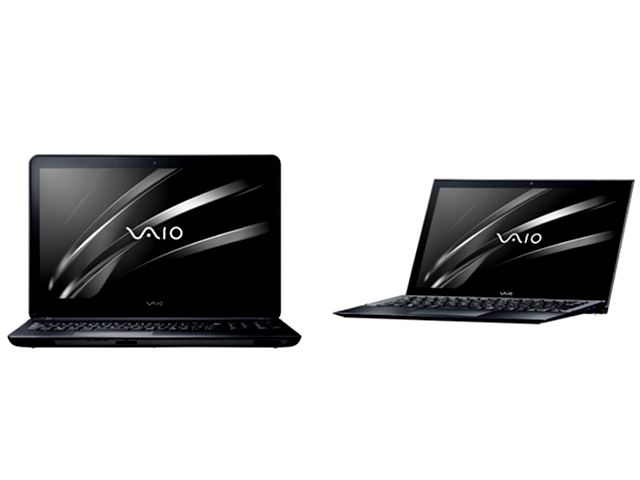 Sony agreed to sell Vaio earlier this year, but the latter has wasted no time in getting back into the laptop market.
Sony agreed to sell Vaio earlier this year, but the latter has wasted no time in getting back into the laptop market.Vaio has said it will continue to be a "small" PC maker after the sale and will have to alter its output accordingly, but the first two laptops that have been revealed look very similar to the Pro and Fit ranges that were launched 12 months ago under the Sony brand.
The Vaio Pro is listed in 11.6in and 13.3in models on the company's website, with up to 4GB RAM, Intel Core i7, 11.5 hours of battery life and a Windows 8.1 operating system. The Vaio Fit has a 15in screen, with largely similar specs.
Both laptops contain HD Triluminous displays, which was previously a Sony-only technology, and are currently only available in Japan.
There has been no word on an overseas release.
Sony agreed to sell its Vaio PC division to Japan Industrial Partners Inc. for an estimated $493 million earlier this year and while the two latest releases don't reveal much of a change in the company's output, it'll be interesting to see if Vaio can be a success without the Sony brand.
Published under license from ITProPortal.com, a Net Communities Ltd Publication. All rights reserved.
-

Samsung expecting a drop in Q2 profits following weak Galaxy S5 sales
Publié: juin 27, 2014, 8:24am CEST par Barclay Ballard
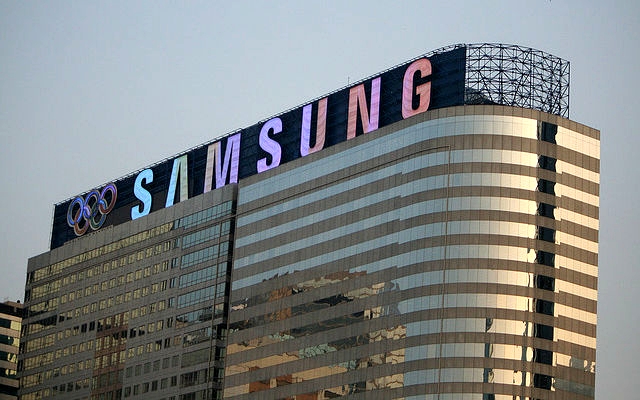
Samsung has told investors to expect lower than anticipated profits for its second quarter results for the fiscal year.
The news reinforces concerns over a year-on-year downturn and finance chief, Lee Sang Hoon has confirmed the financial woes.
With shares in the company declining by 1.9 percent this week, Lee stated that Samsung's second quarter earnings were "not that good." This comes after the company suffered an 8.5 percent dip earlier this month.
Part of the reason for the slump, is unsatisfactory sales of the company's flagship Galaxy S5 smartphone. Shipments of the handset have exceeded 11 million units, but it has not been confirmed how many of these have transferred into over-the-counter sales.
Another issue is the growing competition in emerging markets, particularly from Nokia's budget smartphones, which has meant reduced sales for Samsung's mid-to-low end devices.
Ji Sung Hae, an analyst at KTB Investment & Securities said, "Strengthening competitiveness of local players in emerging markets are hurting sales of Samsung's lower-end smartphones. The main reason behind the lowered earnings estimate largely stemmed from weak smartphone sales".
While Samsung sold one in every three smartphones last year, the news will still come as a reminder of the increasing competition in the smartphone market.
Samsung is expected to confirm its preliminary earnings for the second quarter early next month.
Published under license from ITProPortal.com, a Net Communities Ltd Publication. All rights reserved.
-

Lenovo preparing a Google Glass rival
Publié: juin 26, 2014, 8:49am CEST par Barclay Ballard
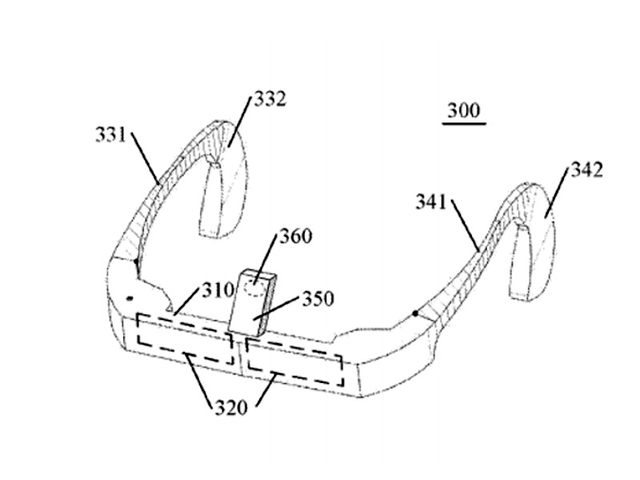
Chinese electronics giant, Lenovo, looks set to enter the wearable technology market after filing a patent for an "Electronic Device and Sound Capturing Method".
While the patent is careful to not use the word "wearable", perhaps to avoid any lawsuits with competitors, the images show a device that certainly bears a resemblance to Google Glass.
The device consists of an audio and video recorder and light-pump VOD displays from Lumus Labs, a company working on augmented reality glasses. In practice, the device would incorporate a wearable heads-up display and wireless communication through bone conduction microphones.
The product, which appeared on the United States Patent and Trademark Office website this week, is described as a recording device and it remains to be seen how it will match up against more established products in the wearable tech market.
The patent is also a bold move for the company which has yet to conquer the mobile space and is largely known through its ThinkPad range of products.
As with any patent, it does not necessarily follow that the pictured device will ever be made, but the fact that Lenovo seems willing to enter the field demonstrates the growing interest in wearable technology.
Published under license from ITProPortal.com, a Net Communities Ltd Publication. All rights reserved.
-

LinkedIn introduces its own job search app
Publié: juin 23, 2014, 11:45am CEST par Barclay Ballard

LinkedIn has launched its first standalone job search app that provides a dedicated service for users looking to search and apply for jobs on the social network.
The decision to release LinkedIn Job Search on iOS comes as no surprise, with 40 per cent of the network's 300 million users accessing the site on mobile devices.
The company also revealed that the free app would not publicise your job search to anyone else within your network.
"It can be hard to search for a job while you're at your desk, not to mention the potentially awkward conversation with your current boss", product manager Daniel Ayele said in a blog post. "Our goal is to help make this process easier for you and to help you be discreet. Everything you do within the app will be completely private and not shared with your network".
The app, which is currently only available in the US, is LinkedIn's latest attempt to make applying for jobs more accessible on mobile devices, and follows a similar update to the company's main app in August 2013.
New features available for LinkedIn Job Search include a more detailed, customizable job search function, tailored job recommendations based on your profile and a notifications service that tells you when new jobs are coming up or deadlines approaching.
The new app sees LinkedIn expanding the kind of content it offers and opening the platform up as a means of increasing traffic, and therefore, ad revenue. In the last quarter, "Talent Solutions", which includes recruitment advertising, made up 58 percent of LinkedIn's revenue at $275.9 million.
This sector also grew by 50 percent last year, providing a thriving area of growth for the company and the firm is likely to have noted the way other social networks like Facebook are diversifying their app portfolios with the standalone Messenger app and Slingshot.
The new app, which the company said will launch in other markets soon, faces stiff competition from already established job search apps, such as CareerBuilder and Monster.com, as well as many smaller competitors, like Proven, that emphasise user feedback.
Published under license from ITProPortal.com, a Net Communities Ltd Publication. All rights reserved.
Image Credit: Maxx-Studio / Shutterstock
-

Hyped OnePlus One smartphone sees yet another delay
Publié: juin 23, 2014, 11:41am CEST par Barclay Ballard

A shipment of OnePlus One smartphones heading for Europe has been delayed for two weeks due to having incorrect font on the back of the handsets.
In a somewhat embarrassing setback, Android World reported that the company explained to consumers the reasons for the delay to the prototype shipment in an e-mail sent this week.
"The issue stems from our vision for the design of the OnePlus One", the company said in the email. "For the back cover, we wanted the regulatory icons and text to be in harmony with each other and appear be as minimalistic as possible. In order to achieve this, we modified the CE icon to match the other icons".
With the EU known for its strict adherence to regulations, the shipment's rejection should come as no surprise, but this is not the first setback to hit the much-hyped smartphone.
Last week, it was revealed that a serious software error needed to be corrected before the handset could launch. OnePlus has offered the affected customers complimentary screen protectors and covers when the phone ships later this month.
The OnePlus One smartphone, which promises specs similar to the Samsung Galaxy S5, but for a fraction of the cost at £229, has the potential to shake up the Android phone market, but the latest in a series of issues will leave consumers wary that the device really is too good to be true.
Published under license from ITProPortal.com, a Net Communities Ltd Publication. All rights reserved.
Photo Credit: Ljupco Smokovski/Shutterstock
-

Paedophile use of dark net increases for child abuse images
Publié: juin 20, 2014, 12:10pm CEST par Barclay Ballard

Tens of thousands of paedophiles are using the dark net to circulate images of sexual abuse, according to a report by the BBC.
The National Crime Agency said that abusers were increasingly turning to encryption software to maintain anonymity. The dark net is a hidden part of the Internet which can only be accessed by special software, one of the most popular of which is the TorBrowser.
This enables people to use Tor, an "onion-routing" system, which bounces encrypted data through several randomly selected servers on the network, making a PC's net address untraceable.
Paedophiles are using the TorBrowser to access chat rooms where they circulate illegal images. One such site received up to 500 page views a second, and information suggests that British paedophiles are heavily involved in producing and sharing obscene images.
Many of the dark net sites cannot be accessed using a standard search engine, and so Tor, which was first developed by the US military, has to be used. It has also been known to have positive applications, particularly in parts of the world where oppressive regimes attempt to curtail free speech. During the Arab Spring, for example, activists used the TorBrowser to escape detection.
During the BBC investigation, the broadcaster contacted an active paedophile who ran one of the illegal chat rooms, until it closed in May 2014.
"We had over 40,000 user accounts on the site. We used to get sometimes 500 page views per second. My own collection is 12 gigabytes", he said.
Although undercover officers try to get the paedophiles to reveal their identities online, it is often a difficult process. Last November, Prime Minister David Cameron, held a summit on online safety in which he hoped spy agencies would co-operate with the police force to apprehend the abusers.
"That expertise is going to be brought to bear, to go after these revolting people sharing these images on the dark net", he said.
While the amount of child abuse imagery on the Internet is growing, the founder of DeepDotWeb.com, which reports on the dark net, stressed that the majority of users are "disgusted" by the paedophile sites. He added, "The deep web is still, just an open reflection of the real world thanks to its anonymous conduct, so this problem needs to be tackled in the real world.
"The deep web is nothing more than a peep hole into this unfortunate reality."
Published under license from ITProPortal.com, a Net Communities Ltd Publication. All rights reserved.
Photo Credit: scyther5/Shutterstock
-

Kim Dotcom offers $5m reward in Megaupload piracy lawsuit
Publié: juin 10, 2014, 8:38am CEST par Barclay Ballard

Megaupload founder Kim Dotcom is offering $5 million to whistleblowers willing to help him fight his online piracy case. The German national believes that the information being used against him by the US and New Zealand governments was obtained illegally.
"We are asking for information that proves unlawful or corrupt conduct by the US government, the New Zealand government, spy agencies, law enforcement and Hollywood," he said in an interview with TorrentFreak.com.
"It is the opinion of my legal team that disclosure of such information would be lawful. I would also guarantee any whistleblower coming forward would have the best legal representation at zero cost".
Dotcom, who was estimated to have a net worth of $200 million in 2012, is offering the reward to anyone who can help prove his allegations, as he fights one of the largest copyright infringement cases ever.
The FBI and US Justice Department claim that Megaupload acquired over $175 million in illegal proceeds and cost copyright owners more than $500 million in pirated material. The site was shut down in 2012, but Dotcom re-launched the venture under the name 'Mega' last year.
Dotcom is currently living in New Zealand, where he is resisting extradition to the US and the trial, which could see him face a jail term of 20 years for racketeering, money laundering and copyright theft.
The extradition hearing, which has been delayed several times due to claims over evidence disclosure, is set to begin in Auckland on 7 July. The Internet entrepreneur has previously faced criminal charges for computer fraud and embezzlement.
Read more: Law experts claim Megaupload prosecution Is unconstitutional
Published under license from ITProPortal.com, a Net Communities Ltd Publication. All rights reserved.
-

There's a Nokia X successor in the pipeline
Publié: juin 6, 2014, 8:58pm CEST par Barclay Ballard
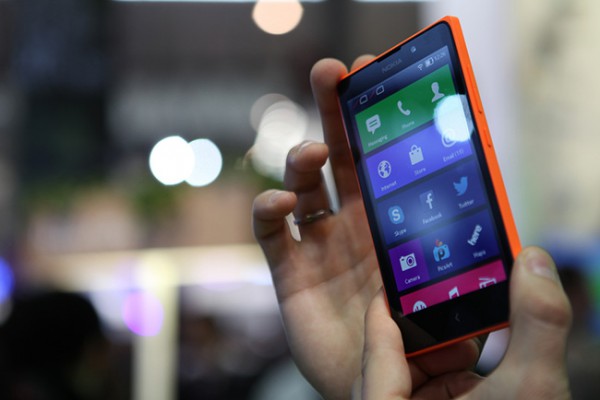
At February's Mobile World Congress (MWC), Nokia surprised everyone with the release of its Android-powered phone, the Nokia X, but now it looks like there already are plans for its successor.
Despite Microsoft's recent acquisition of the Finnish phone manufacturer's mobile business, the company looks set to swiftly follow-up on Nokia's first foray into Android phone territory, with the Nokia X2.
Sources claim that the phone is likely to be revealed in late June and unconfirmed specs have already emerged for the device. According to AnTuTu.com, the phone will come with a 4.3-inch screen complete with an 800 x 480 pixel resolution, a 1.2GHz dual-core Snapdragon 200 processor, 1GB of RAM, and a 5-megapixel camera.
The phone is also expected to run a heavily modified version of Android 4.3, with the user interface maintaining the Windows Phone feel of the first handset.
The Nokia X was heavily criticised for not having a designated home button and rumours suggest that this will be addressed with the launch of the new device. The first phone was also marketed as a starting point for first-time smartphone users with its low price tag of just €89 (£73) and the above specs seem to suggest that this will continue with the next iteration.
While it's true that the first Nokia X was aimed mainly at emerging markets, if its successor does indeed retain its low cost combined with improved specs, the X2 could become a serious consideration for the UK market too.
Published under license from ITProPortal.com, a Net Communities Ltd Publication. All rights reserved.
-

Android may get touch-friendly Office apps before Windows 8.x
Publié: juin 5, 2014, 6:05pm CEST par Barclay Ballard
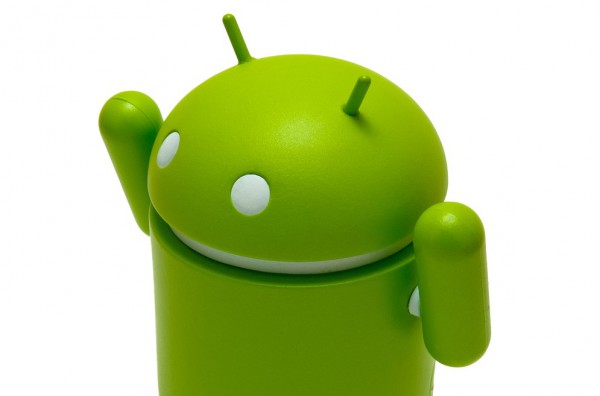
Since his appointment as CEO in February of this year, Satya Nadella has made it clear that Microsoft needs to be more than a one-platform developer. Still, it may come as some surprise that the Android version of the latest touch-optimized Office suite will be released months before the Windows 8 variant.
Office's user base across PCs remains high, but in order to target mobile users, the majority of whom are on Android or iOS, the company is making a clear statement that it won't neglect these consumers.
At last week's Code Conference, Nadella said, "There are going to be Windows devices and there are going to be other devices and we have to make sure our services run on all of them".
According to ZDNet, the Android versions of the touch-screen apps are likely to be available by the end of the year, with the Windows version not arriving until spring 2015. While the news may come as a disappointment to Windows users, sources indicate that the later release date is more than just a coincidence.
Microsoft's Windows 9 is rumoured to launch at this time and is likely to include at least one version that doesn't include a desktop, at which point the Windows version of the touch-first Office suite should come into its own.
With the latest news following on from March's Office for iPad announcement, it seems clear that Microsoft is not willing to limit itself as a developer, as it looks to increase its market share across all platforms.
Published under license from ITProPortal.com, a Net Communities Ltd Publication. All rights reserved.
Photo credit: Marc Bruxelle/Shutterstock